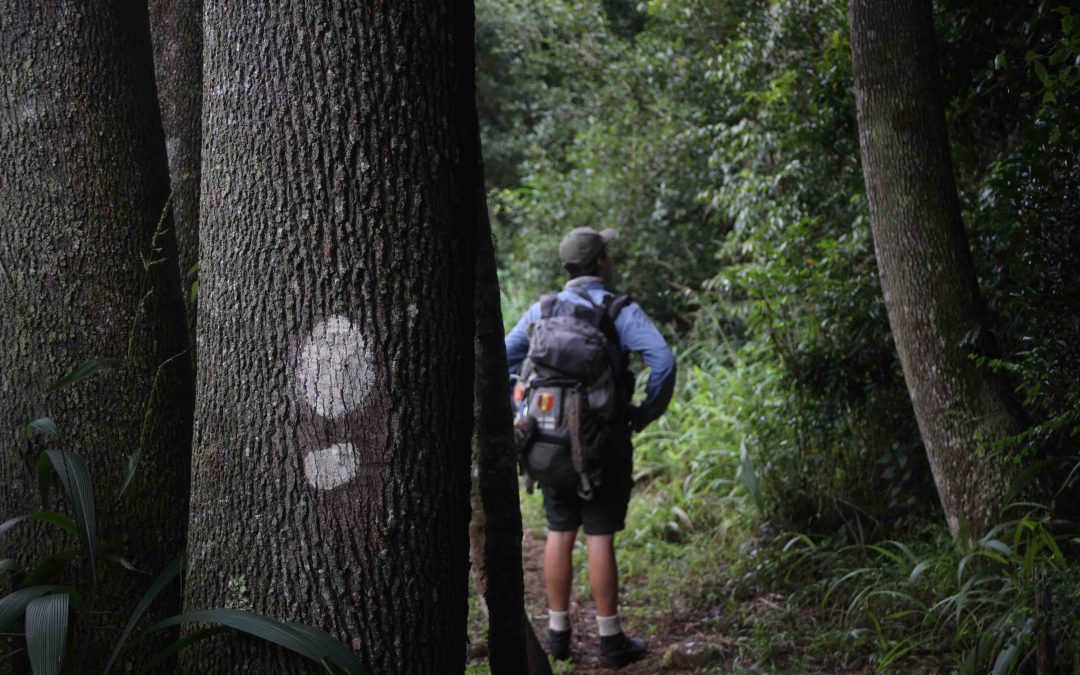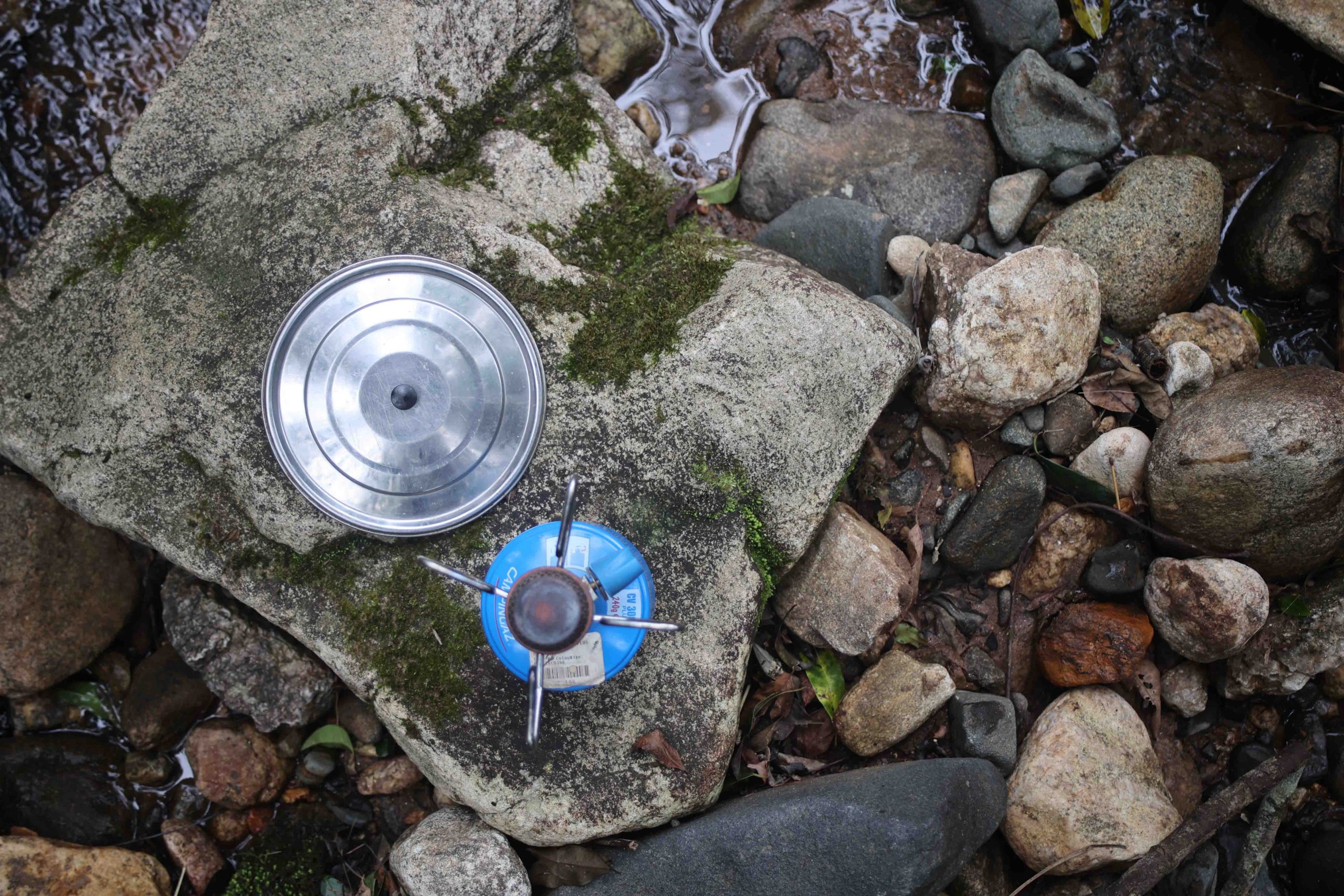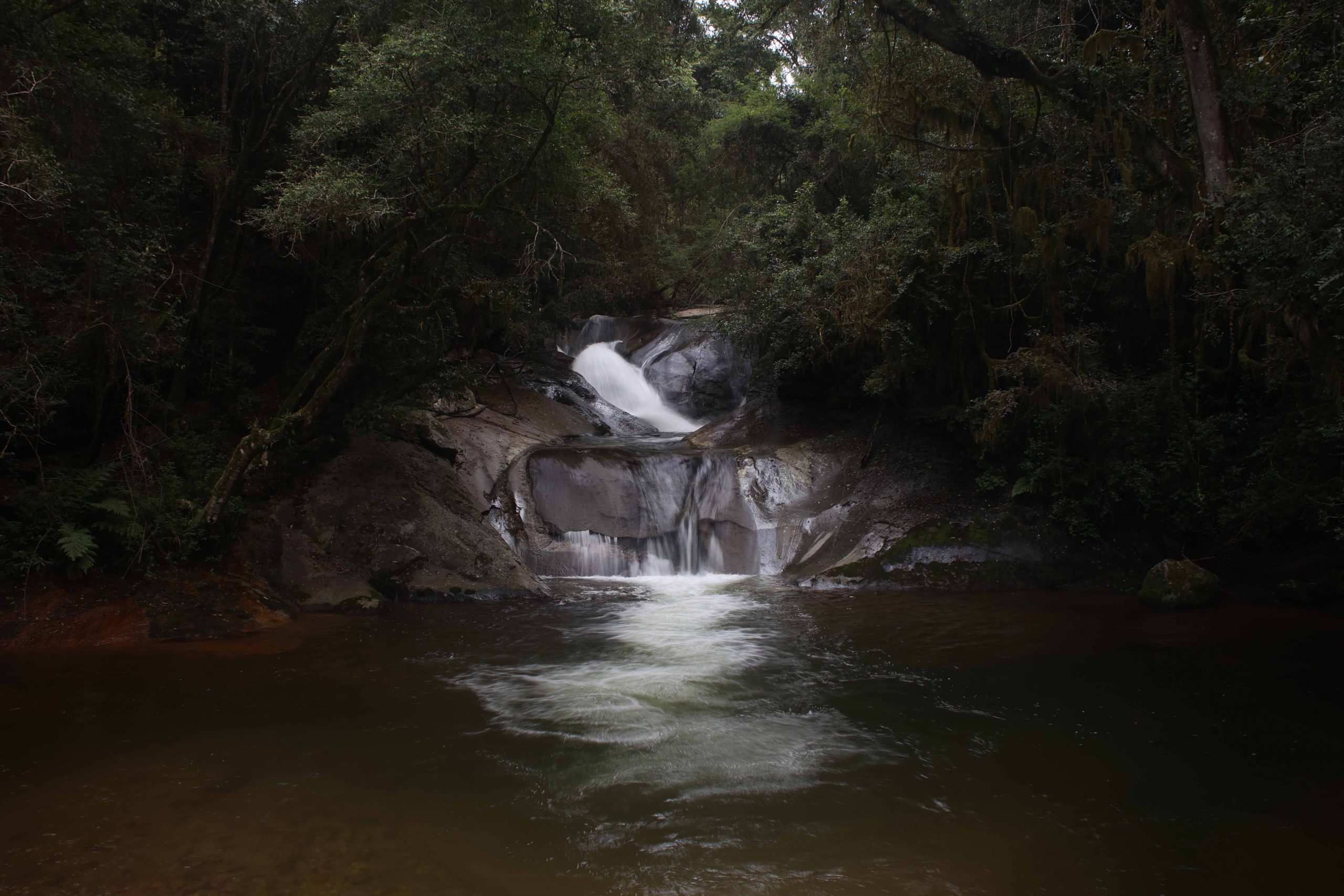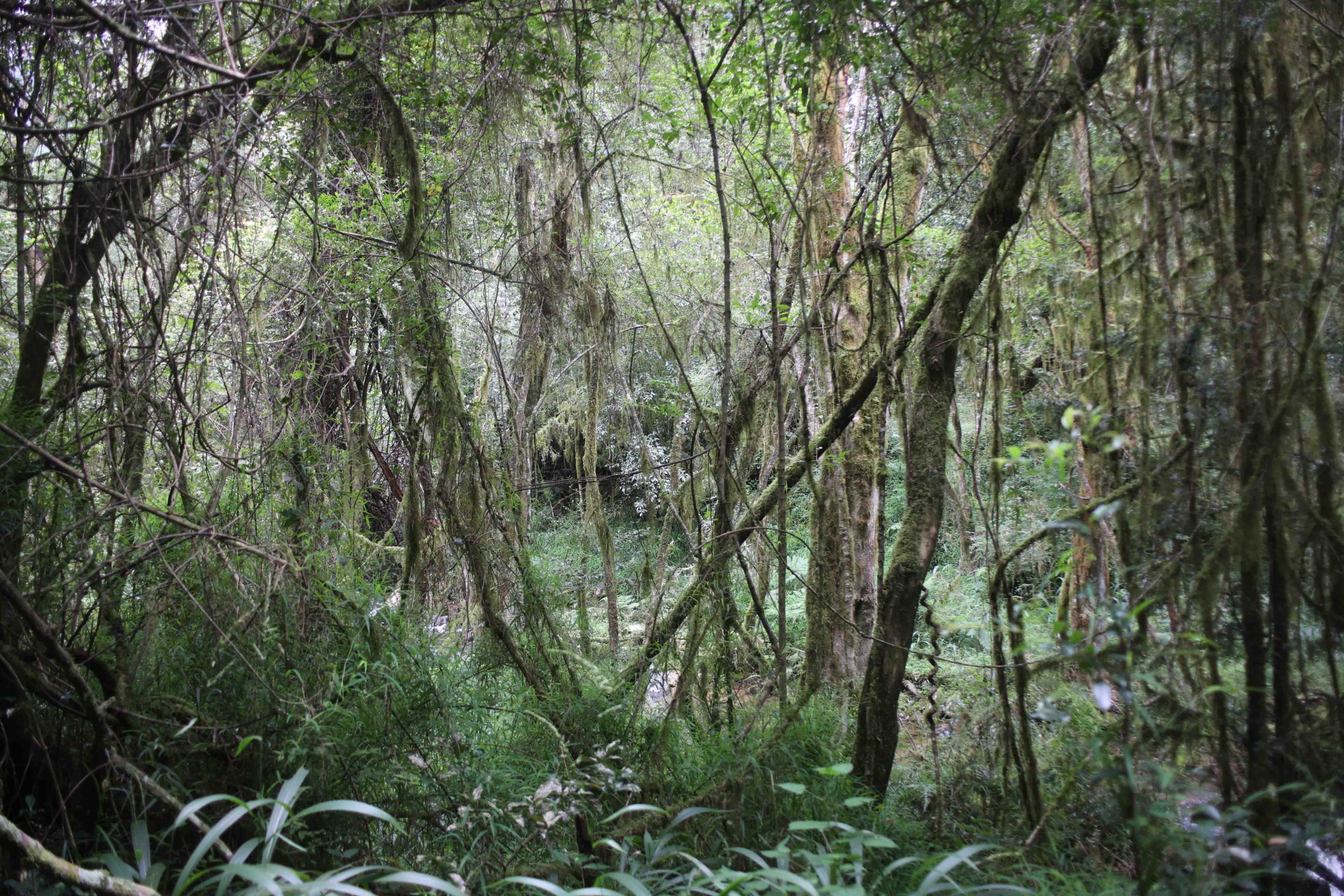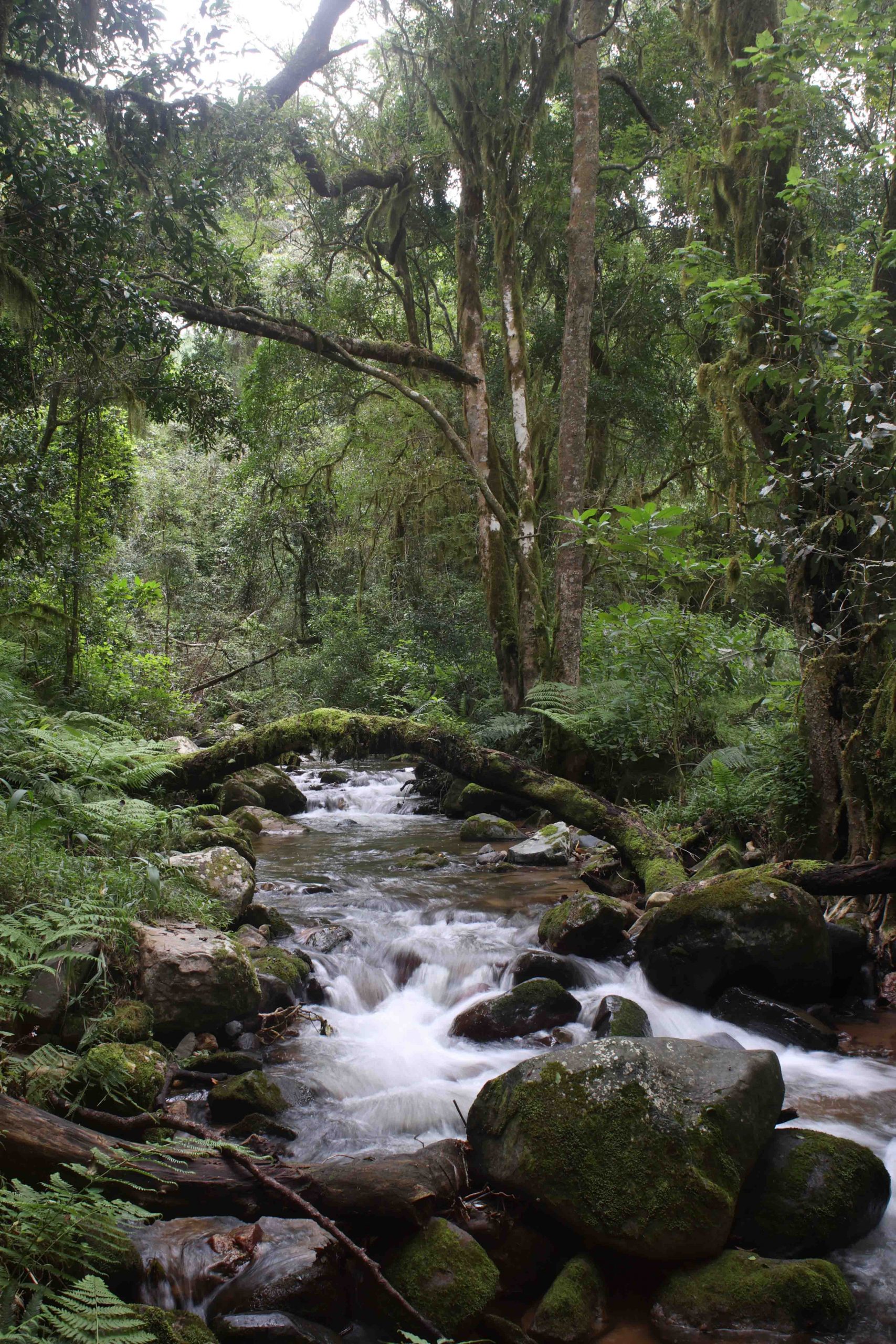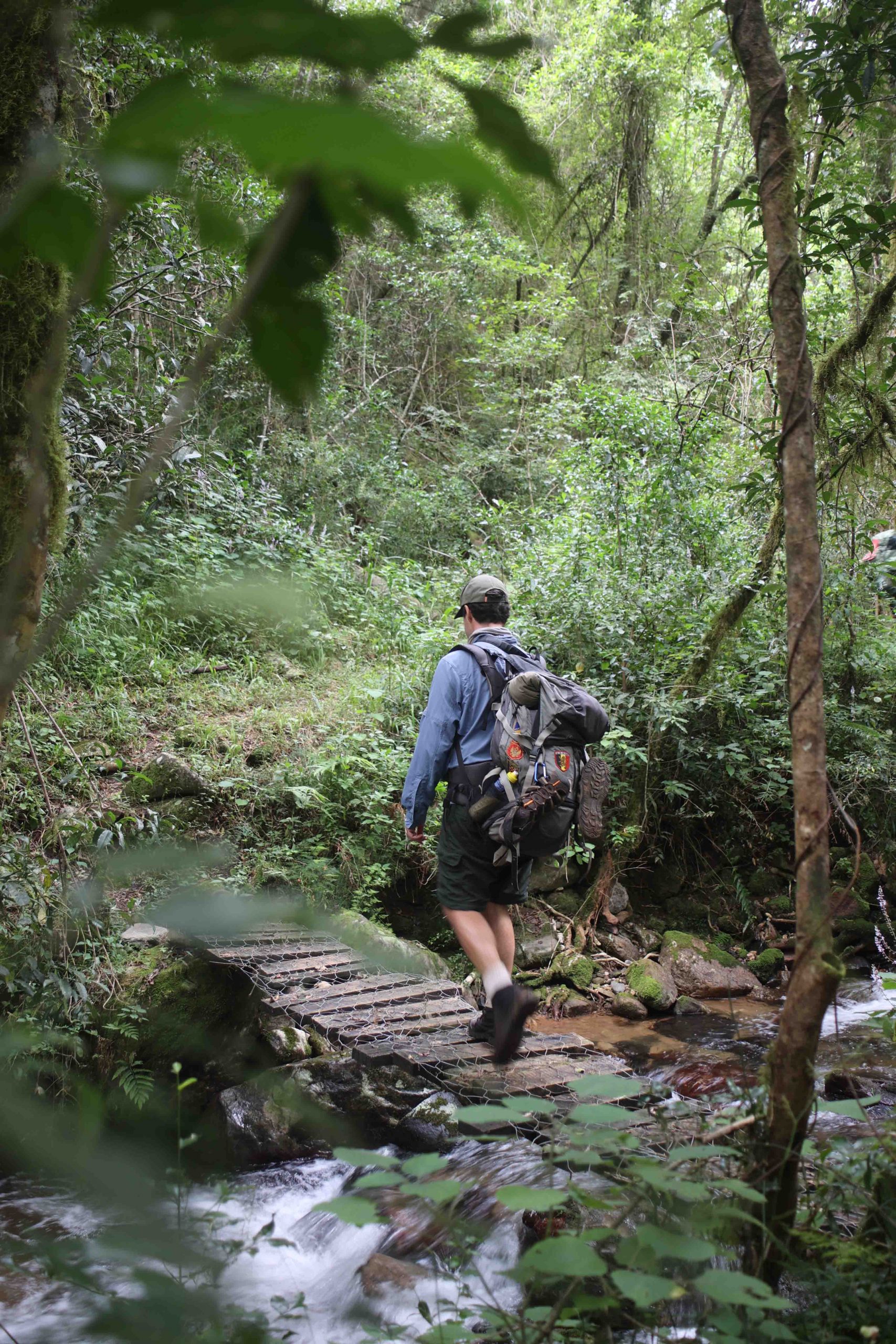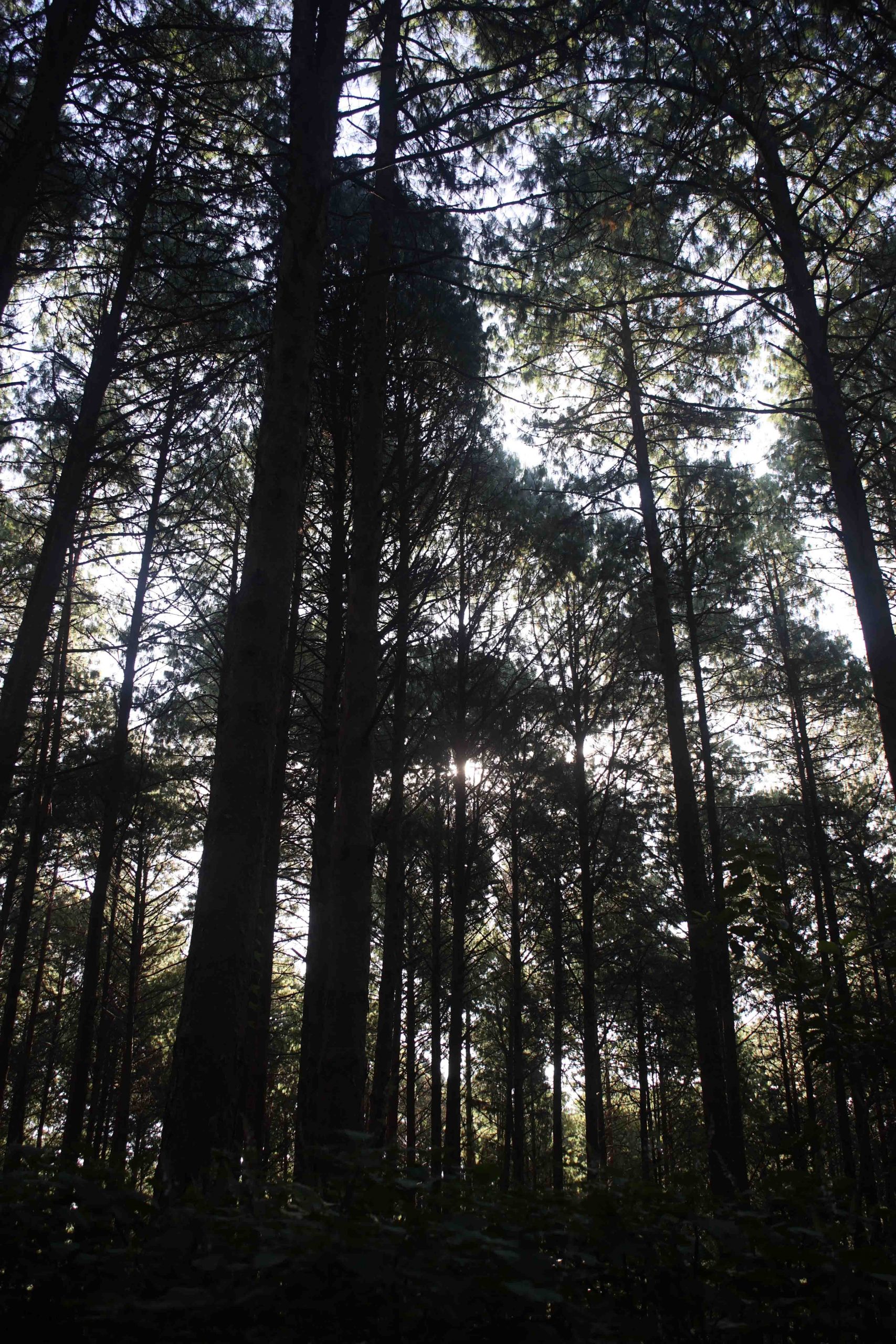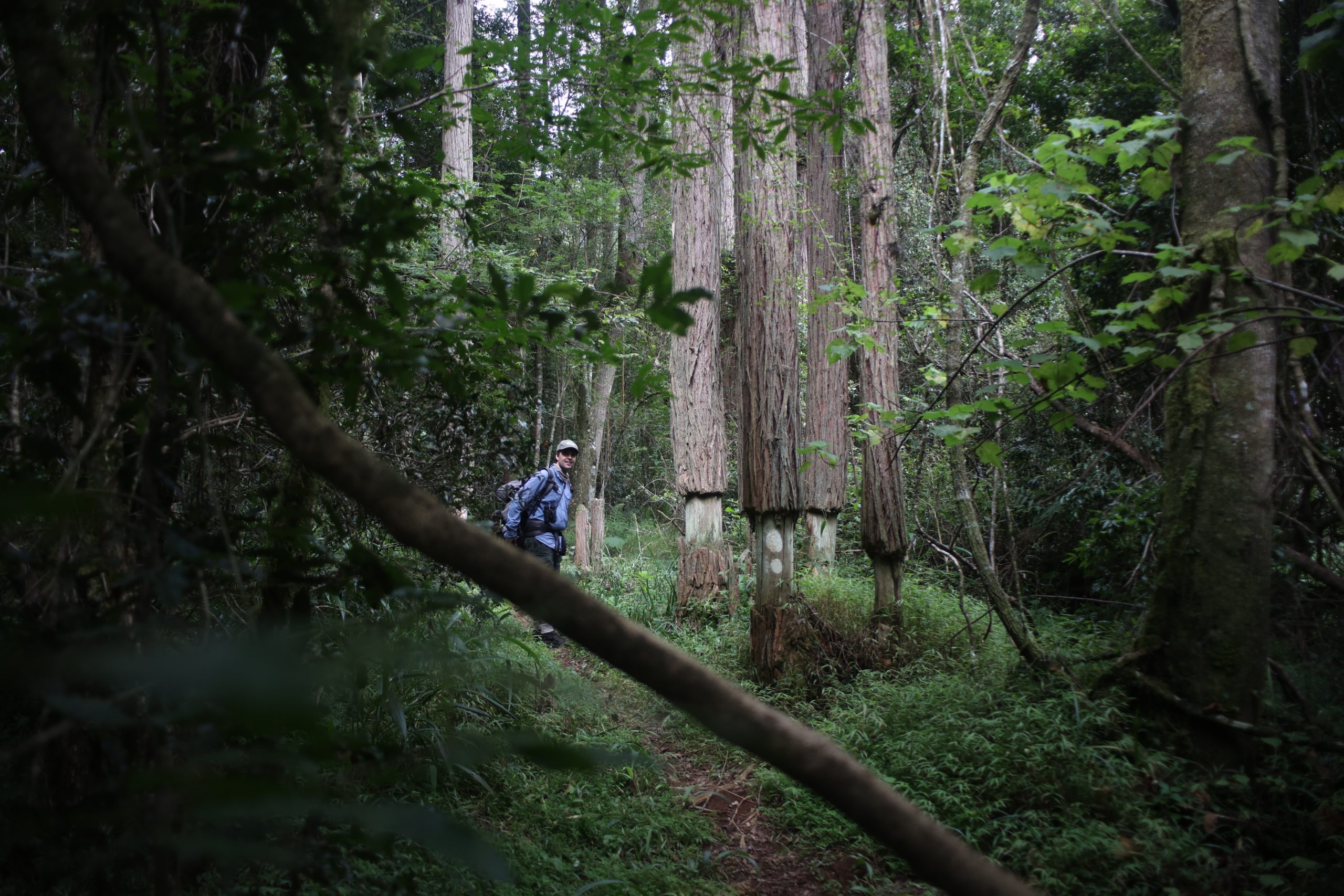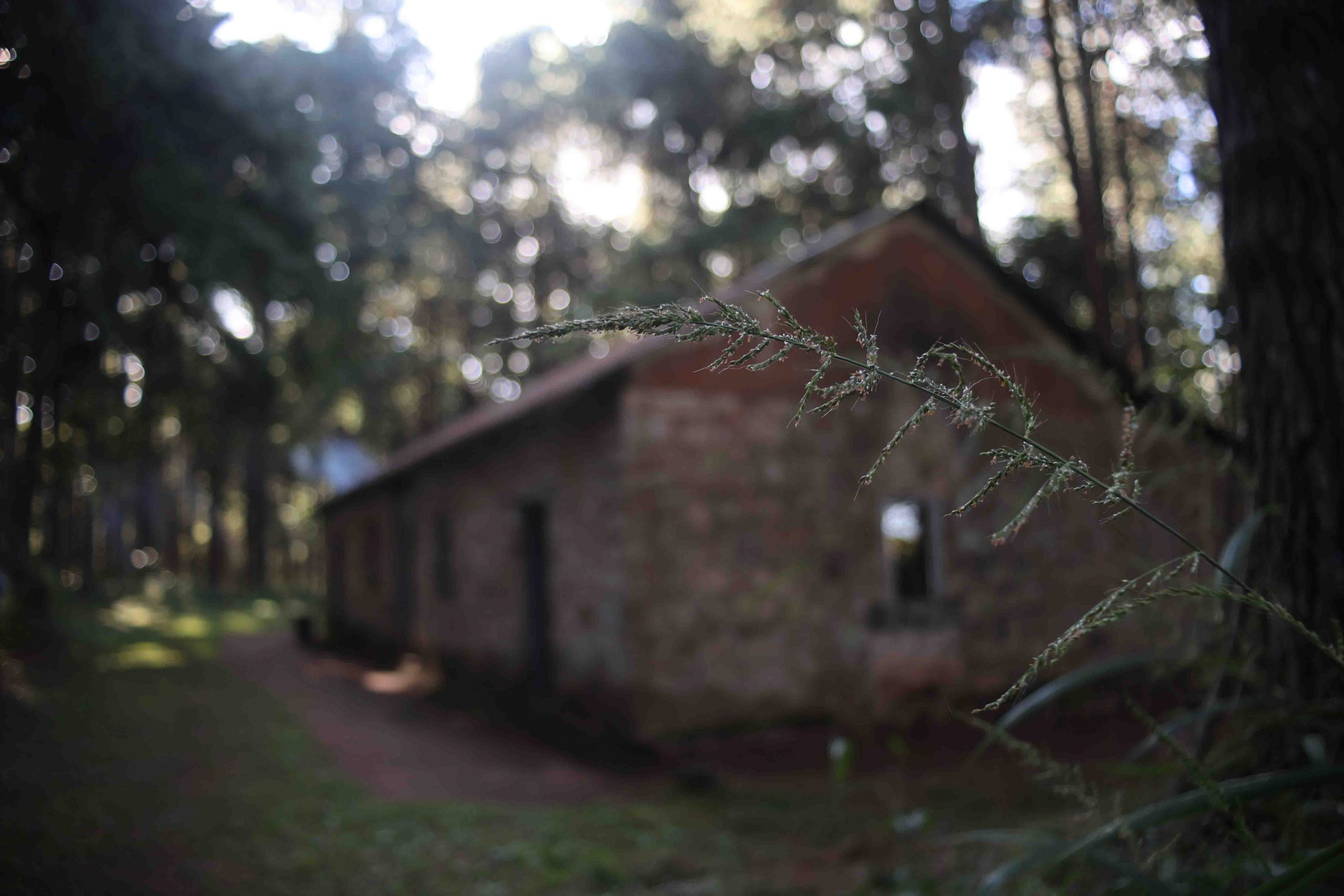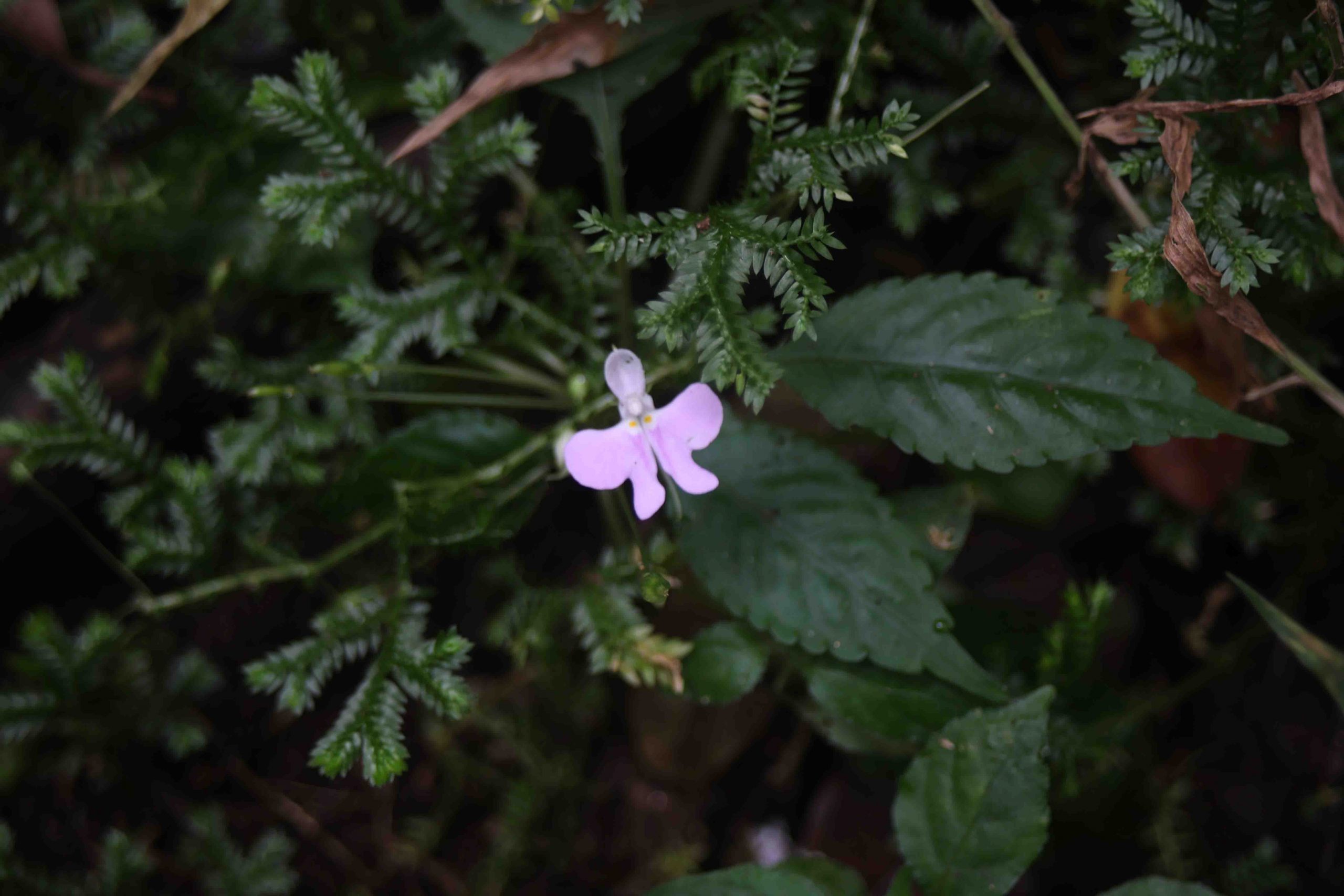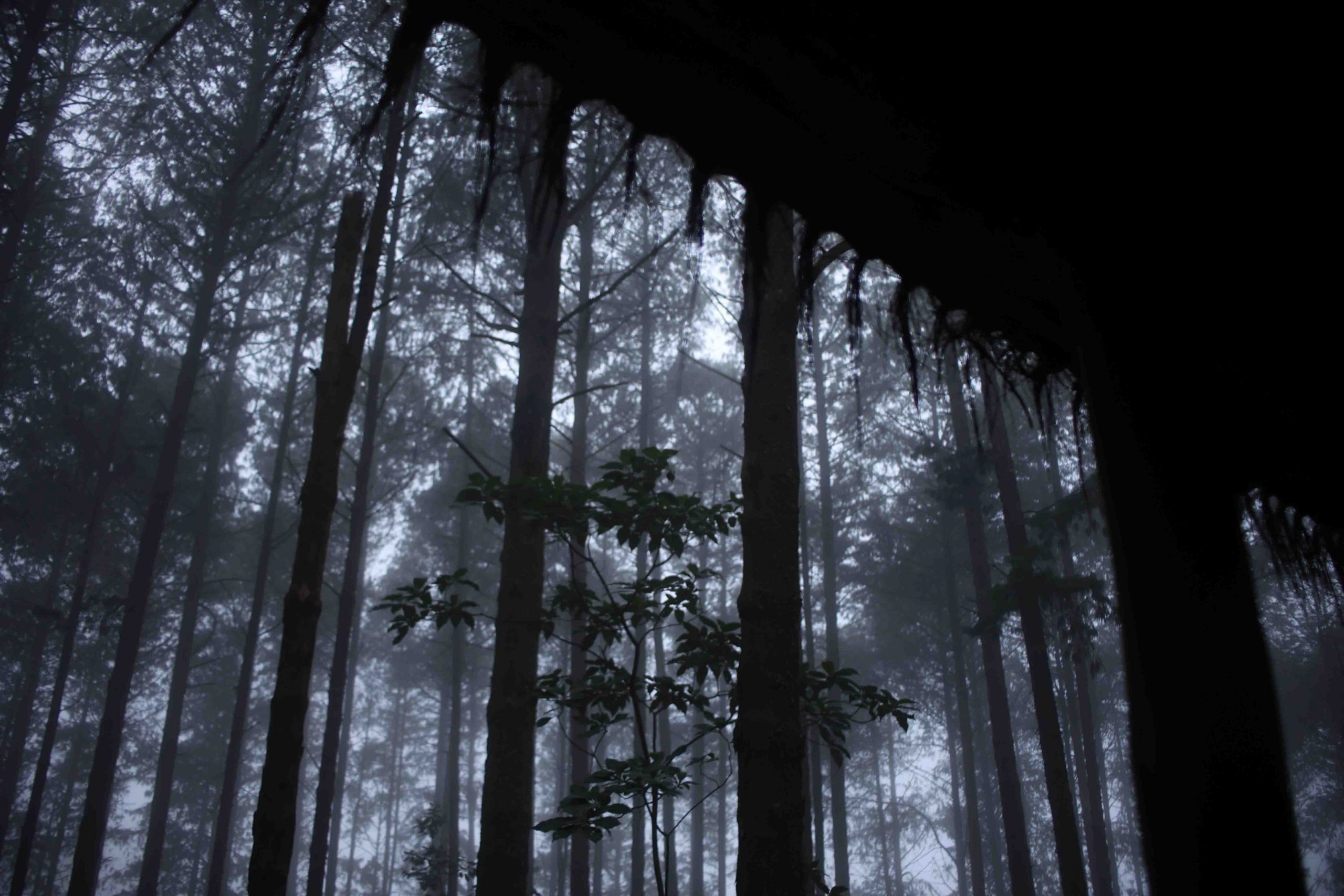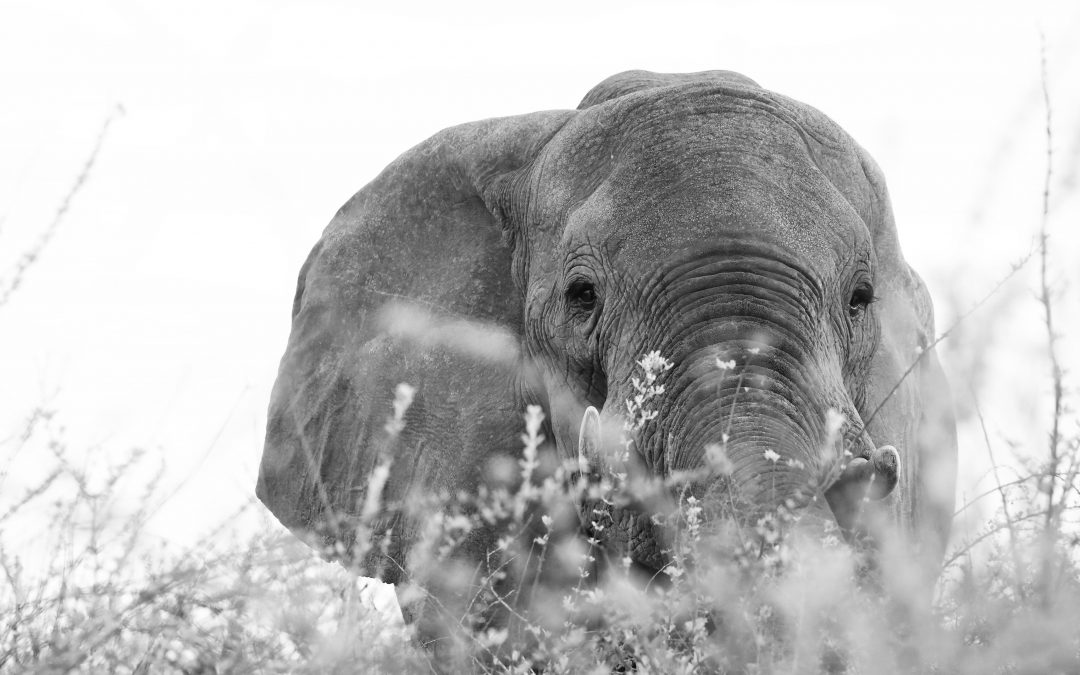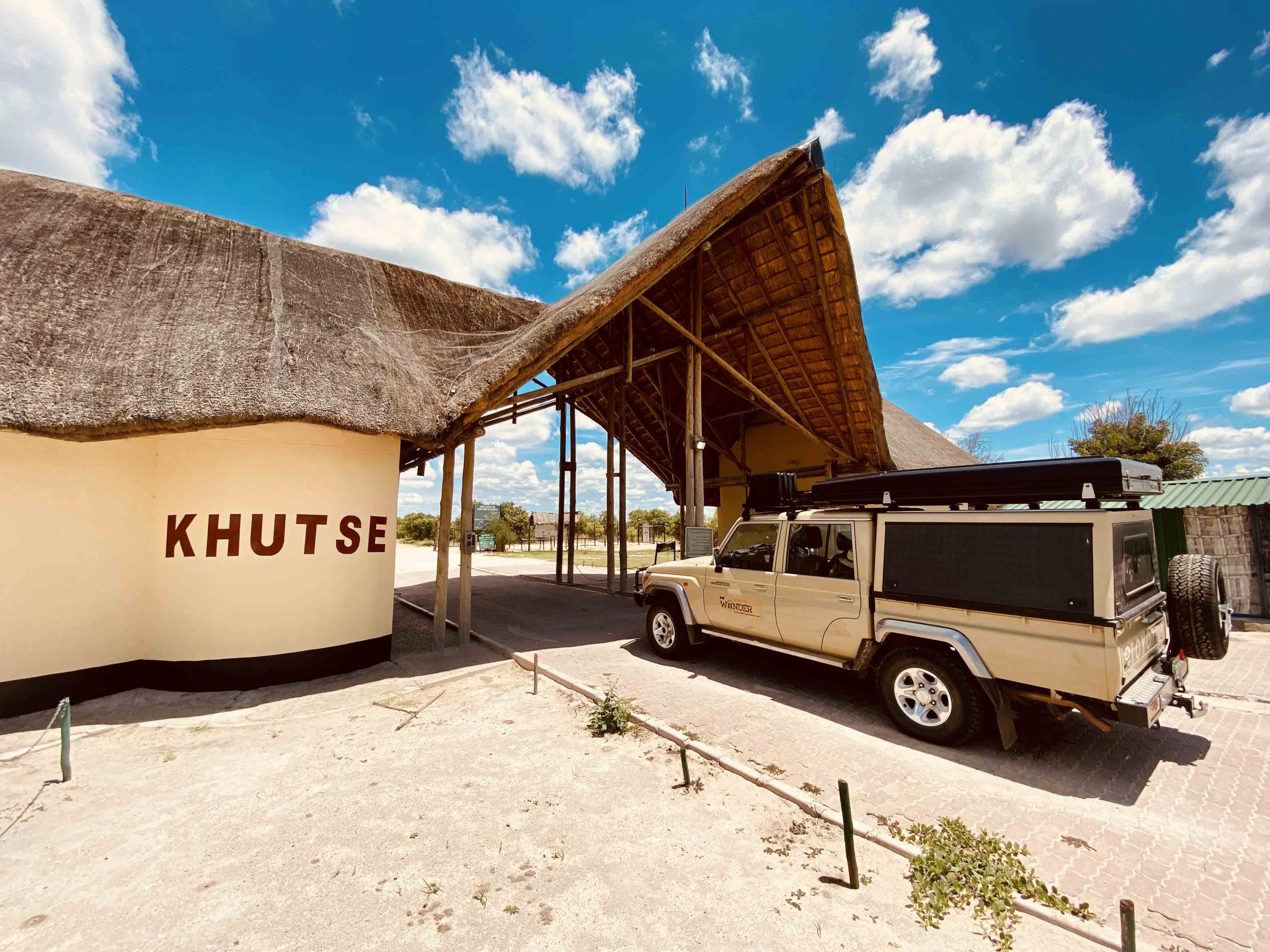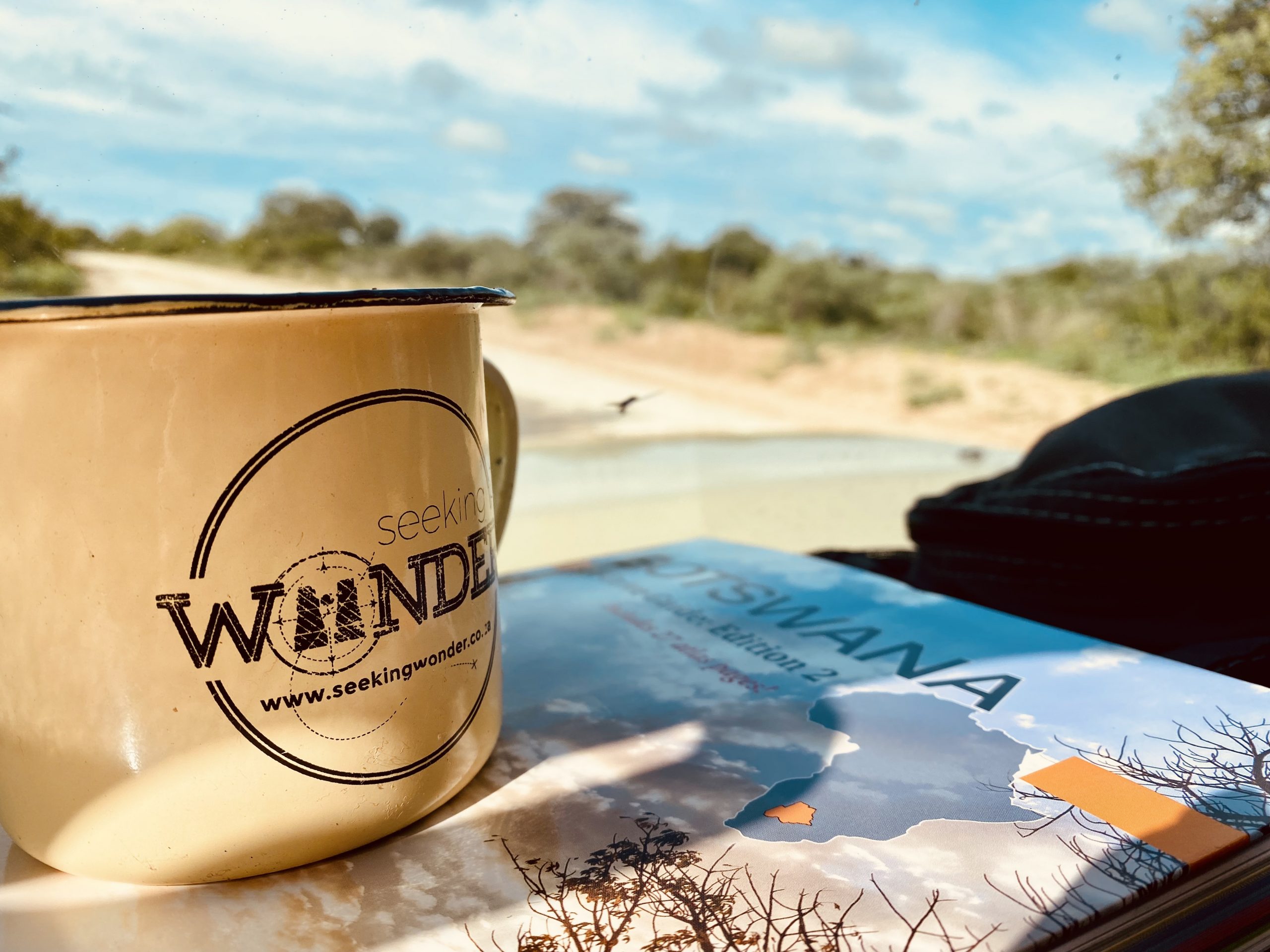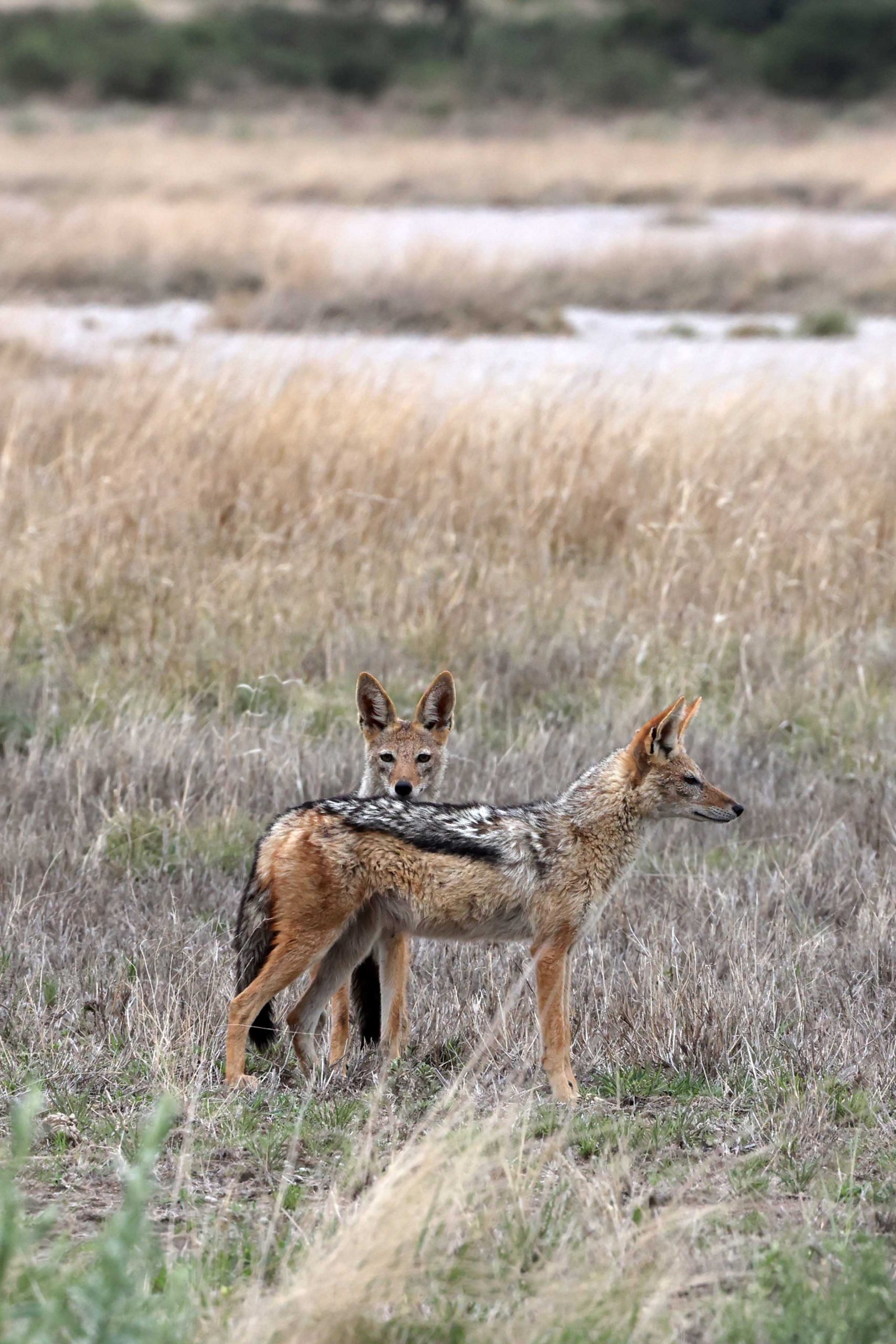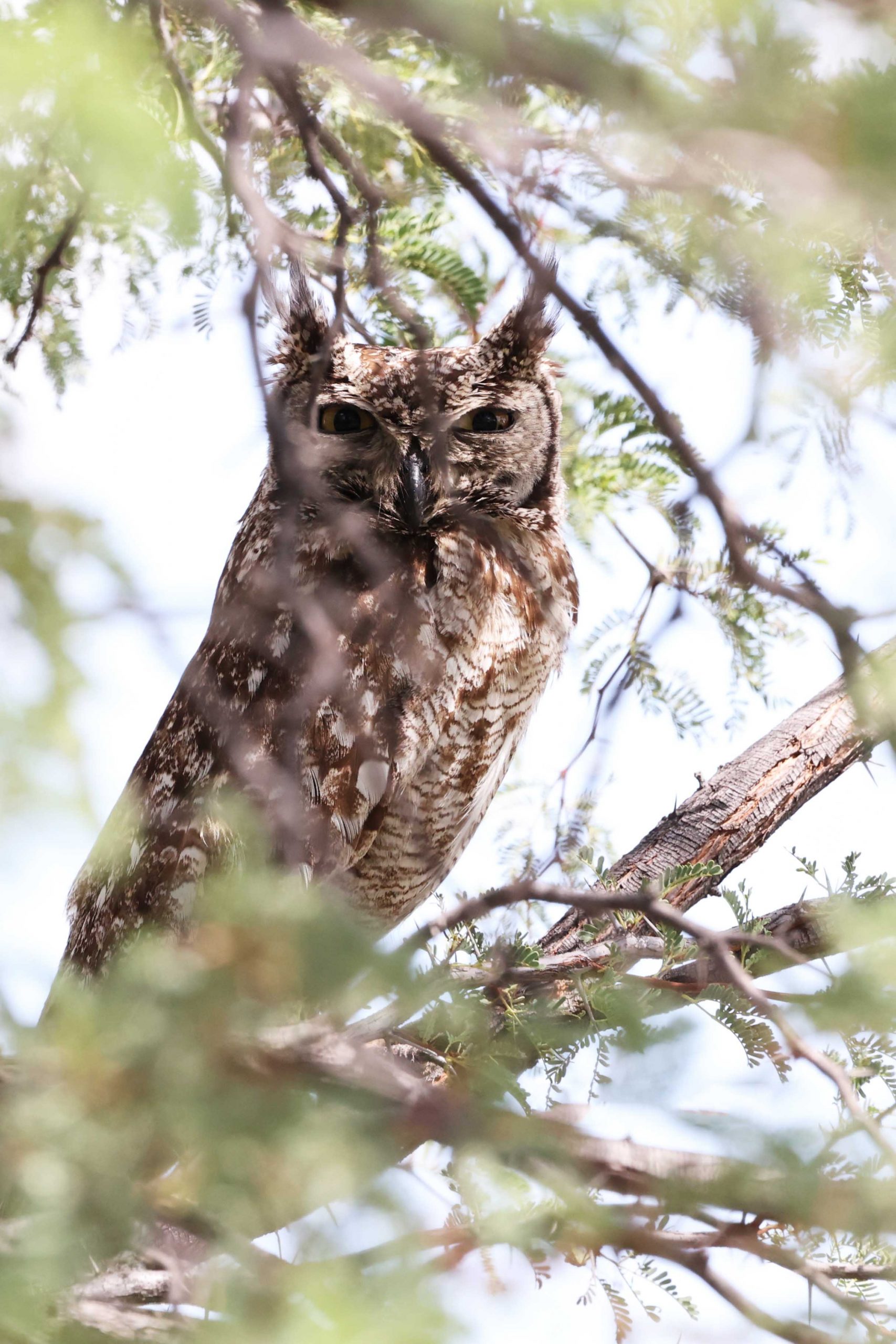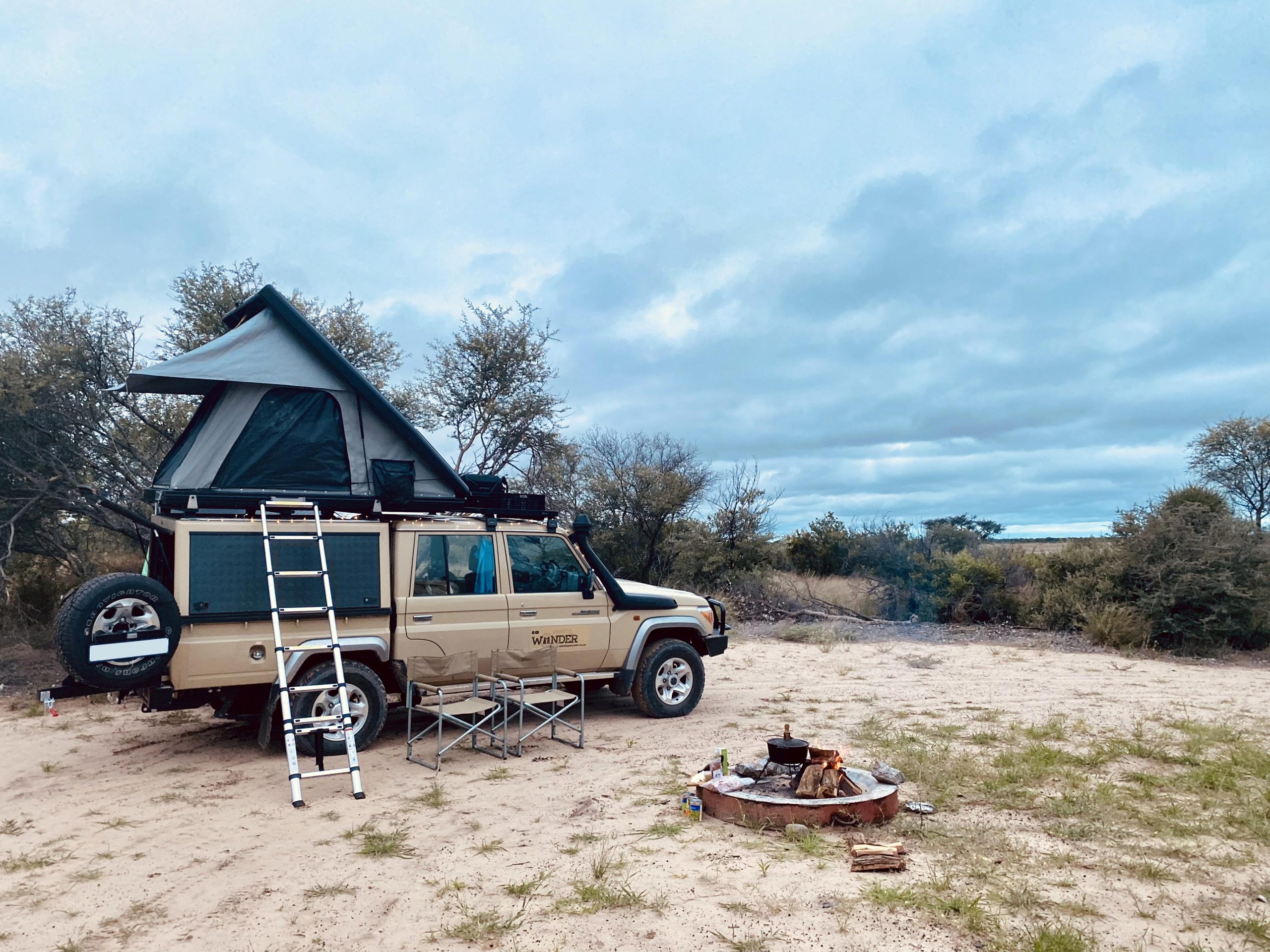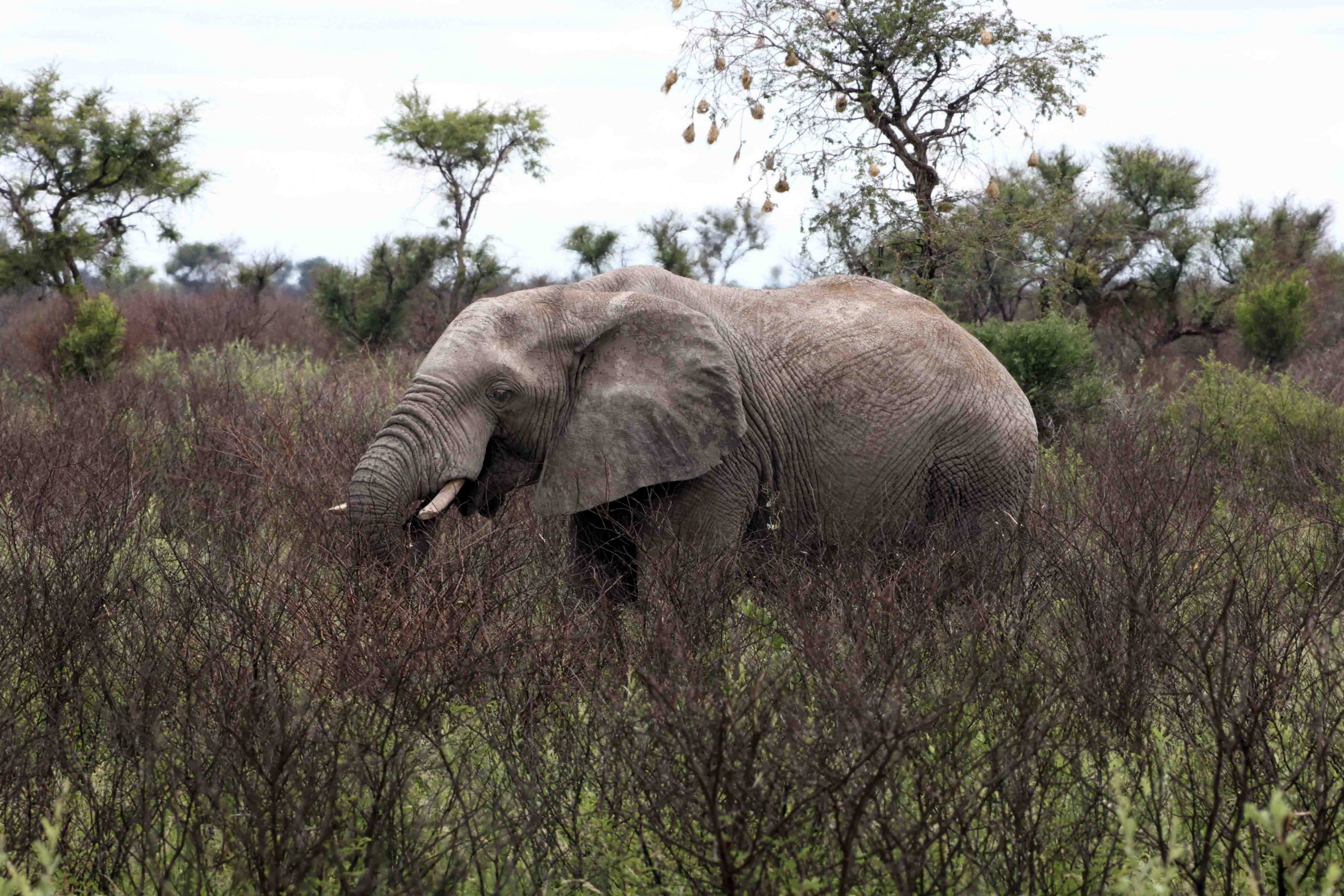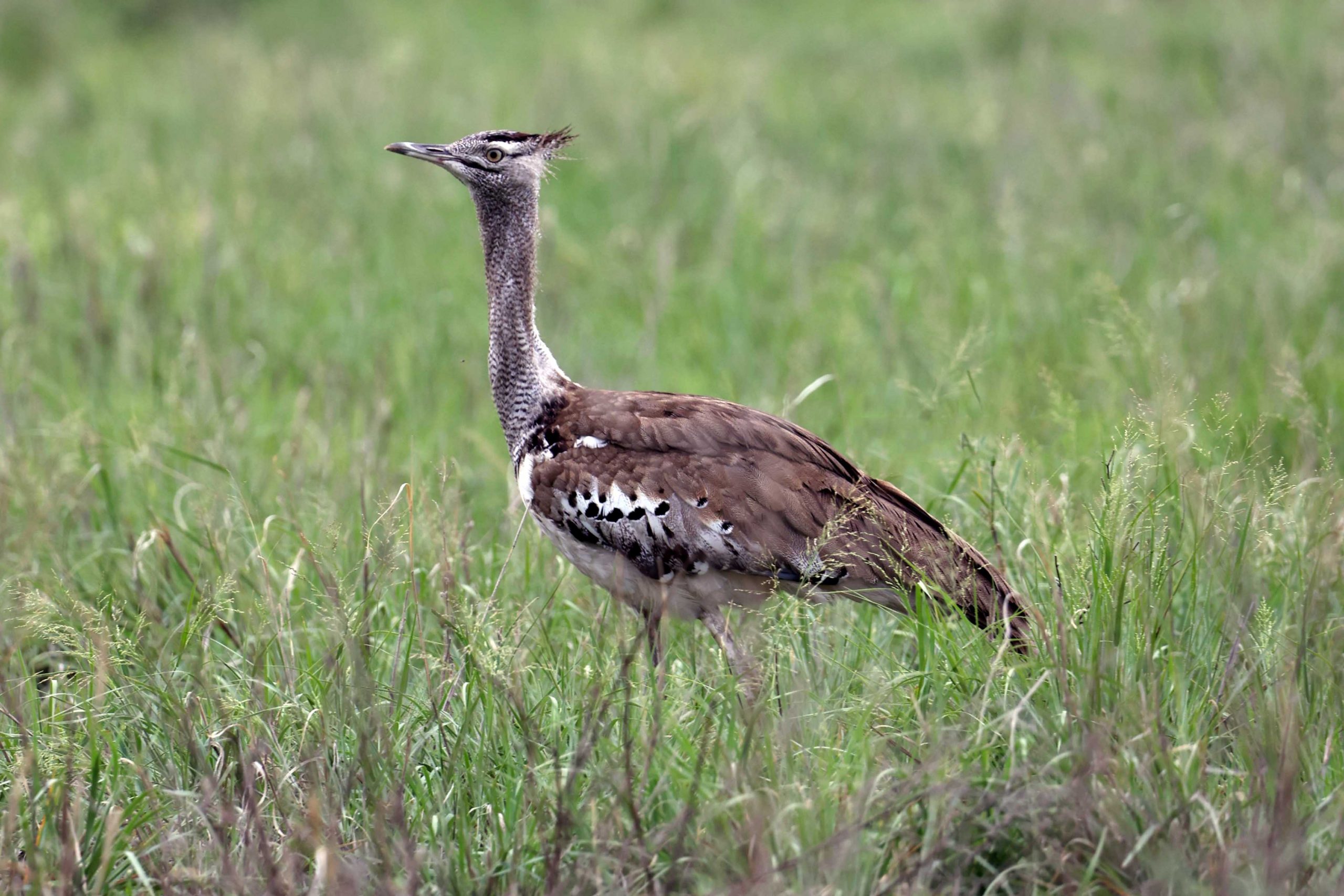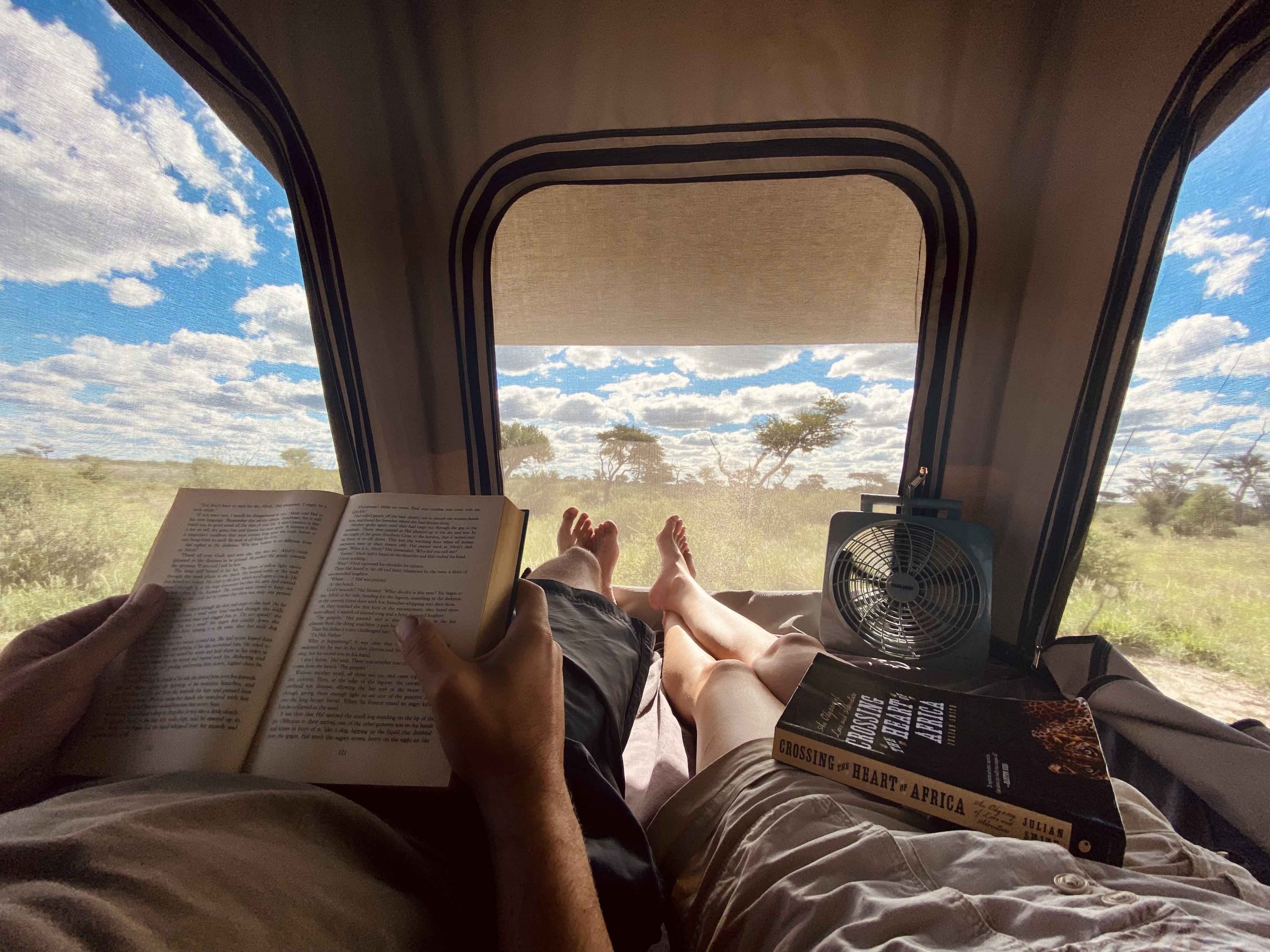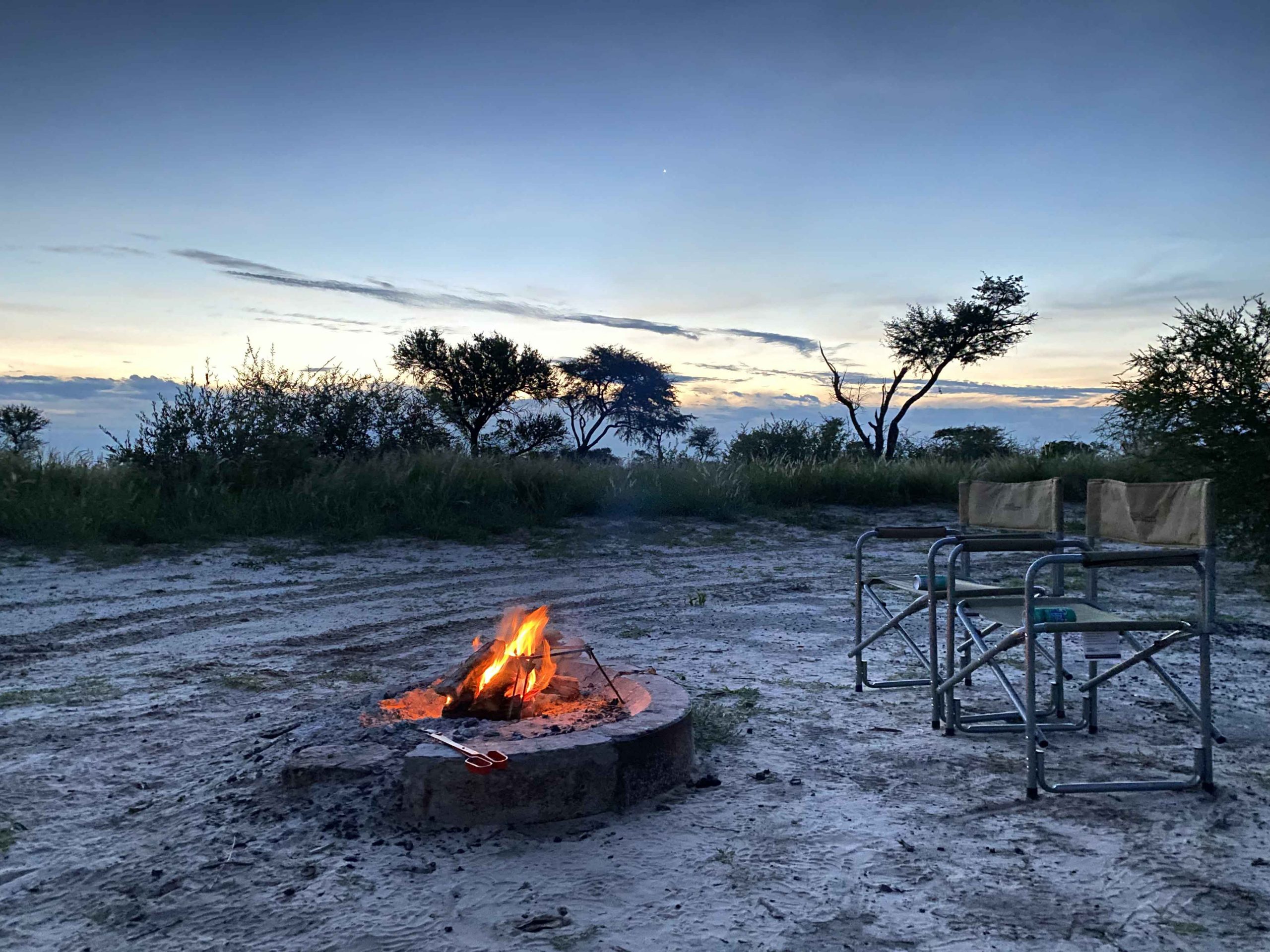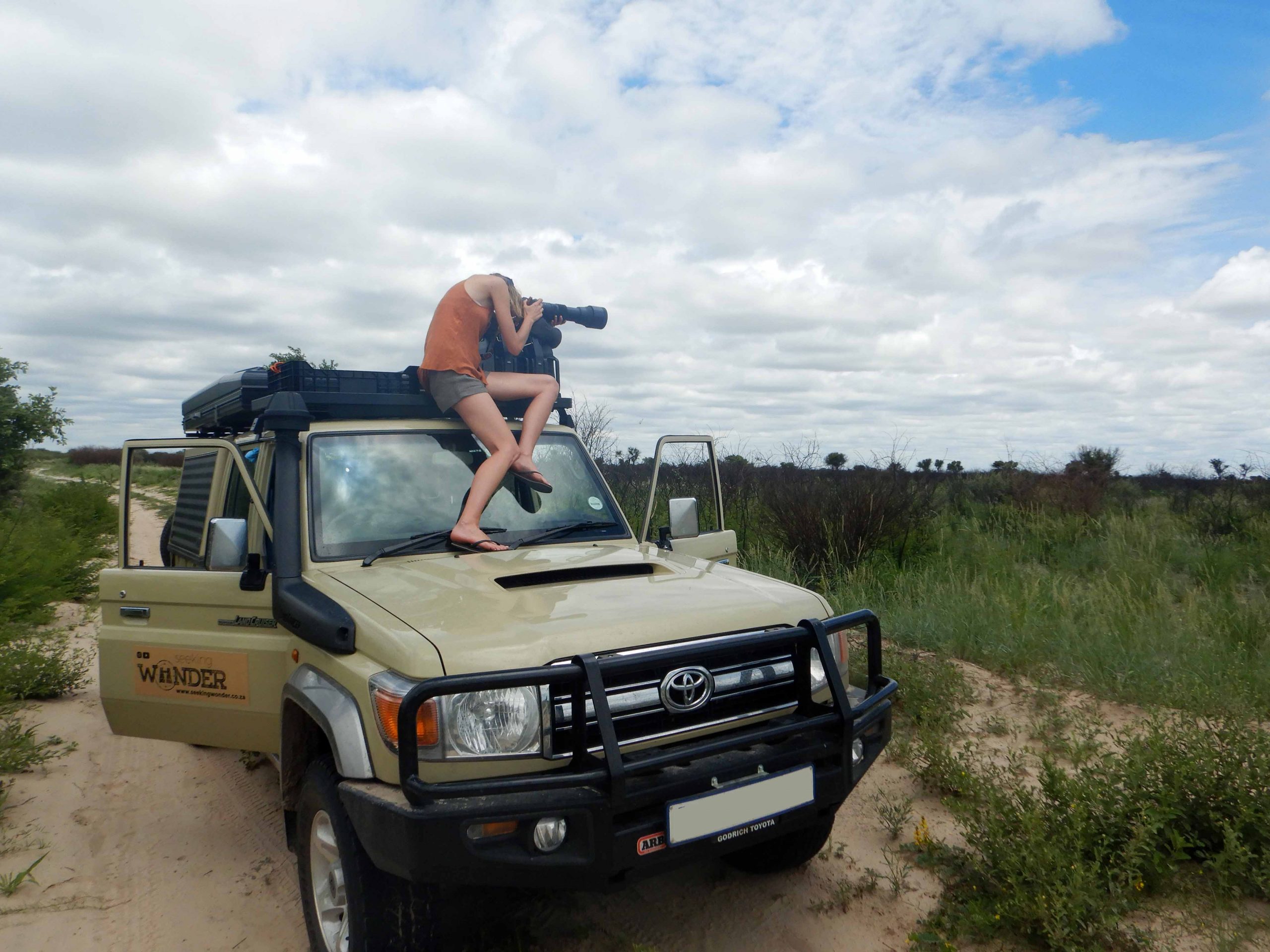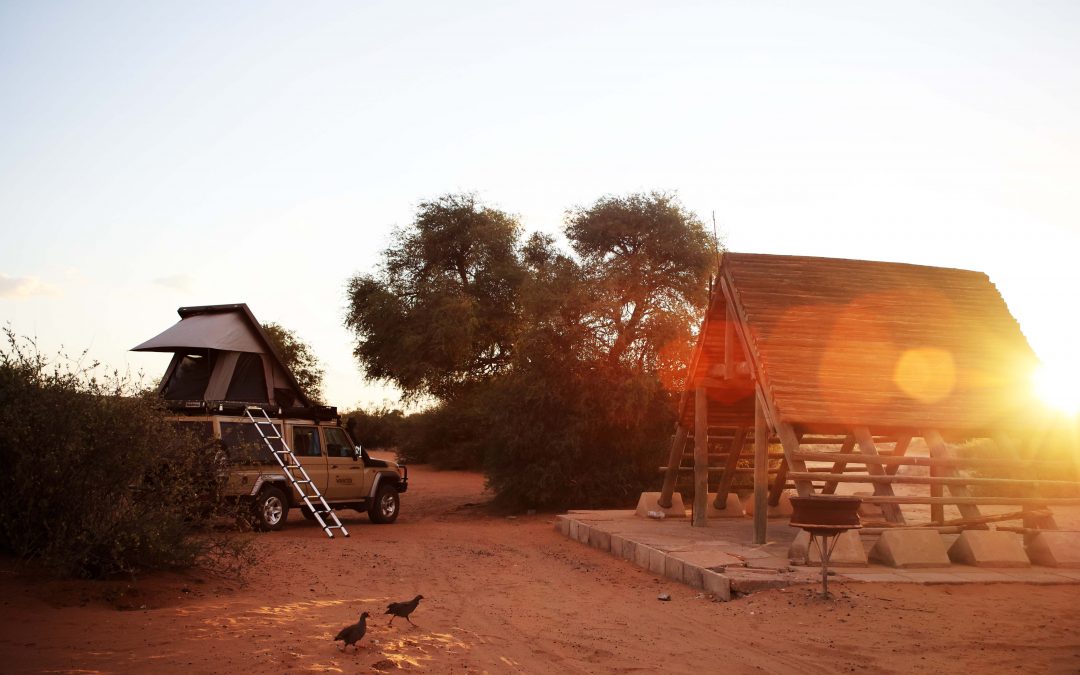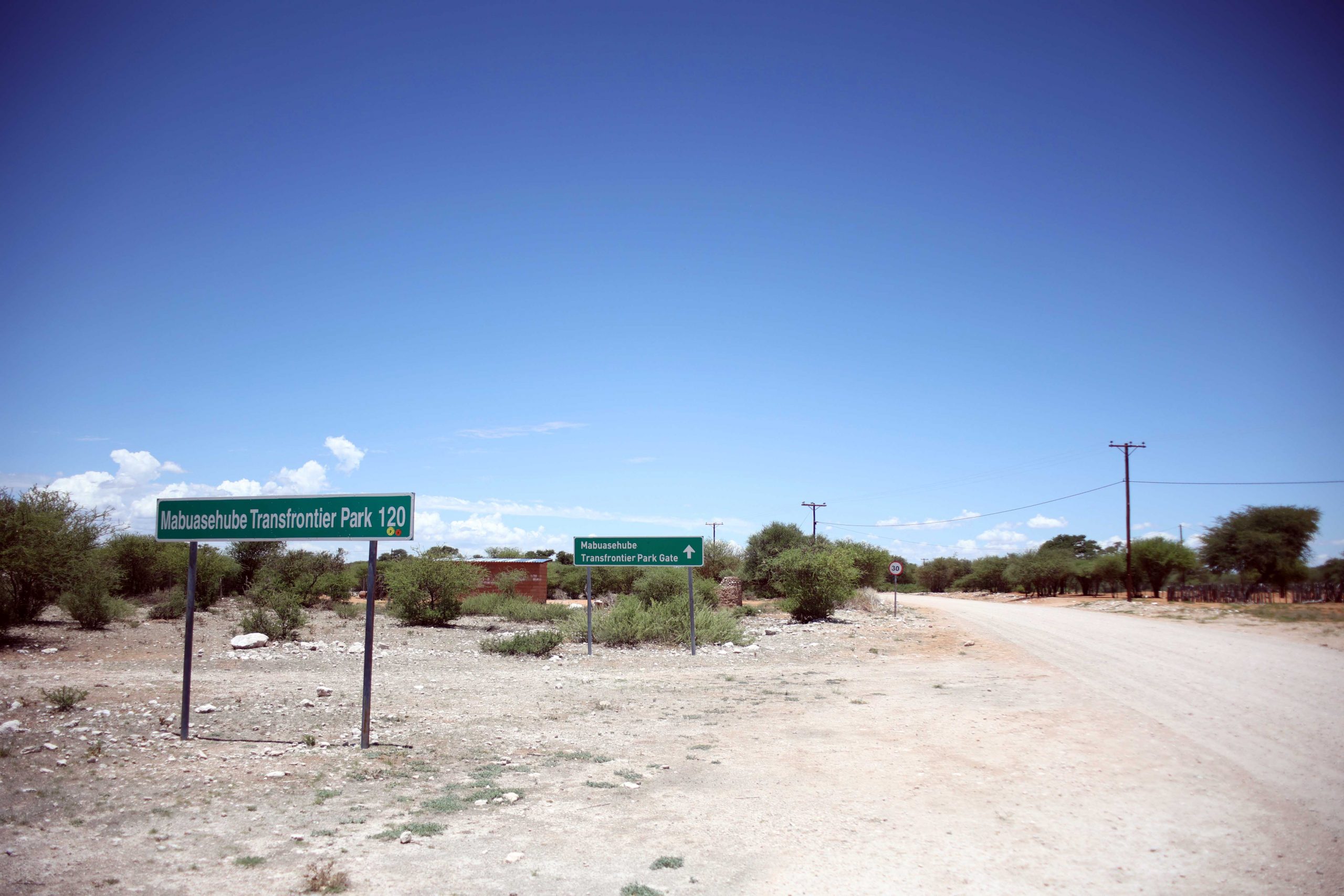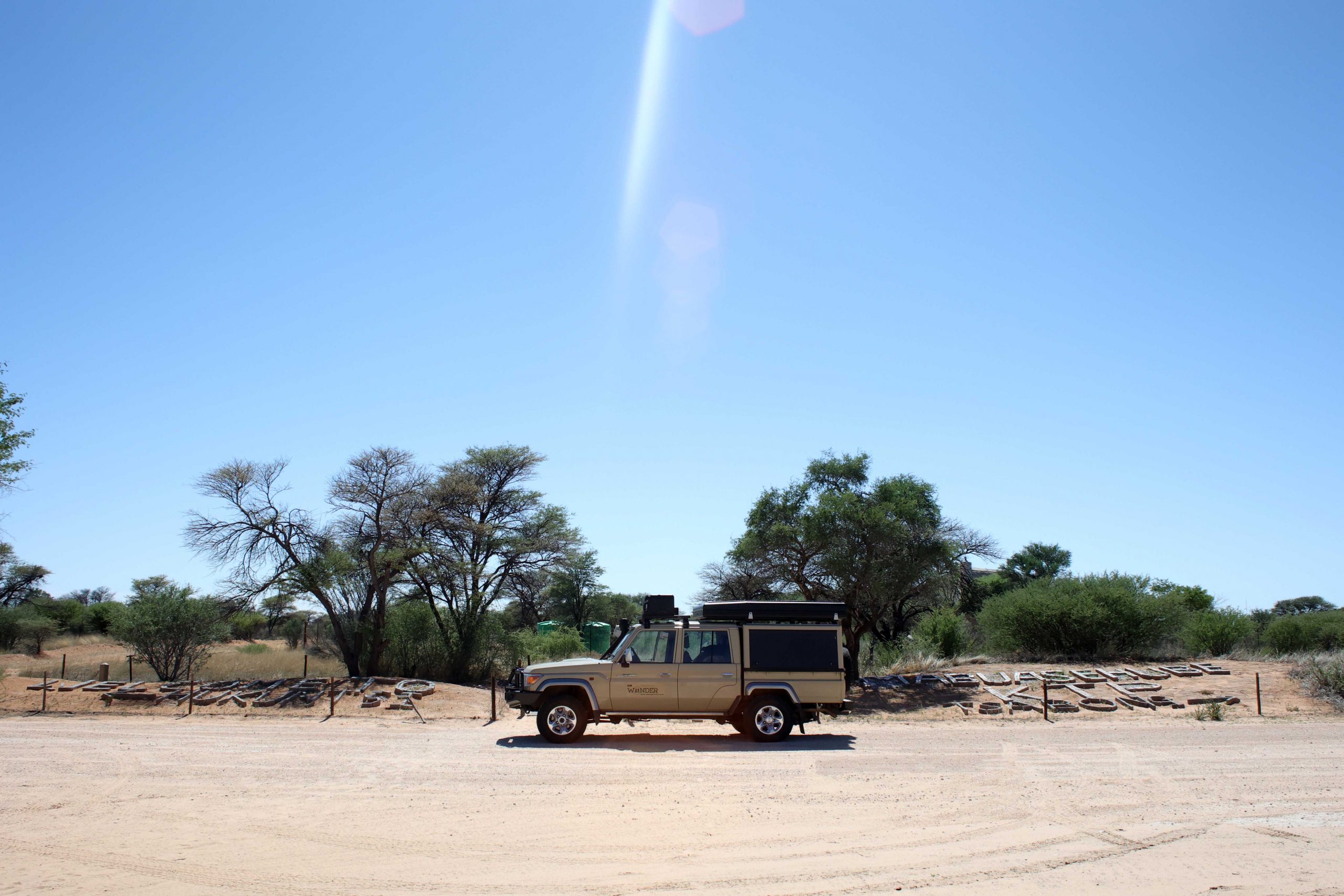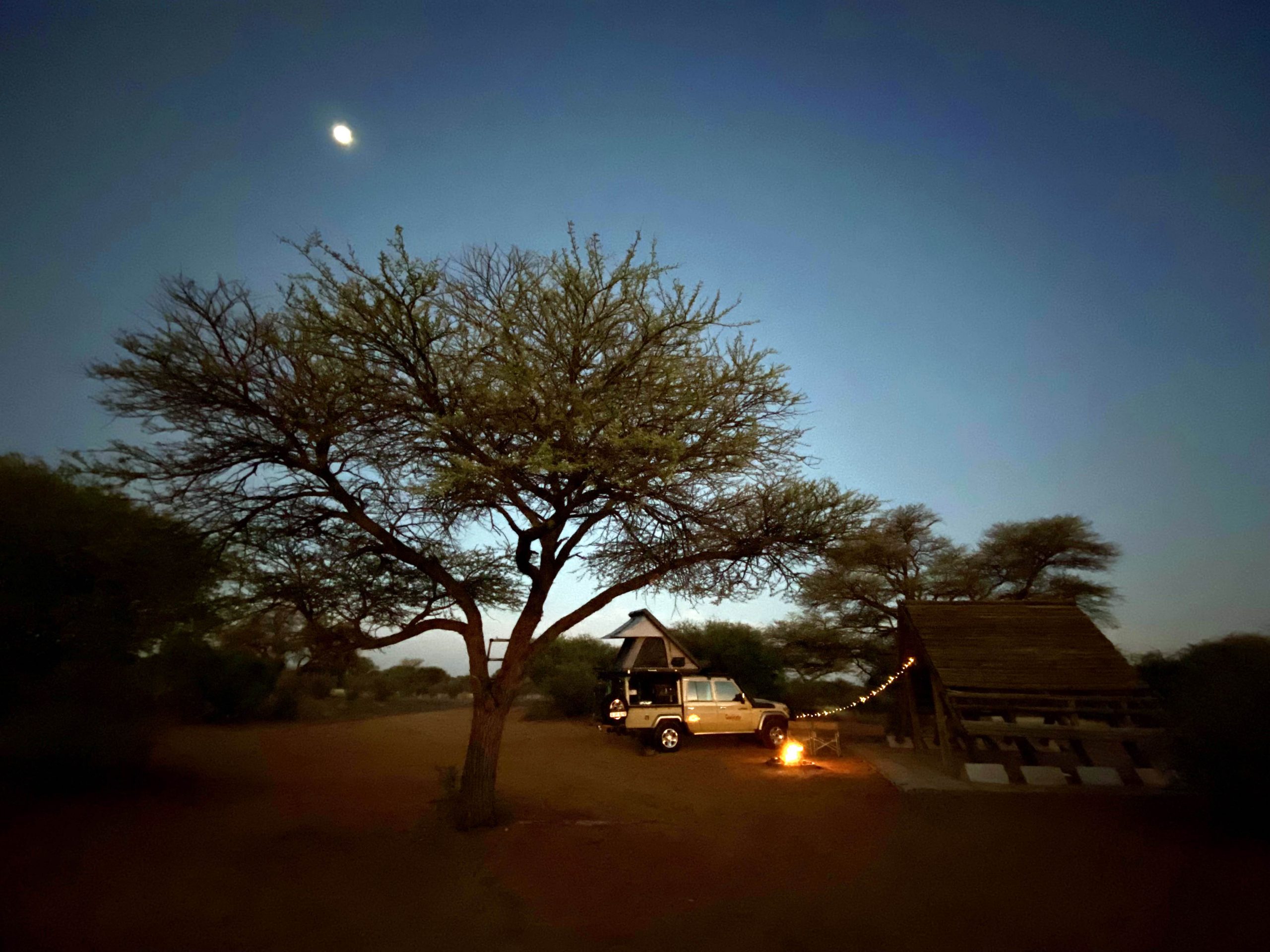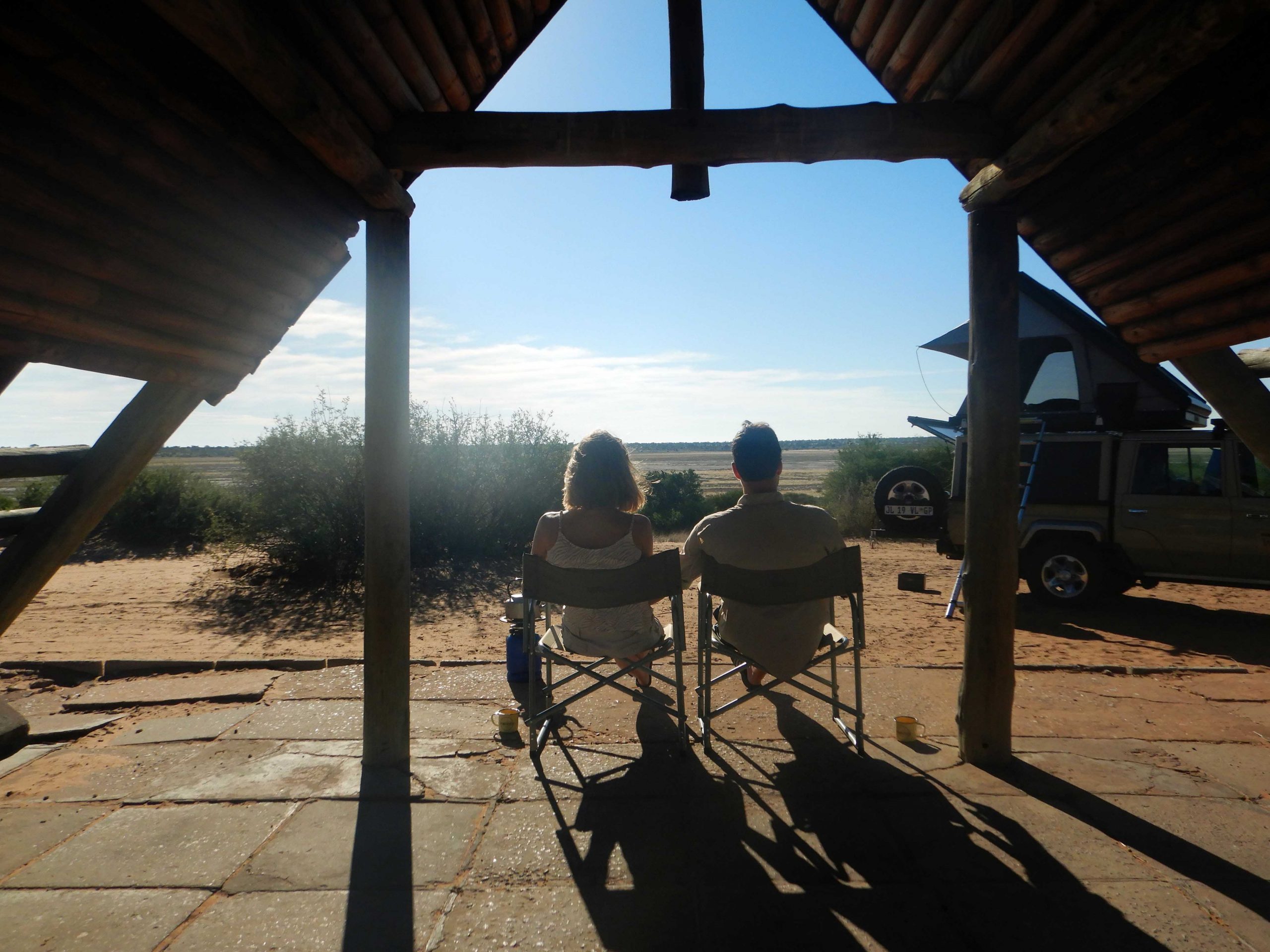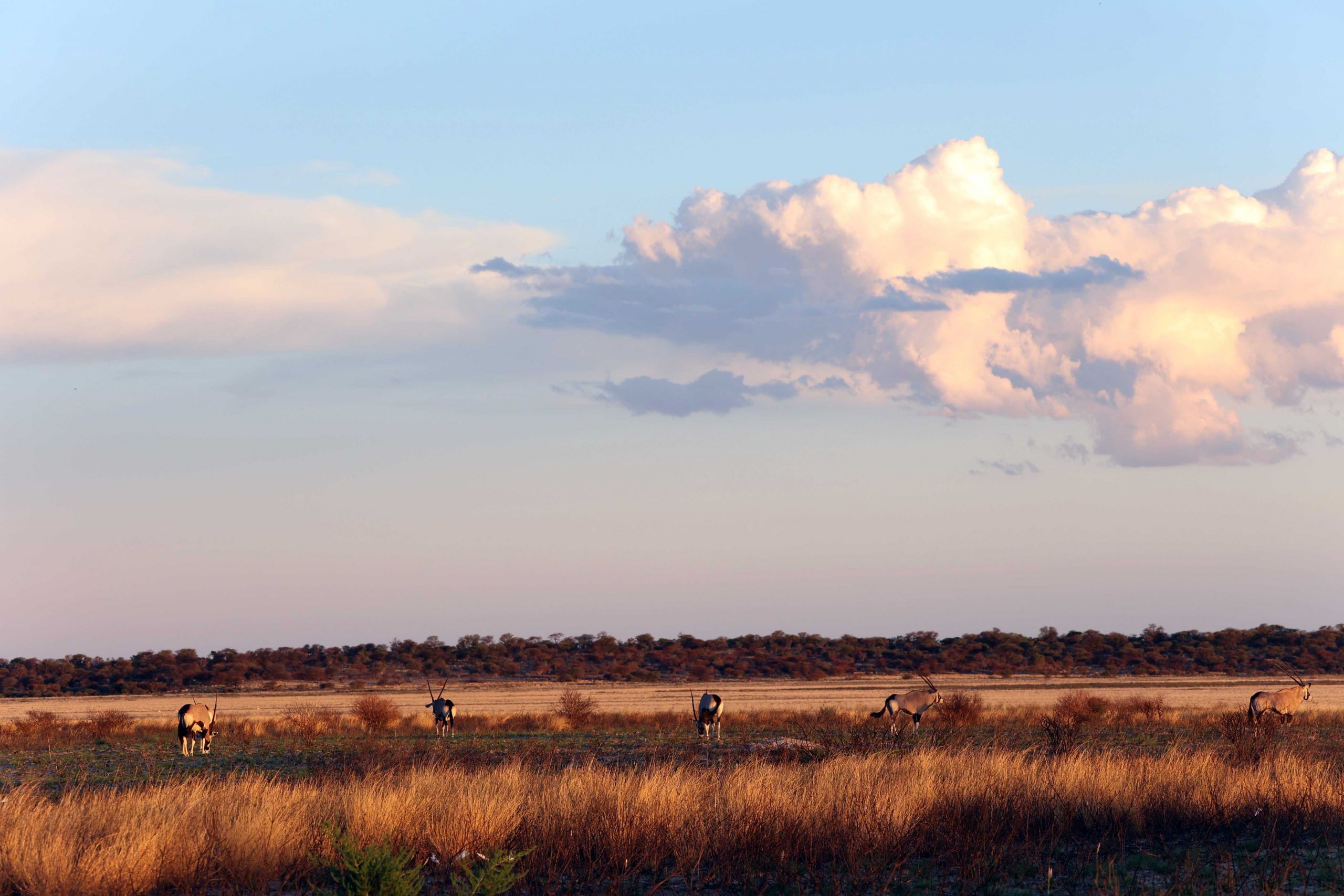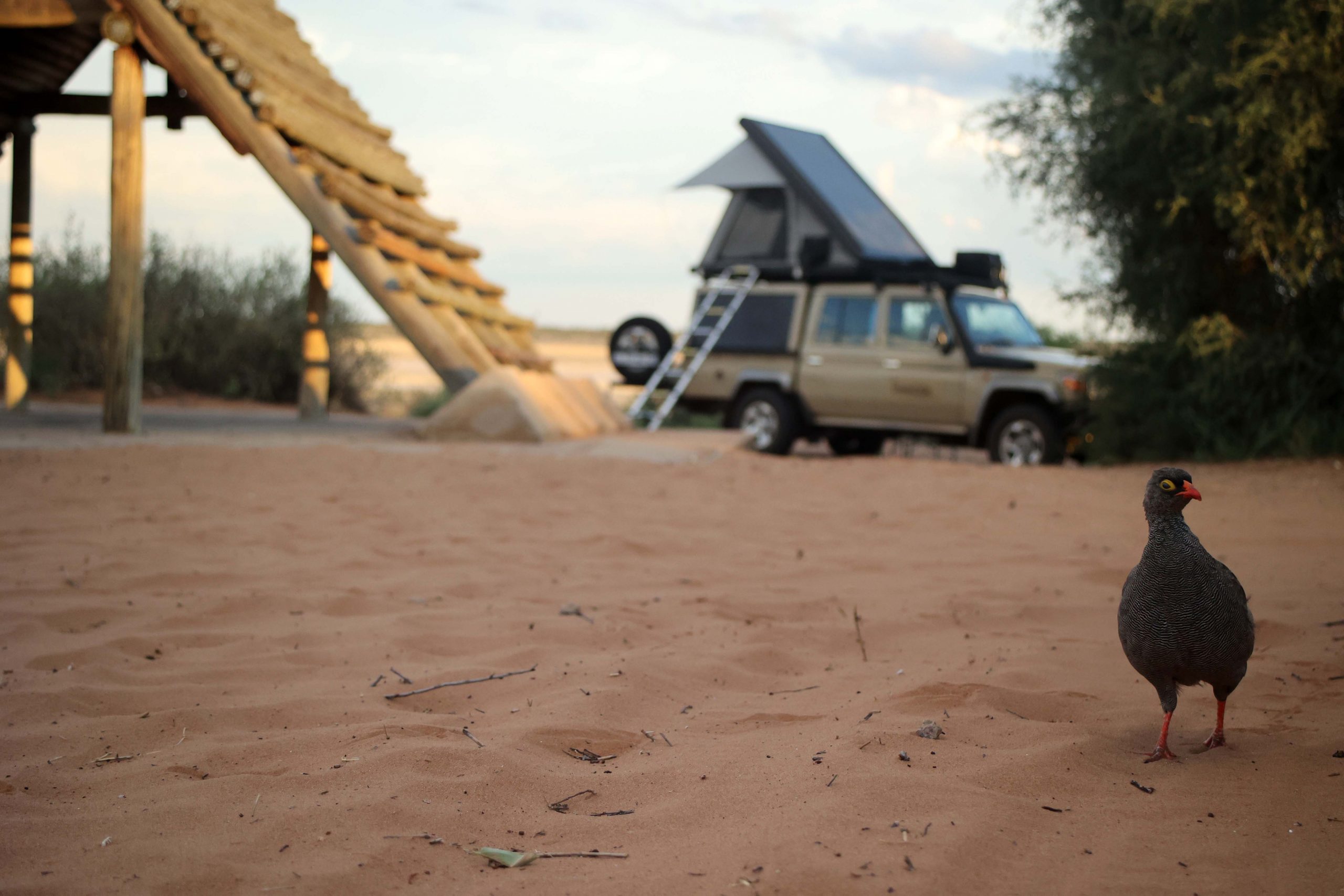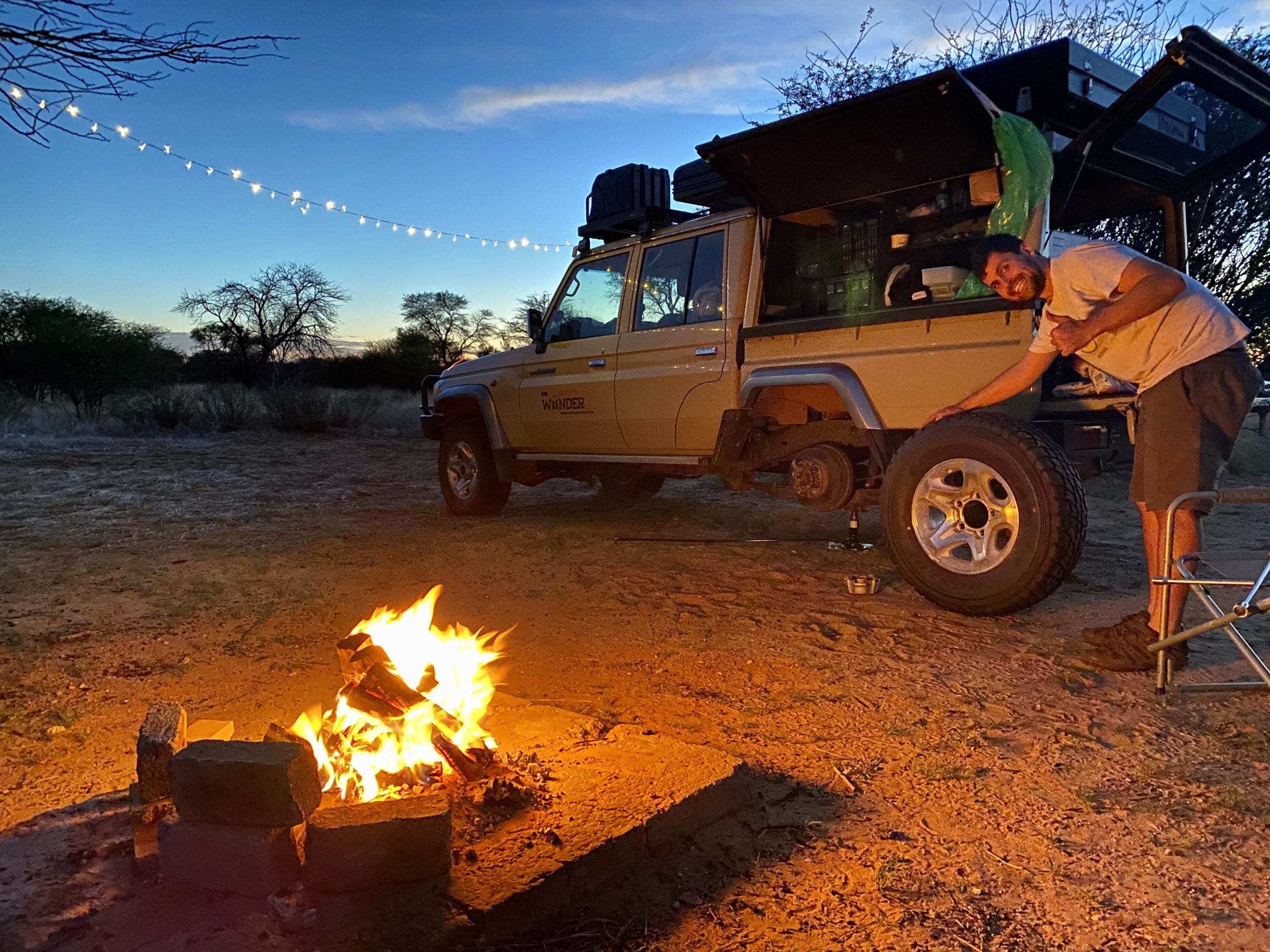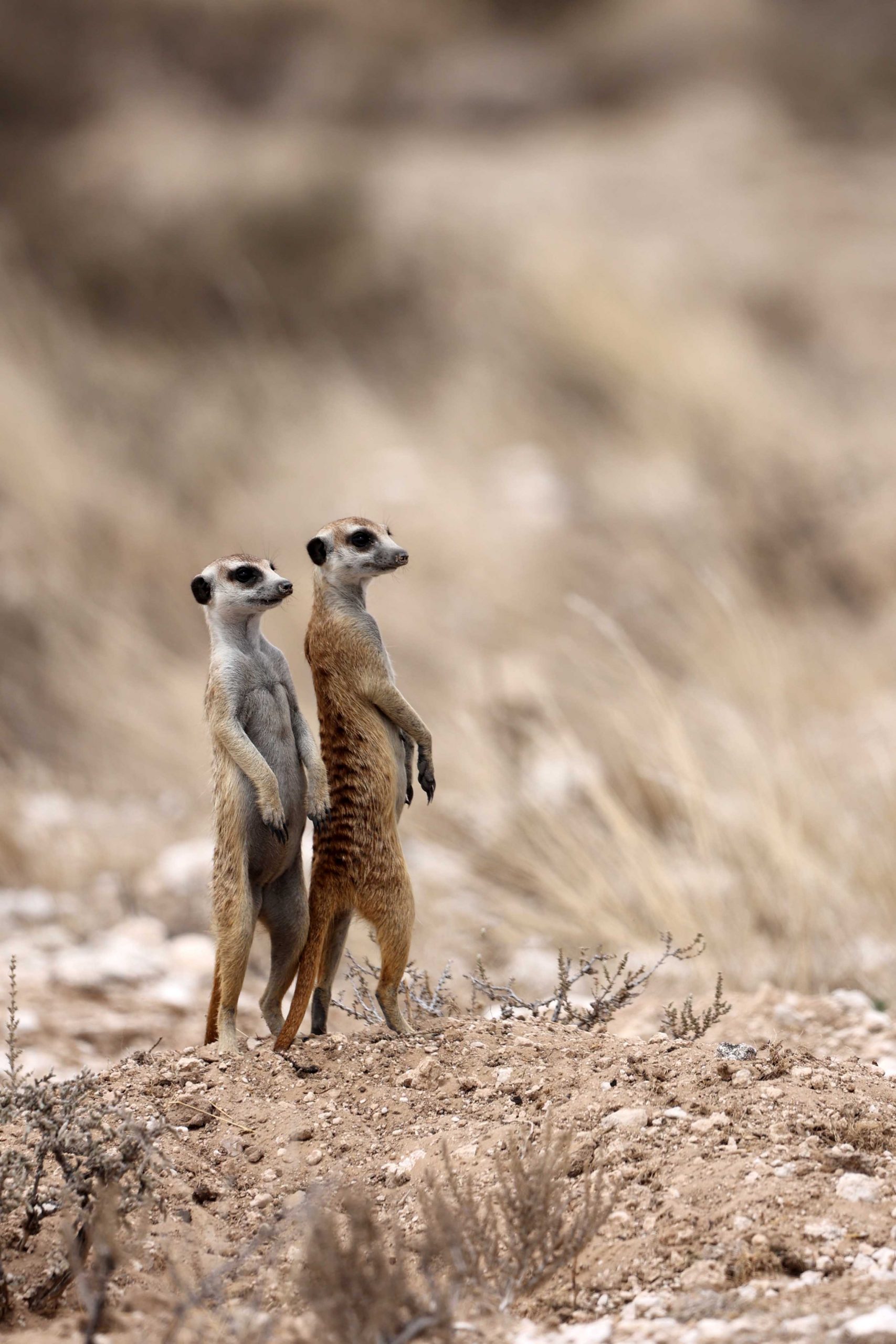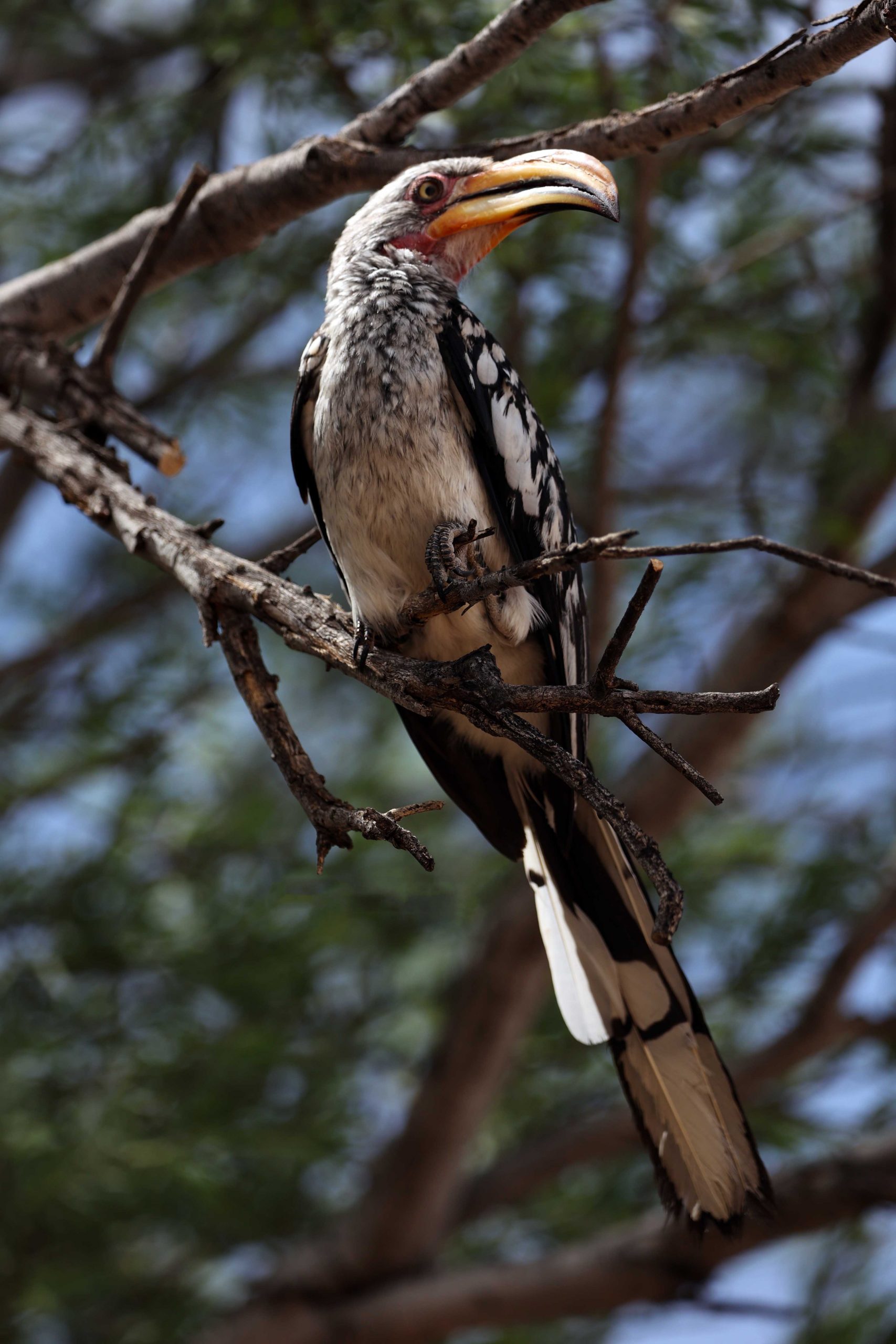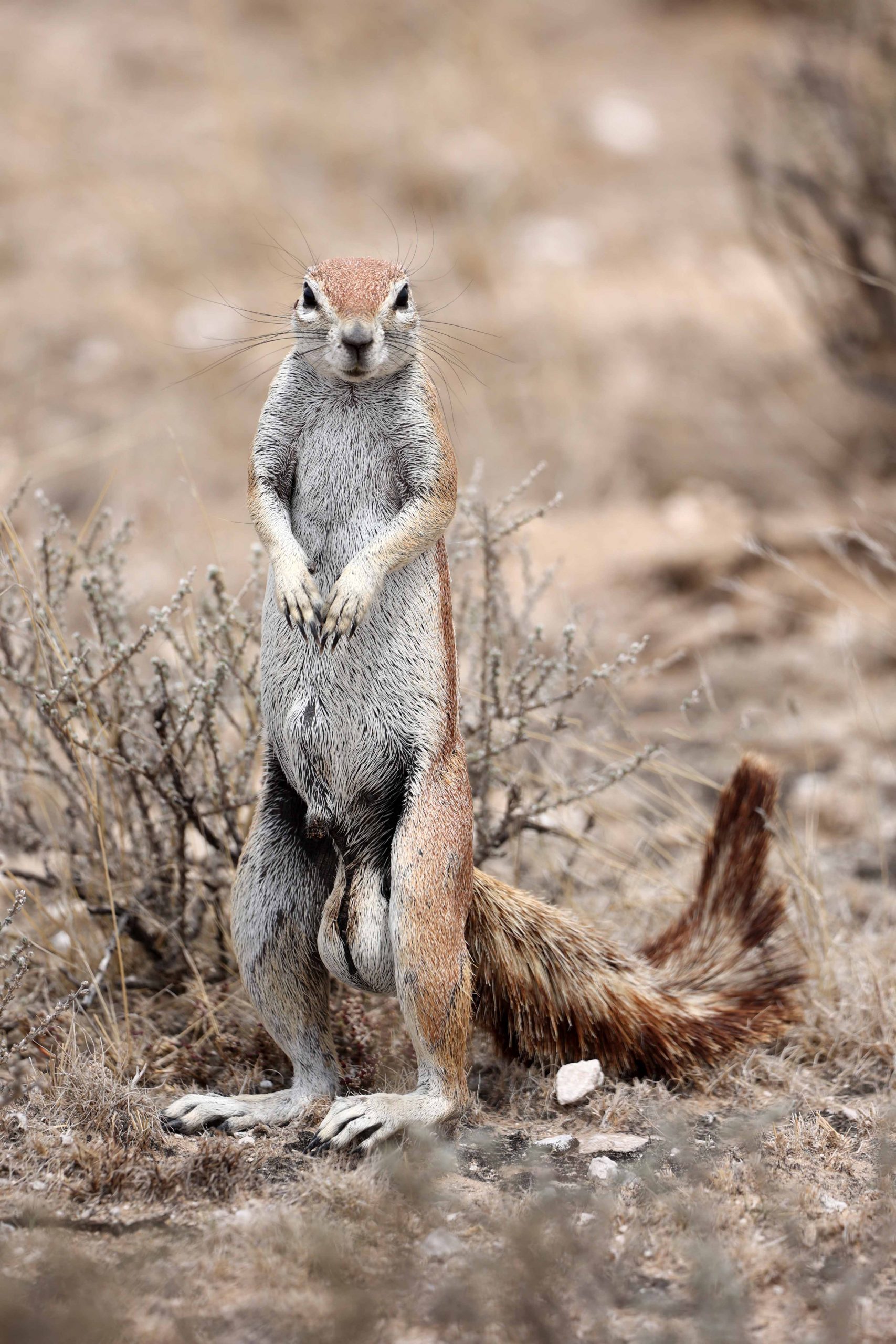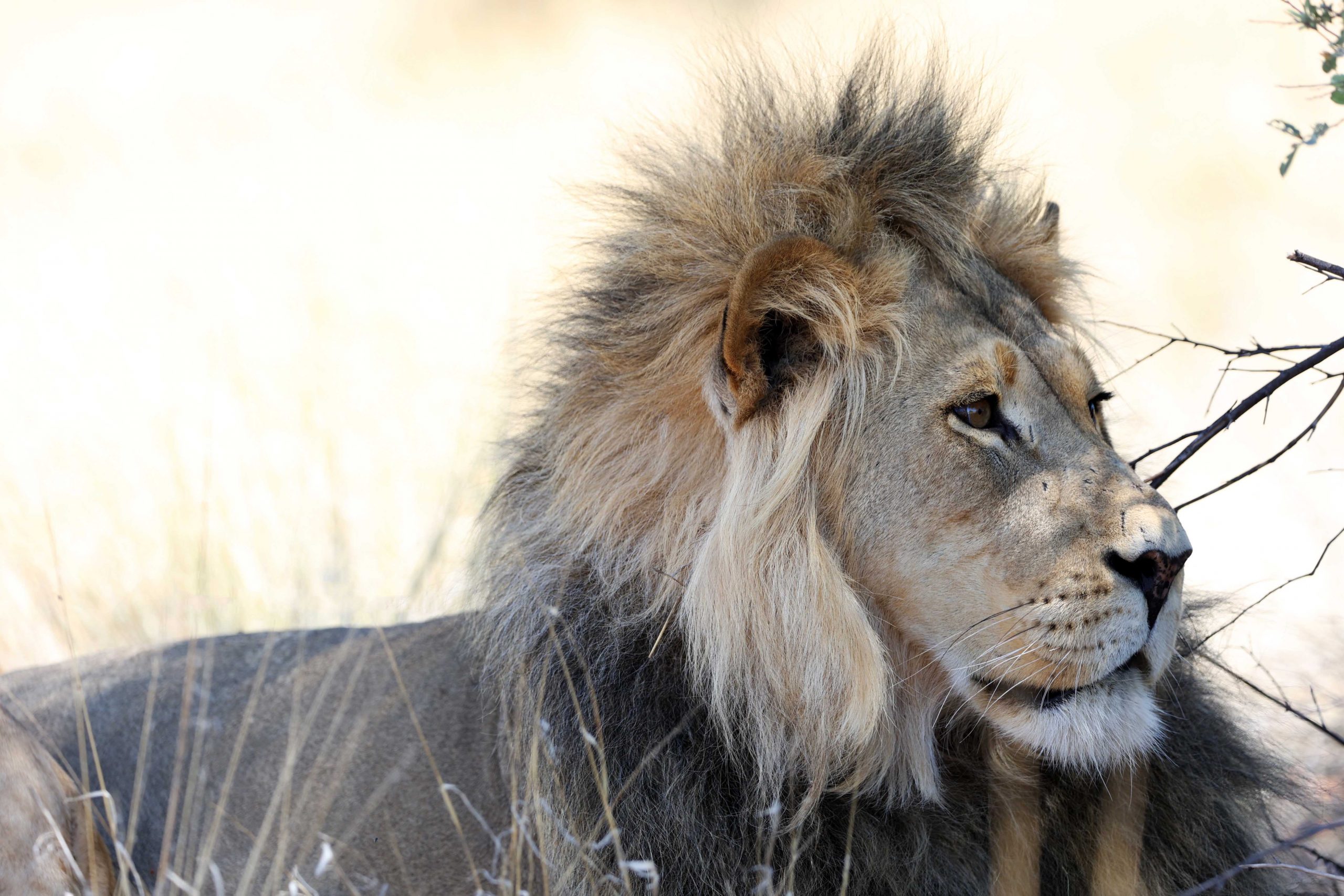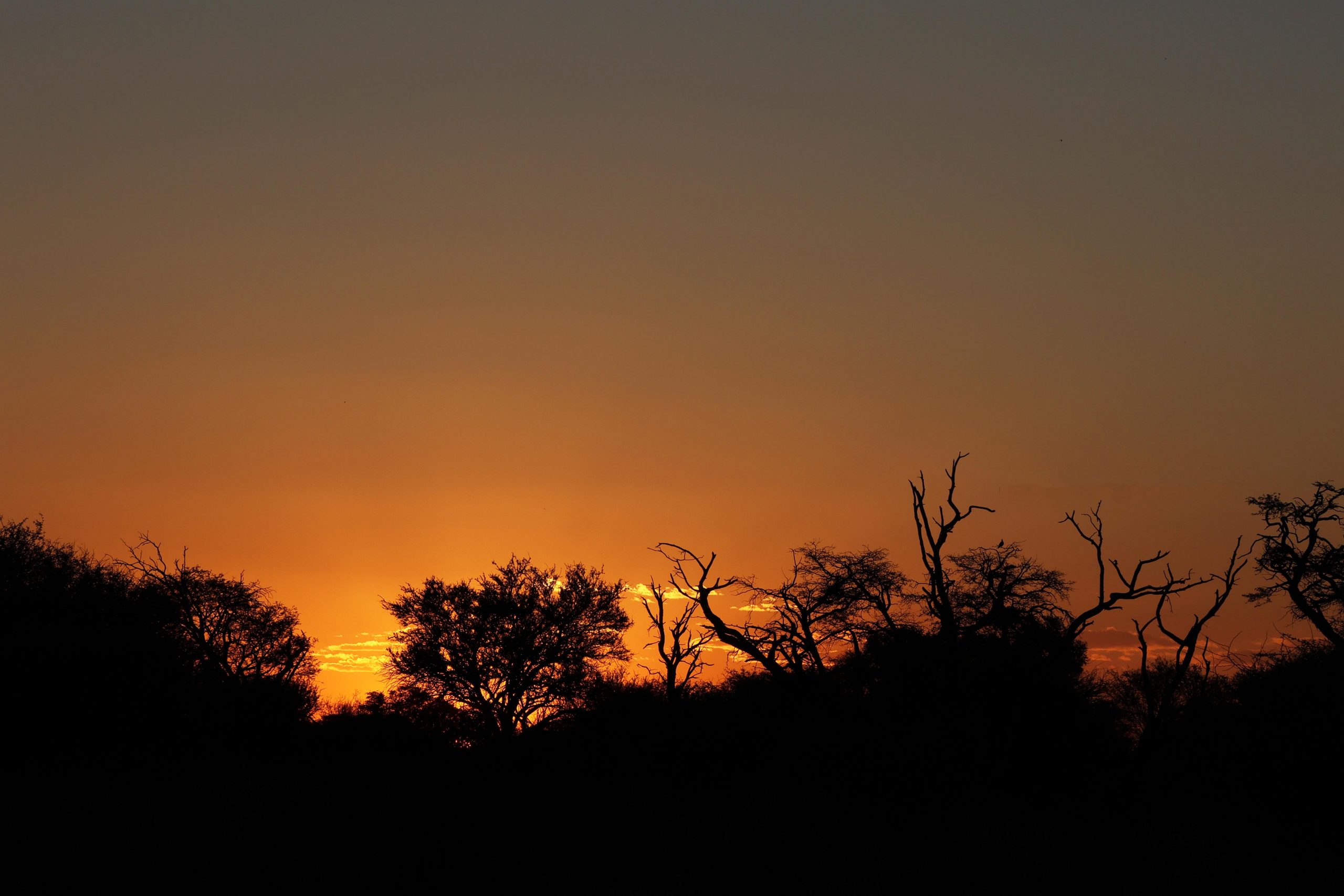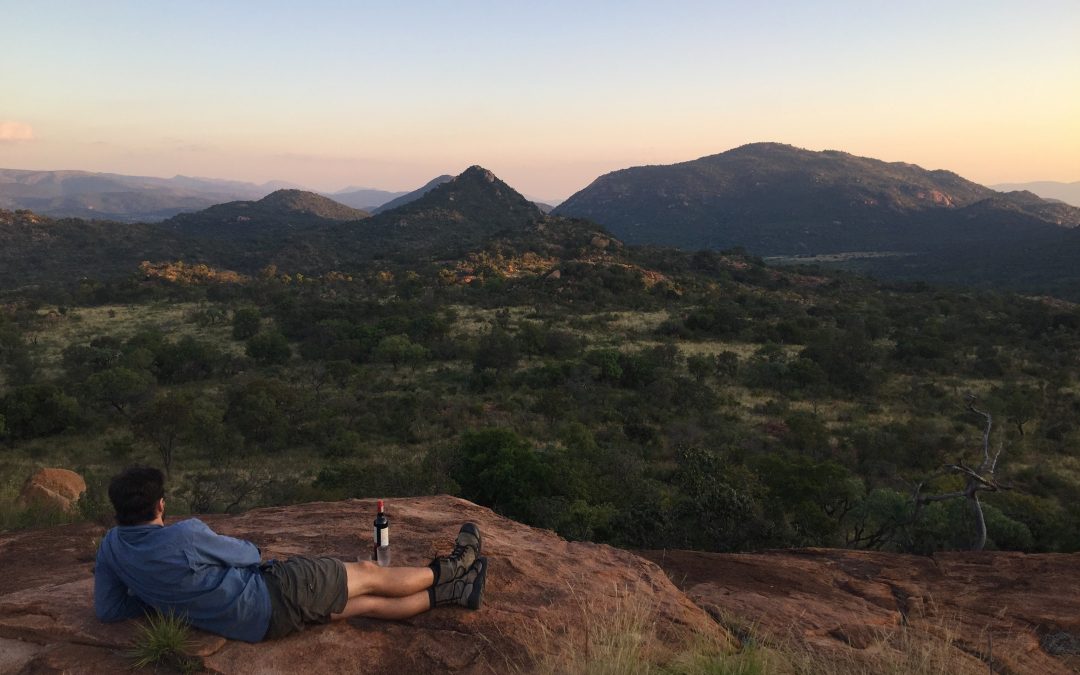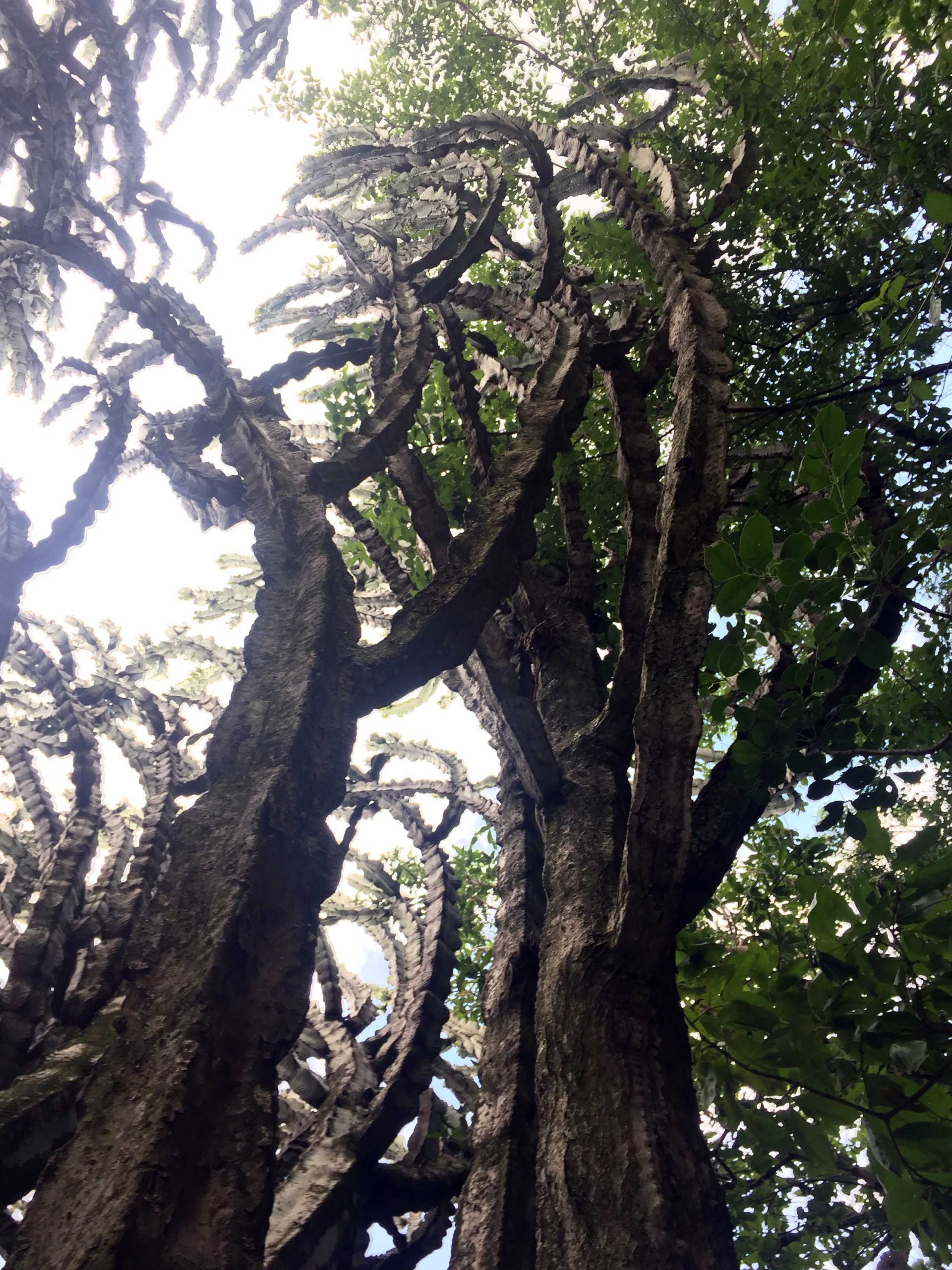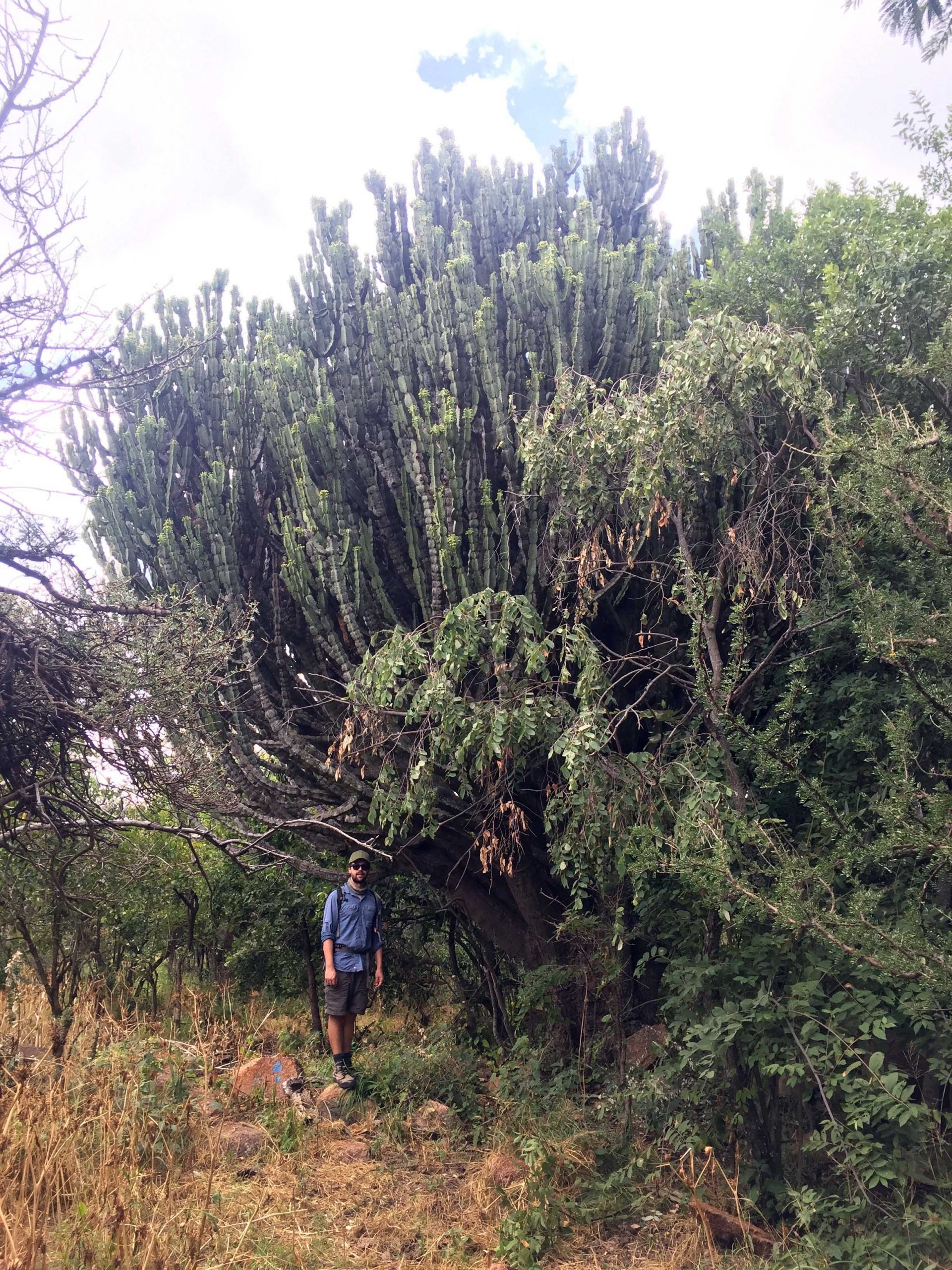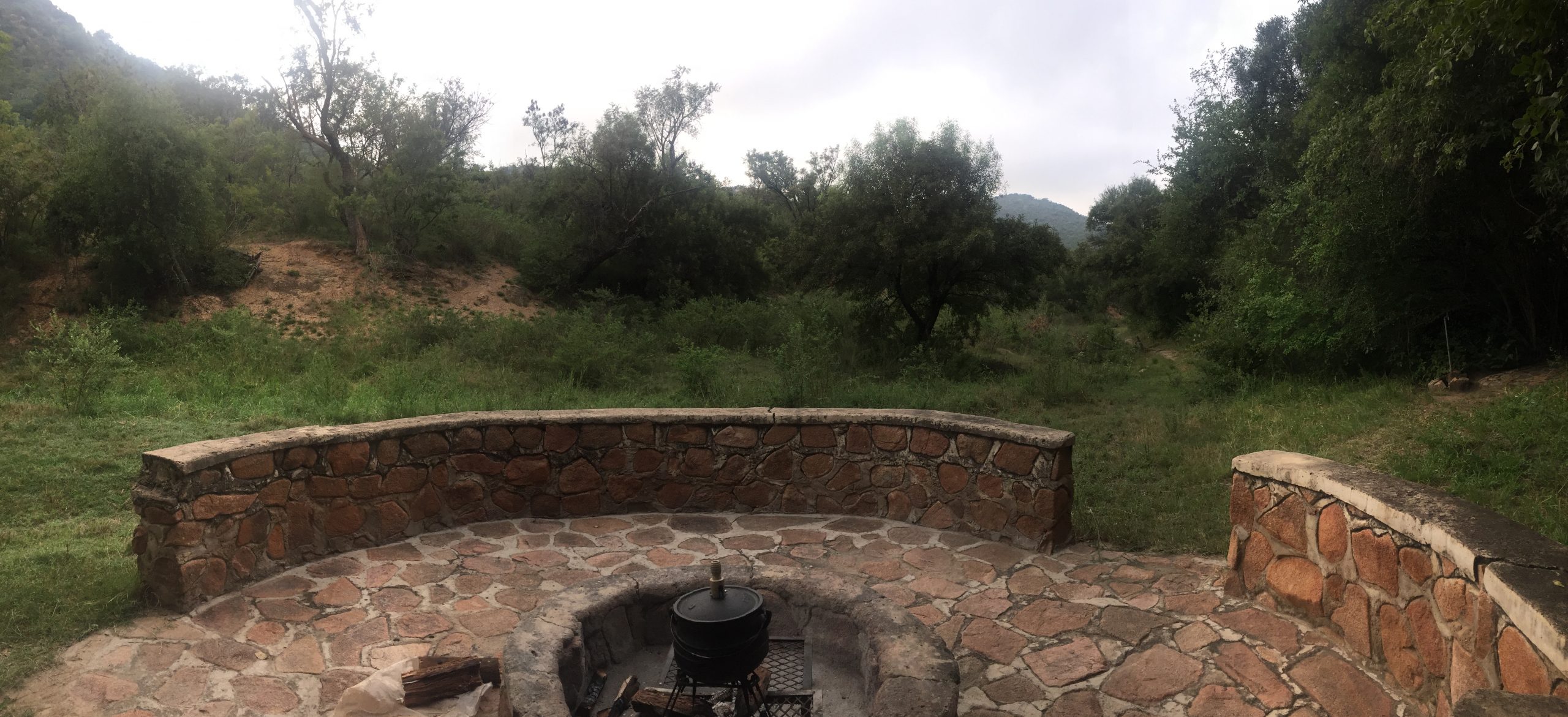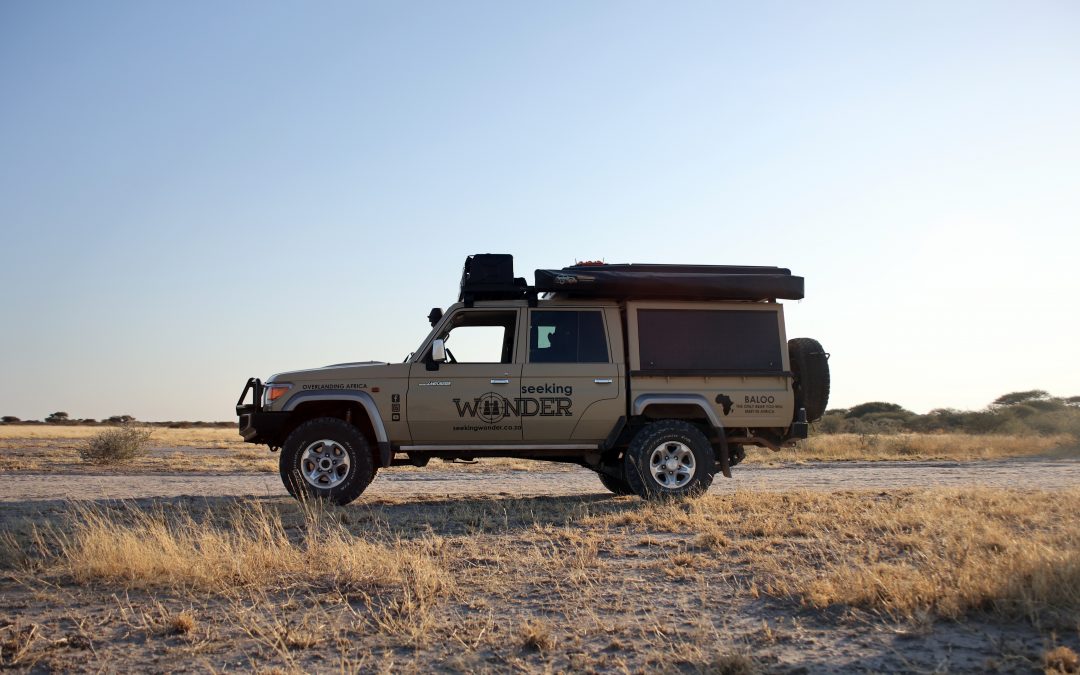
Introducing Baloo
There seem to be two givens in the 4×4 world. First, opinions are fiercely subjective. Ask five experts what their recommendation is on any particular vehicle item and you will receive as many different answers, usually somewhat biased toward the product they are trying to sell you. Second, at its core 4×4 modification is a spiralling black hole in which the smallest cost increment seems to be R 10,000. It can therefore be a tricky business to make up your mind as to what your individual needs and preferences are in a world filled with target-chasing salesmen, endorsed YouTube videos, and strong opinions from everyone and their dog.
Whilst there are many cases of hedge fund managers throwing $-sign bags at brand new vehicles for their first ever weekend away from Sandton, our journey with Baloo and his beloved predecessor Rubi (a 2-door Jeep) has been based on a systematic process over years, figuring out what works for us on the road and then changing and developing sequentially. Our approach has always been as minimalist and practical as possible to serve our particular adventures.
Although we consider gear primarily a means to an end, following requests from our more technically-minded friends, we thought it fitting to give a rundown of all Baloo’s current features, gear and modifications as well as why we decided on each item. Our take on things will not be everyone’s, but we did learn a few things along the way so far and we gladly share this with like-minded overlanders.
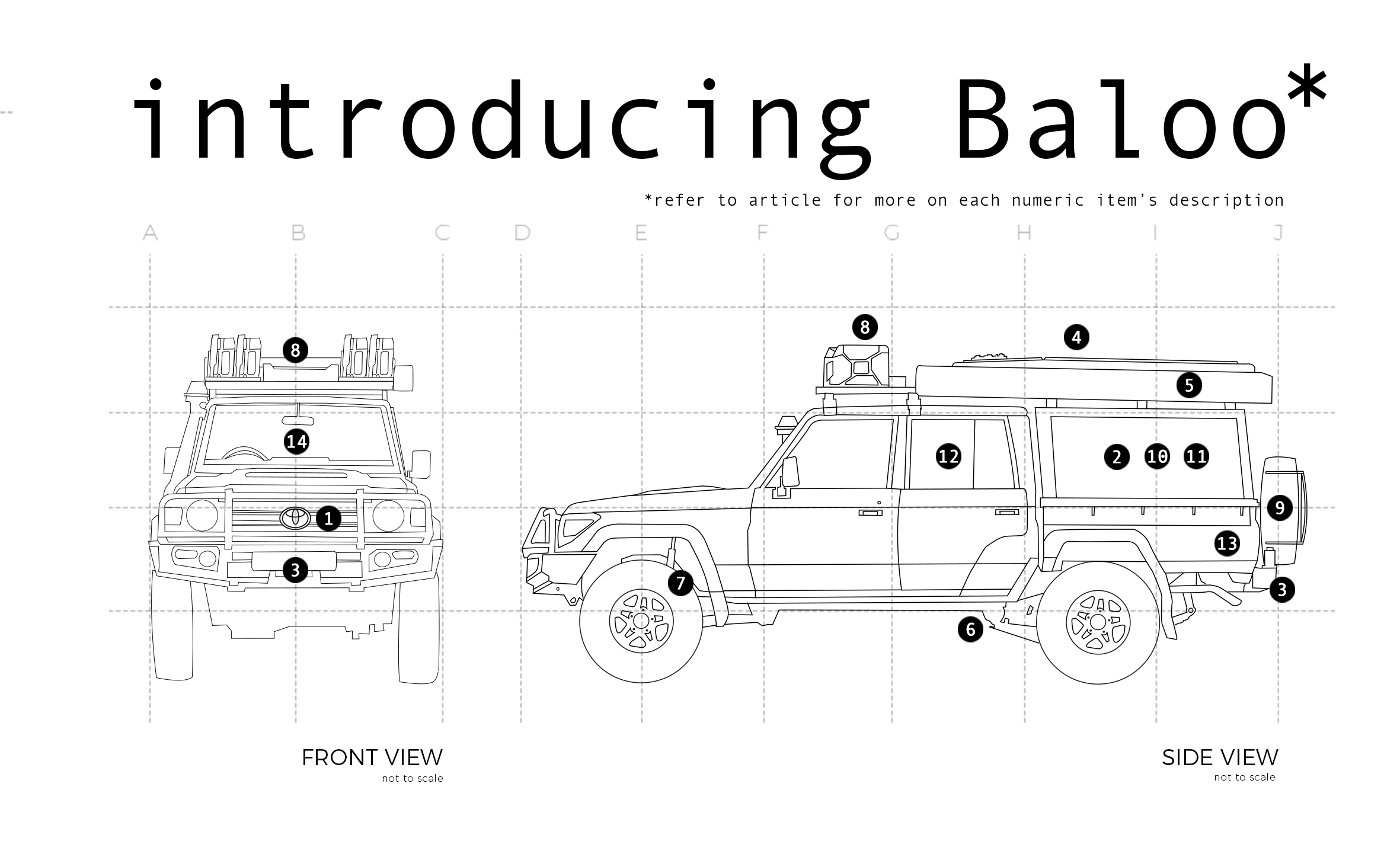
1. One car to rule them all
We chose the legendary Toyota Land Cruiser 79 series (Double Cab, 4.5L V8 Diesel) as vehicle and have used it on many trips since 2020. In one word: reliability. No vehicle is immune to issues, but following many bad experiences with our Jeep we have not looked back since. There is a reason why the solid no-nonsense, no-frills, robust workhorse ethic of the 70 series Cruiser design appeals universally to serious African overlanders, farmers, and bush folks alike. The sizeable double cab configuration helps us to make it a liveable space, while the V8 power enables it to be equally at home on the N1 passing a truck as it is slowly crawling along our favourite remote bush trails.
2. Can you do the can-canopy?
We fitted a Bushtech aluminium canopy, mainly due to its reputation for durability, practicality and versatility. Internal and external structural members are all slotted, allowing M8-bolted items to be added just about anywhere you like. Also, it simply looks the part on a working cruiser. The small core group at Bushtech is a really friendly and efficient bunch and know their products well. Our canopy has operated under heavy loads and very dusty conditions and have not once let us down.
3. Steel yourself
The factory issue Land Cruiser comes in a plaasbakkie configuration – without canopy and with a spare wheel on the back, ready for Boela the Boerboel to jump on the back as you go and check on the mielies. If this is not how you are going to use it, and you need packing space in the canopy, then that spare wheel must move somewhere practical, like on a rear swing gate. We fitted the Gobi-X Desert Armour rear replacement bumper and swing gate. It has a very robust design and allows for future fitment of a second spare wheel, which we subsequently added after we got caught out in the middle of nowhere with a damaged sidewall. At this point Baloo sat on its haunches, so we needed some counterweight at the front (refer the dark spiral I was talking about). We therefore also fitted an ARB steel bulbar. It also serves as a safety crash bar, proper recovery point location, aesthetic improvement and future reason to mount unnecessary gadgets onto.
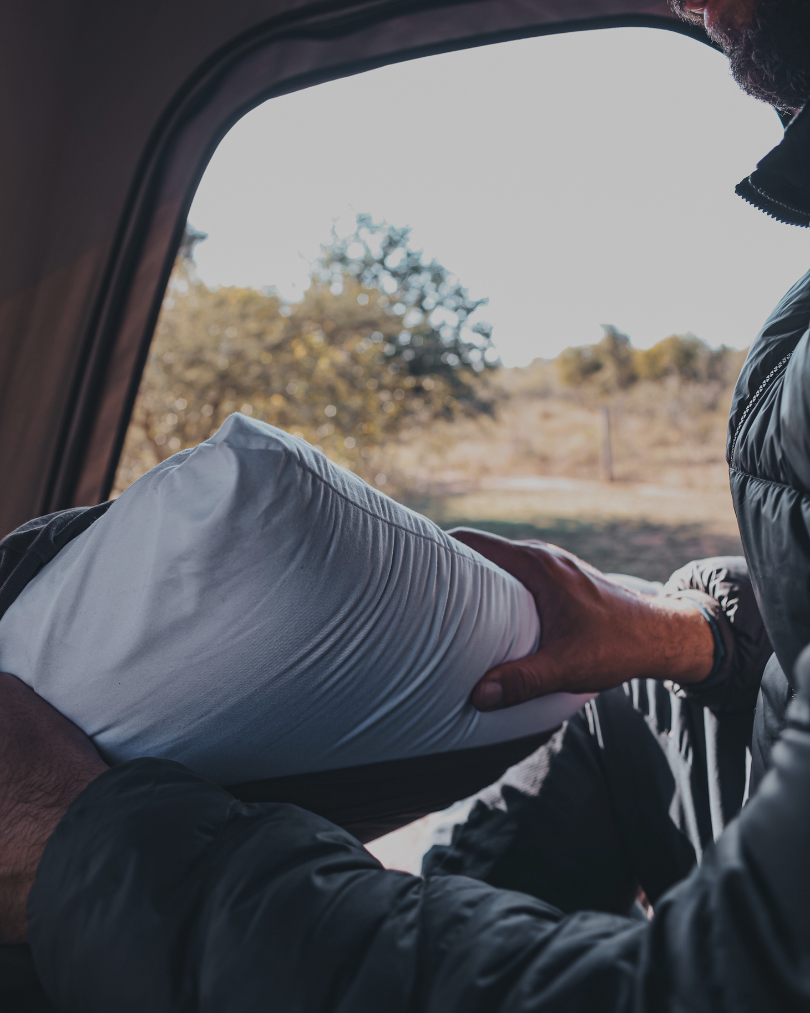
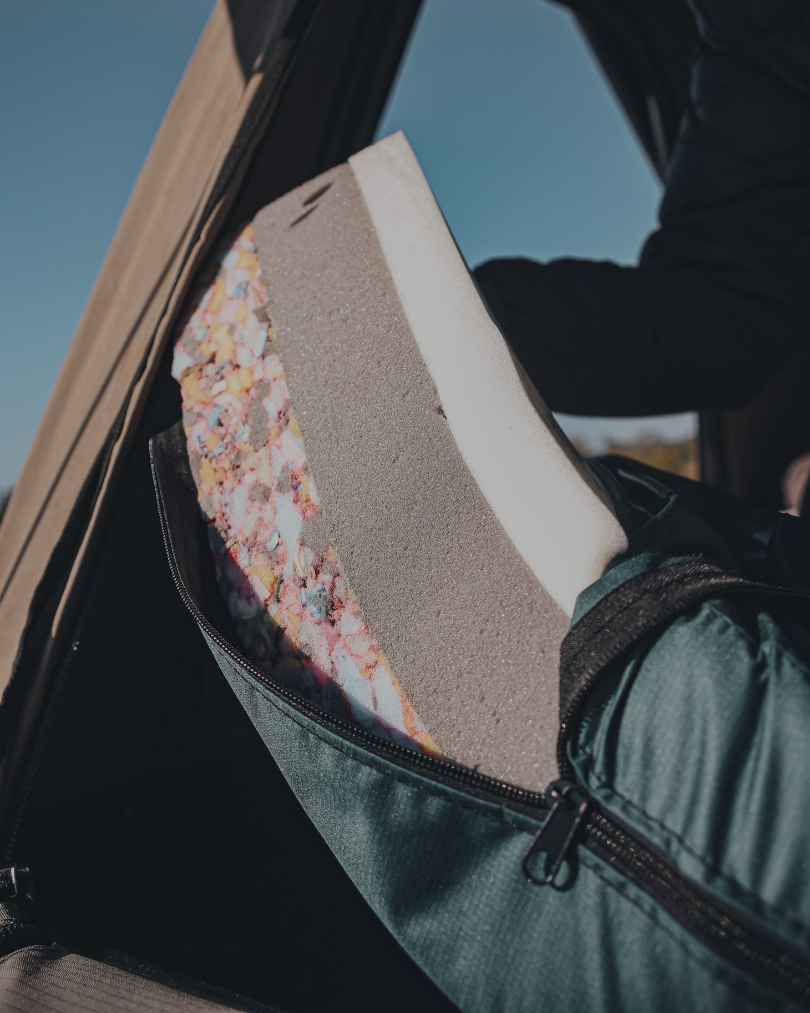
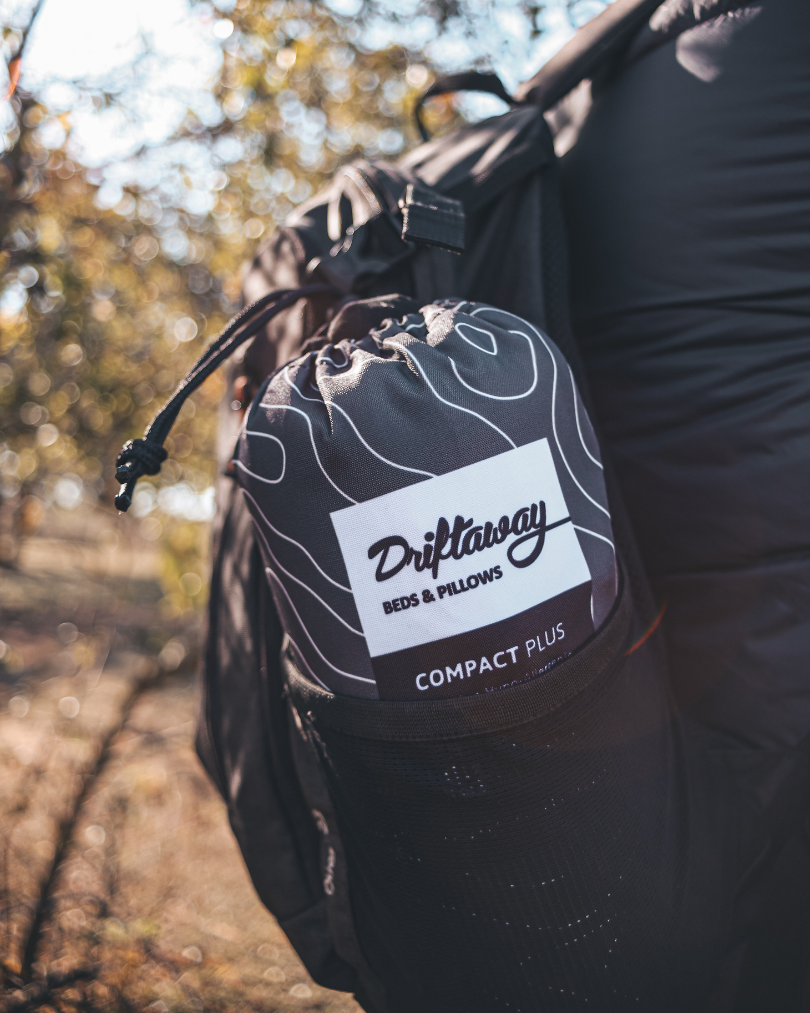
4. Rooftop hotel
You certainly don’t need a rooftop tent, and we went without one for long. However, when we started venturing into unfenced wild camping in lion country more and more, it became a bit of a prerequisite for a good night’s rest. We went with the Quickpitch hard-top clamshell type tent. It made our camp-life much more efficient with its quick and simple deployment and provides us with a very comfortable resting space after long days in the bush.
We replaced the standard 70 mm mattress in the tent with a 135 mm, three-layered (25mm memory foam, 55mm high density foam and 50mm chip board) mattress custom-made to our dimensions with a waterproof ripstop cover and zip by Foam Factory. Our backs thanked us greatly and we used our first custom mattress every night for two years before needing replacement. The first one was so ridiculously comfortable and durable that we replaced it by the exact same mattress spec. We also added two Driftaway Beds Memory Foam Pillows as well as two Driftaway Beds Compact Plus Memory Foam Pillows (great for hiking and picnics!) to our sleeping crew and so far they have really impressed us. They are hypo-allergenic, anti-bacterial, non-toxic and anti-static! Our custom layered RTT high-density foam mattress, Driftaway Beds Memory Foam Pillows and Driftaway Beds Compact Plus Pillows are kindly sponsored by Foam Factory.
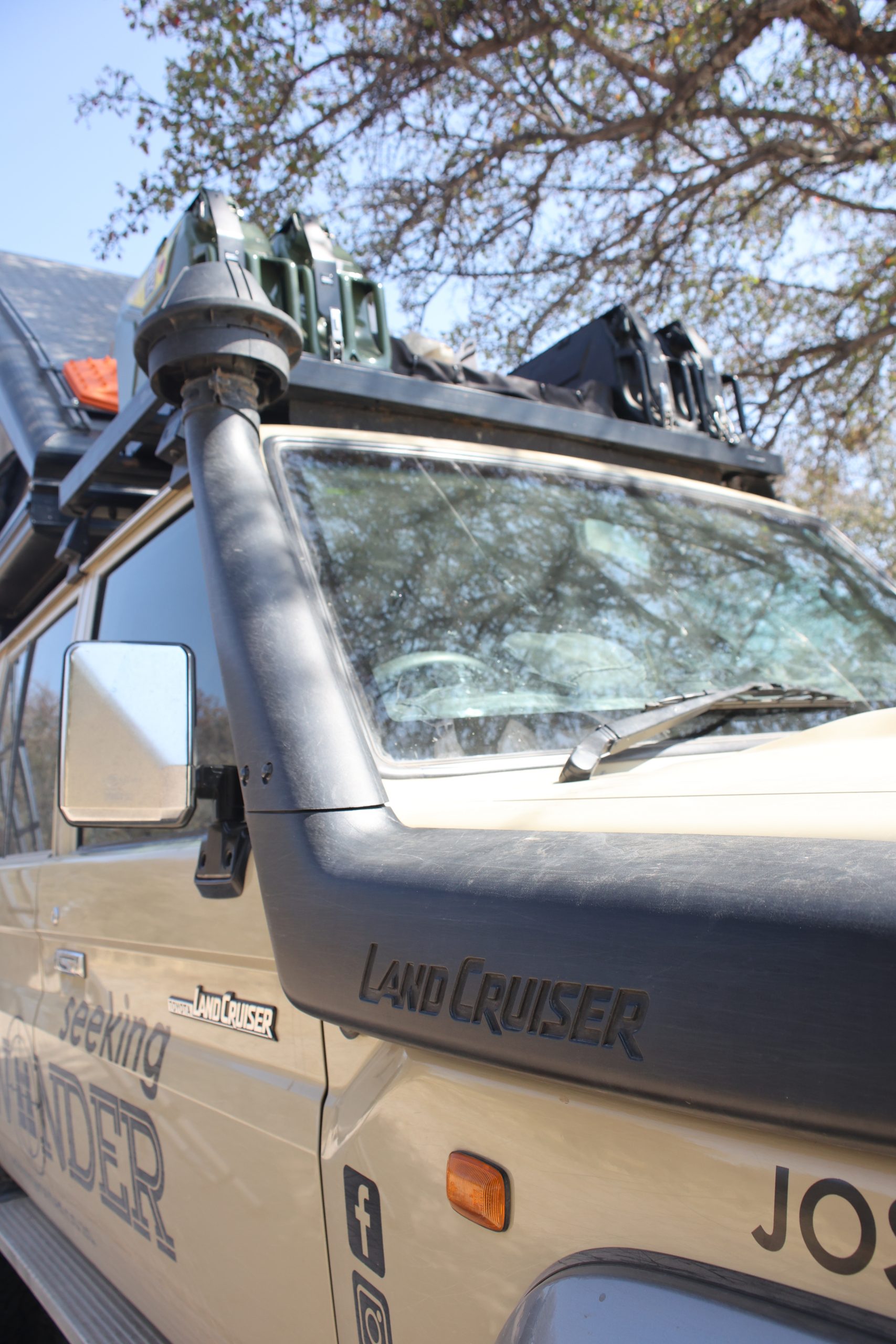
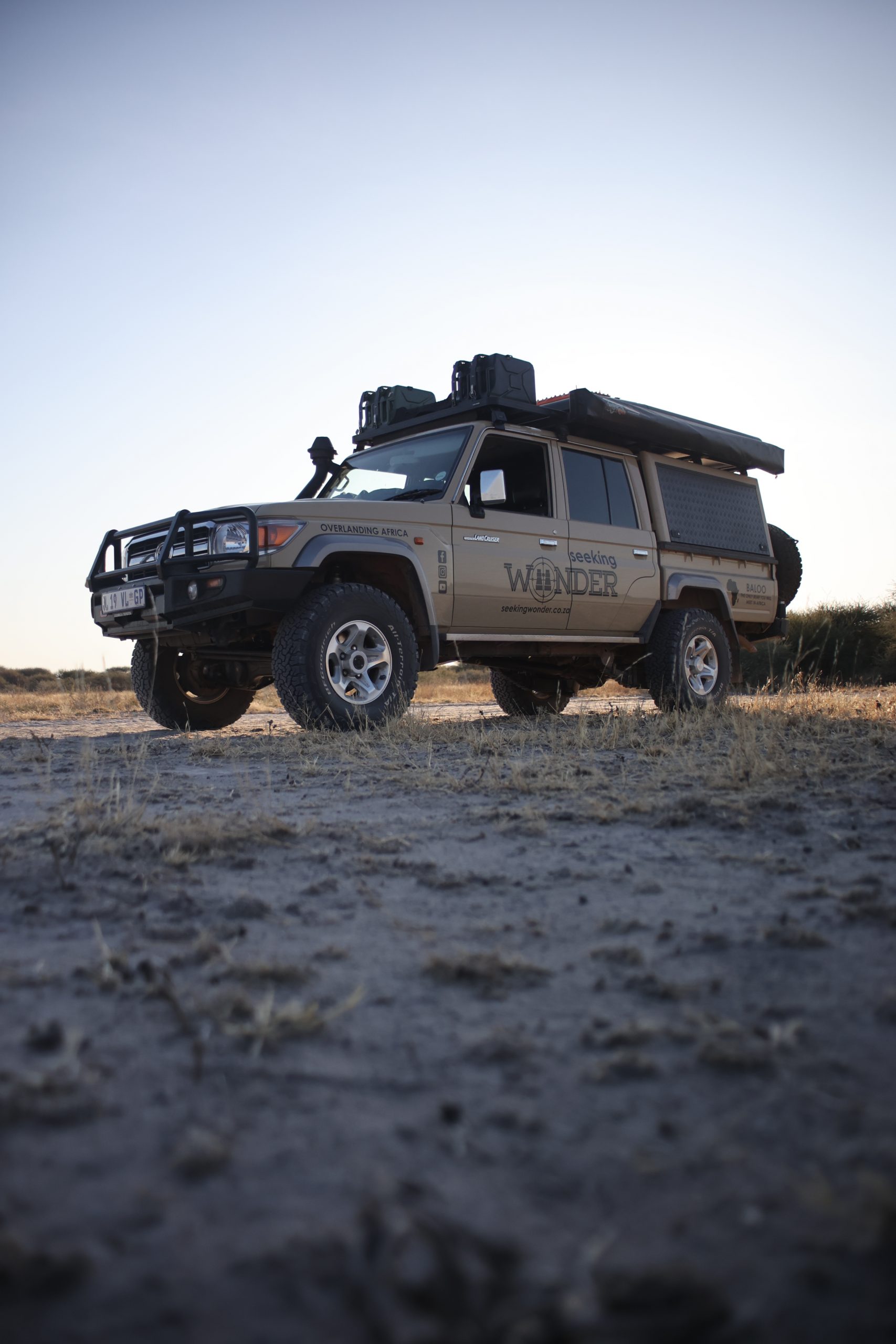
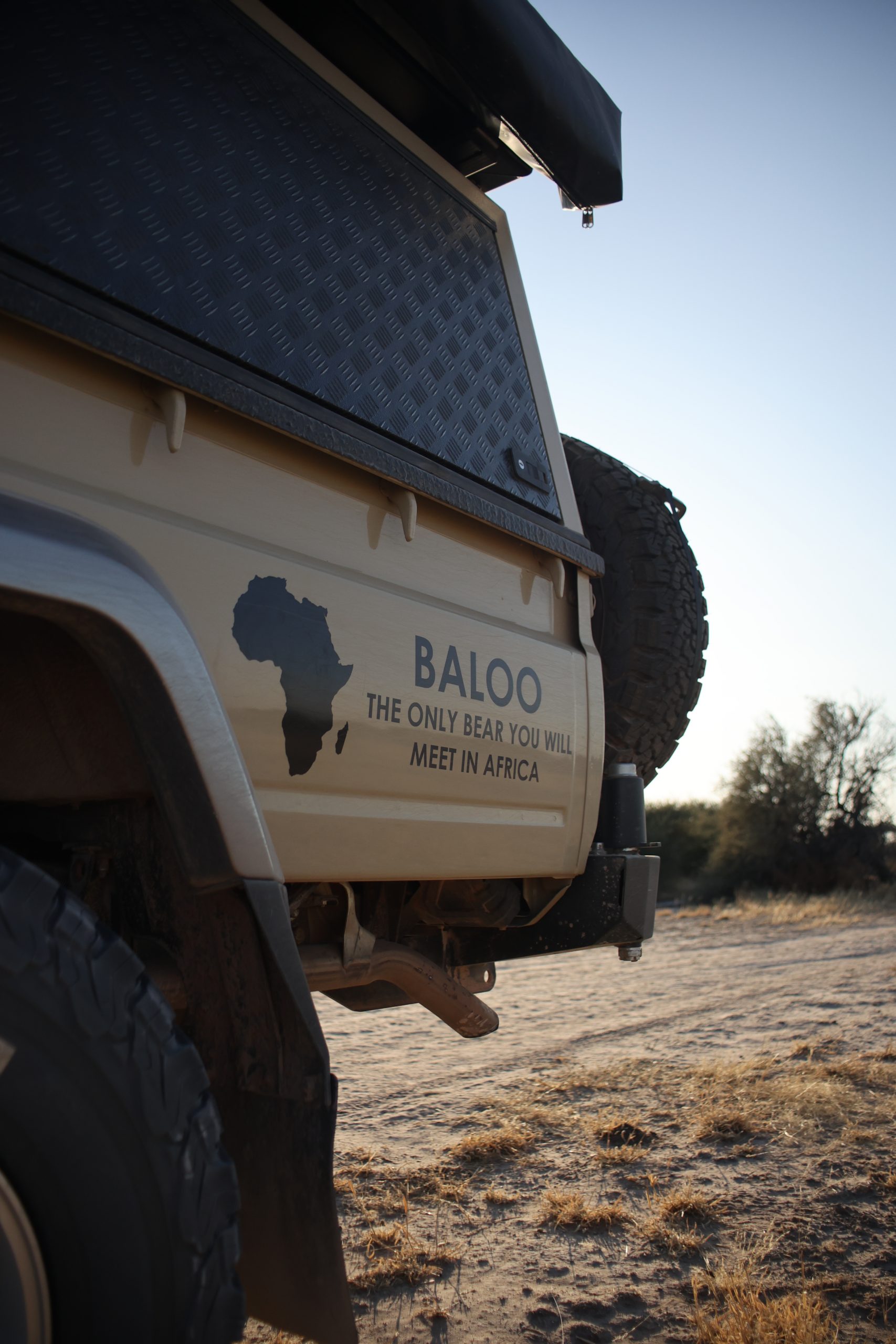
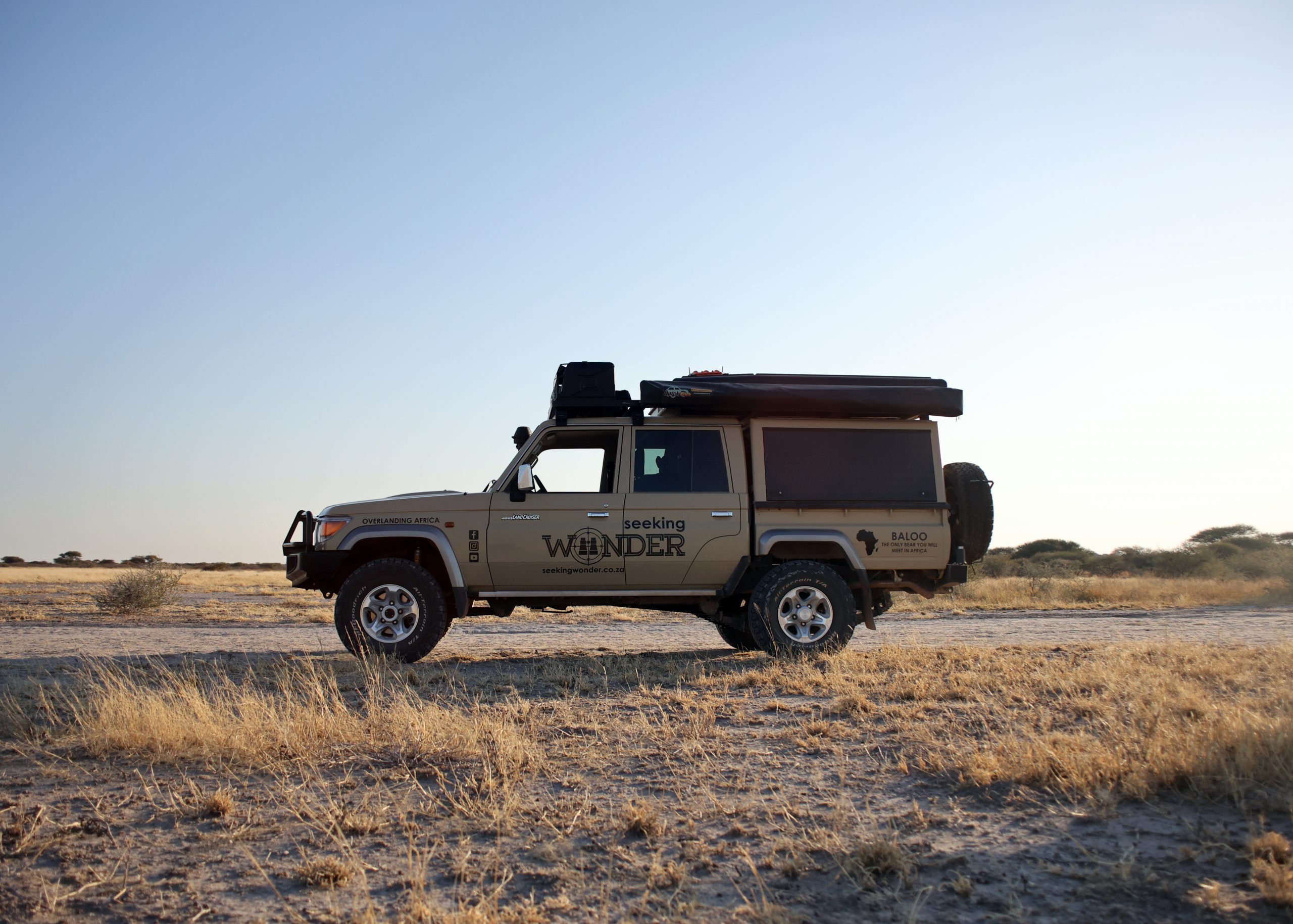
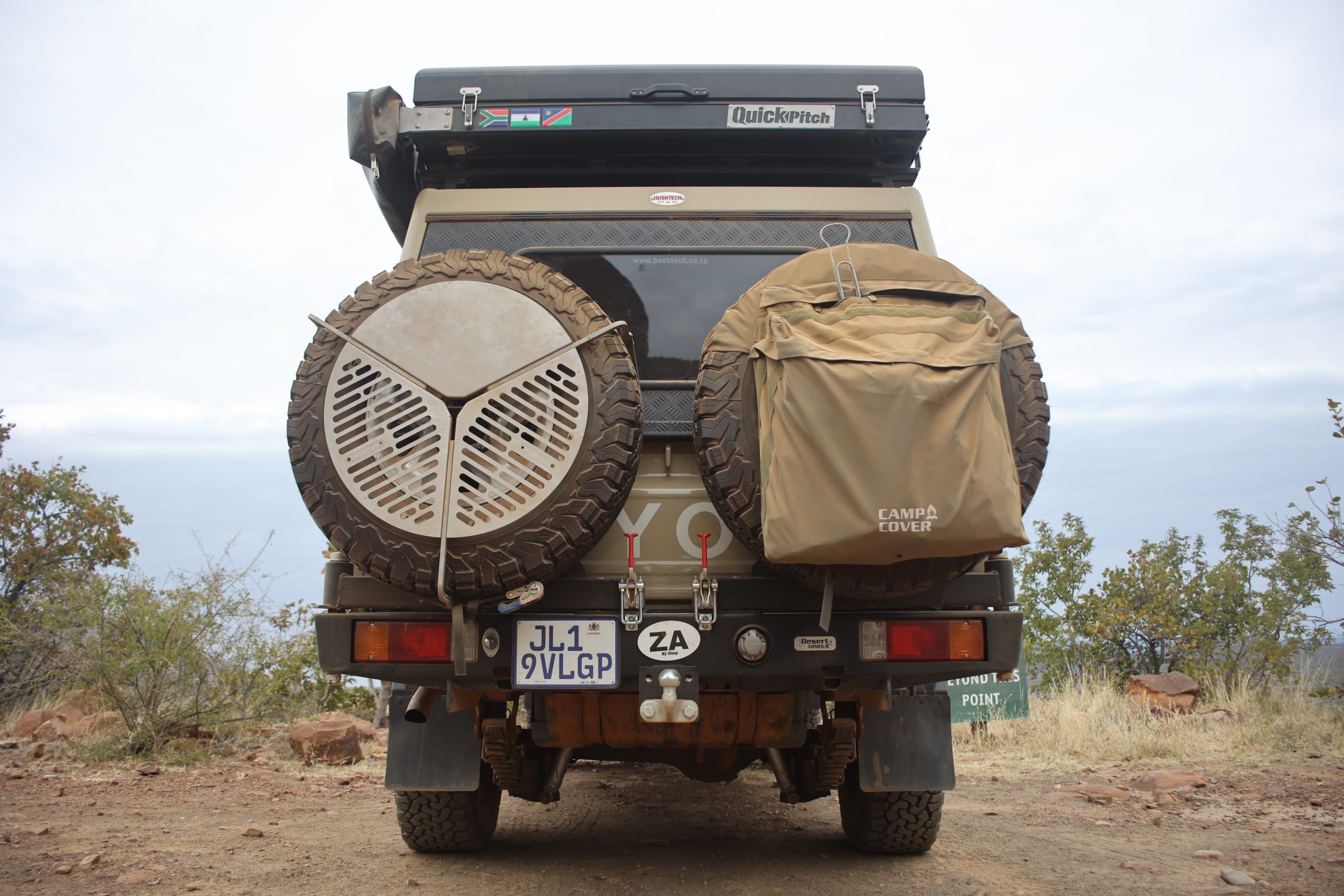
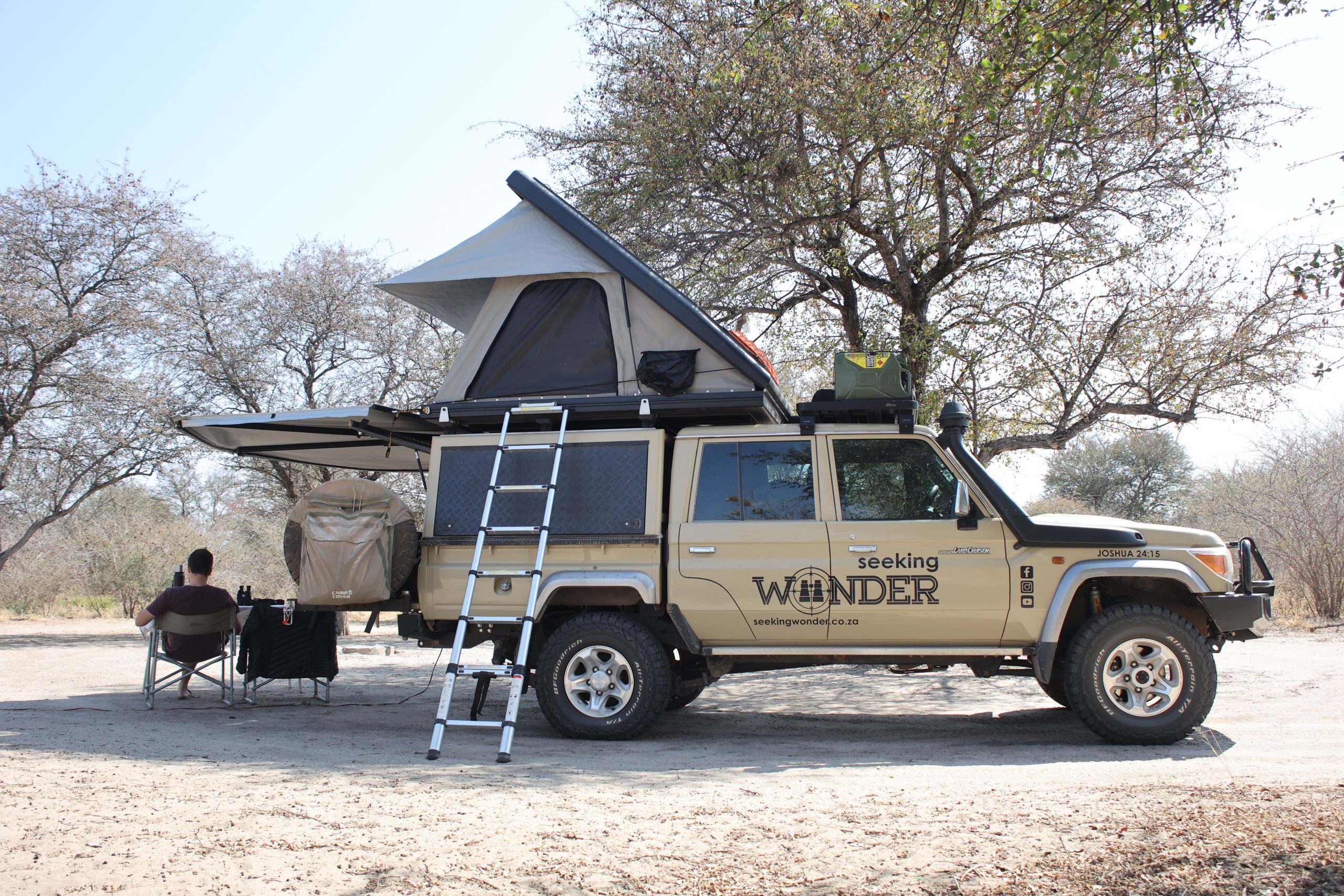
5. Awesome awning
Another item that was delayed by some time on our list. We always trusted in the good old gazebo, and still believe this has its place for weekend or holiday trips. For our mobile home setup, we opted to add the Quickpitch 270° awning, mainly as it easily bolts to the tent and is a good value for money option to keep you out of the rain and sun. The zip-on side covers can create a cozy tented space joined to your vehicle or enable you to light the Cadac in the West coast wind. However, the pricetag of this add-on was too much to stomach so we made our own ripstop side covers for a fraction of the cost.
6. Do you even lift?
We intentionally kept the replacement of suspension for last until the vehicle was fully loaded. Or at least, this is our excuse when in reality we only delayed the painful cost. The factory-fitted suspension system is very strong and rated to carry +/- 1 ton load, which is fine when done every now and then. However, the rear leaf packs are also notorious for sagging when loaded heavily. After completing a few trips with all our overlanding paraphernalia and looking like a Beitbridge-bound Hiace, we decided it would be best to upgrade to something that can support the inherent heavy loading of our overlanding setup well and on a permanent basis. After much deliberation we settled on Tough Dog’s Extra Heavy Duty leaf springs, front coil springs and 41 mm foam cell shock absorbers. To date we have been very impressed. No more sagging at full load and the two-inch lift that comes as a by-product certainly helps when you are in the sticks. The ride quality is perfect when loaded and not bad at all when unloaded – city smooth ride quality is not a top priority for kidney crushing Cruisers anyways.
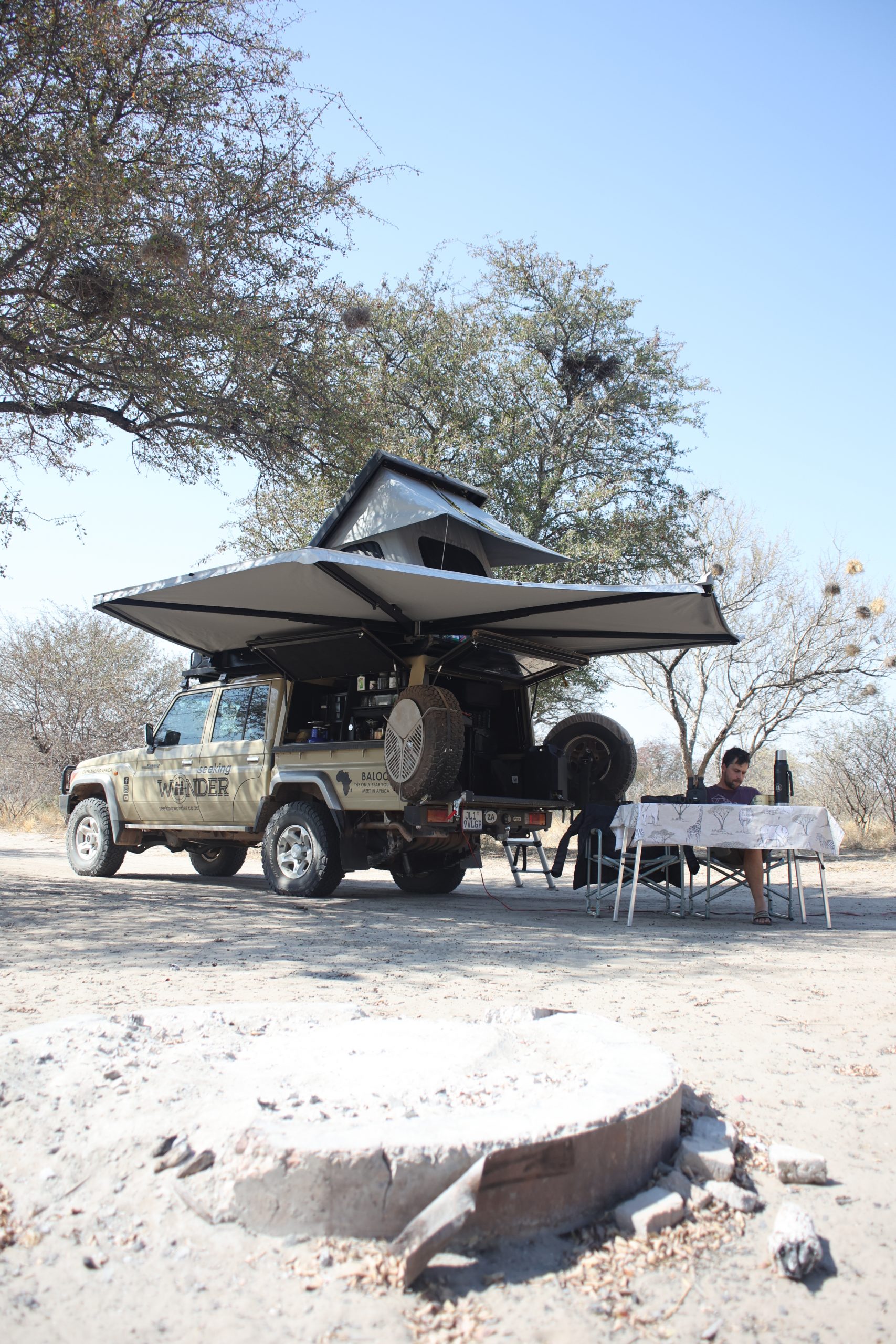
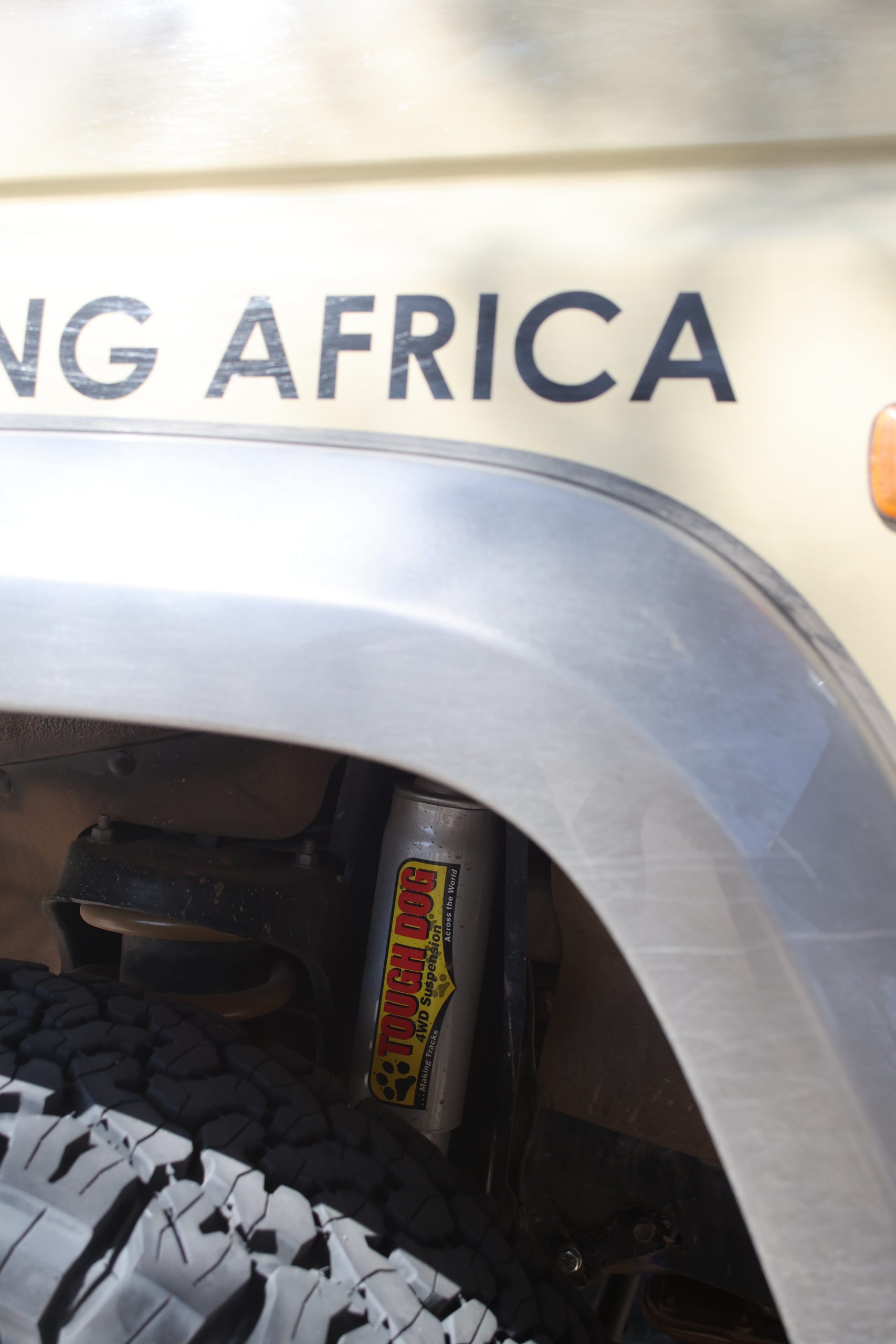
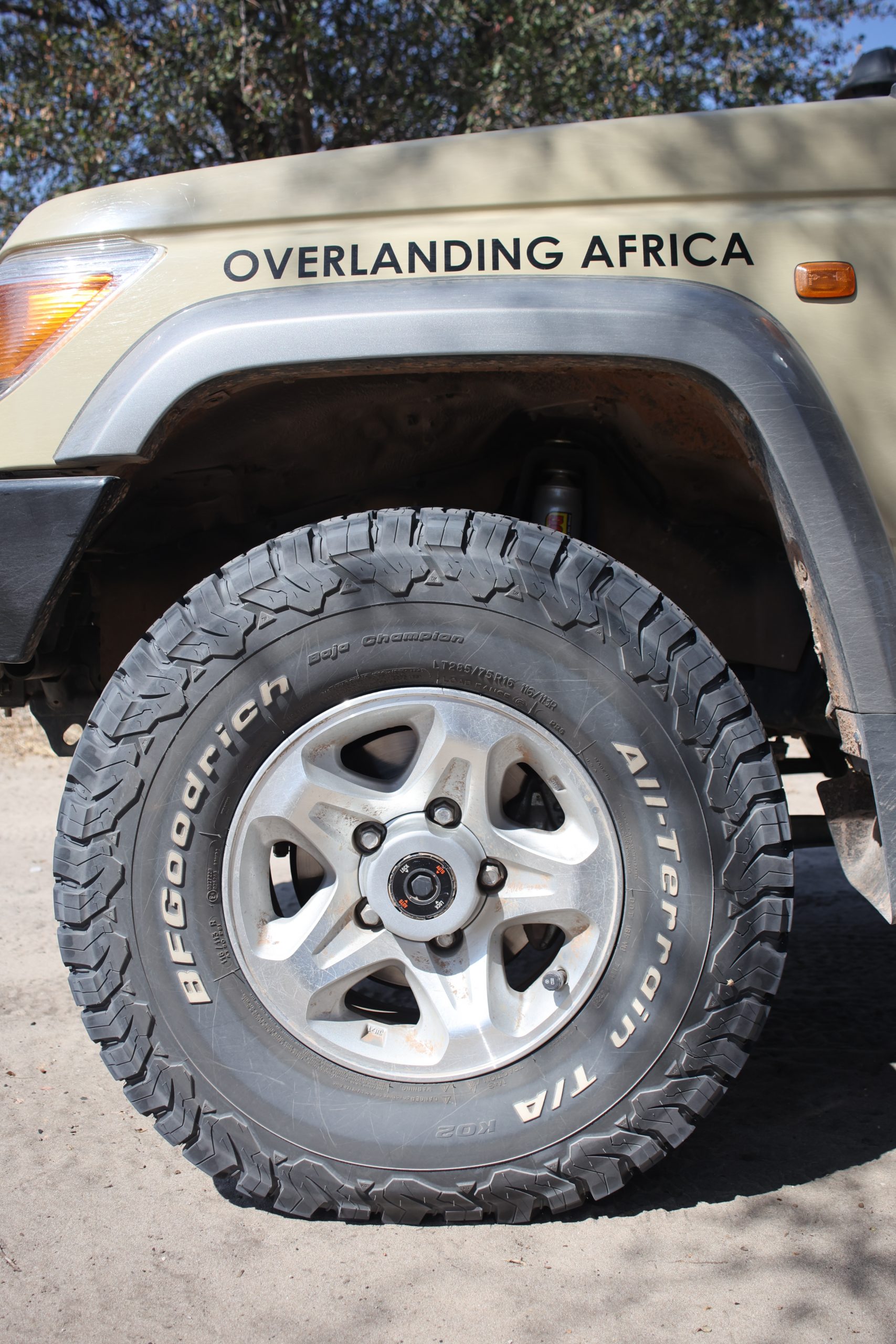
7. Going to tekkie town
Proper tyres should be rather high on the to-do list when venturing off the beaten track. We used the factory-fitted Dunlop Grandtreks for about 40 000 km and they did well with only three punctures and one sidewall write-off. In the process we also learnt the hard way that a second spare tyre is a good insurance policy. We decided to upgrade Baloo’s tekkies to the tried and tested BF Goodrich All Terrains in the fairly widely available 285/75 size. We kept the original 16 inch Toyota rims due to their good strength. Unfortunately, about 50 000 km in, all four BFGs developed sidewall cracks (no, we did not deflate them too much..). The folks at BFG did come to the party by crediting us for the remaining tread. The fact that BFGs seem to prefer higher pressures due to their stiff sidewalls and yet is marketed as the perfect all-terrain tyre for applications where lower pressures are required still seem to be a bit of a paradox to us. For now, it seems as if their life are simply significantly reduced if you are going to spend most of your time off the tar.
8. It’s on top
In an attempt to blend in with African traffic and its famously overloaded vehicles, we invariably carry some bulky items on the roof. After not having fun wrestling jerry cans from deep within the canopy on previous trips, we now carry four jerry cans of diesel on the roof despite its non-ideal location. This gives thirsty old Baloo some extra range when we need it. Between them is an open anything-goes Westpack crate, ideal for carrying wood, heating bush shower bags or for nesting storks if they can find space. We bolt all of these to a single cab Front Runner roof rack. On top of the tent we have bolted our Max Trax recovery tracks using homemade steel spacing bars. The tent itself used to be mounted on Front Runner load bars with six support feet, all six of which failed within its first year. Since then, we replaced the system with full-length Quickpitch load bars and life has become a lot better – no issues at all! We currently carry spares of these until we can replace them with a better more reliable product.
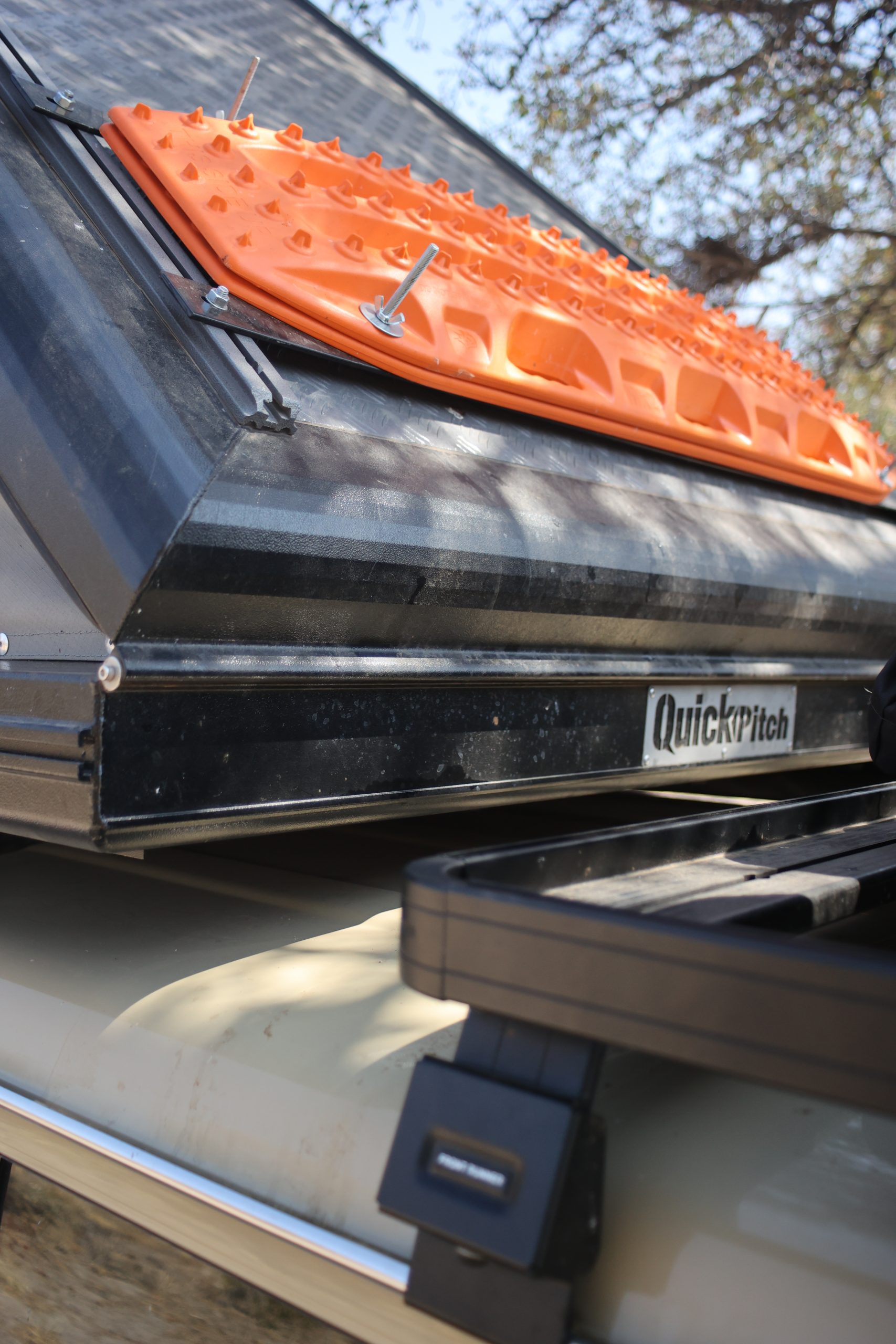
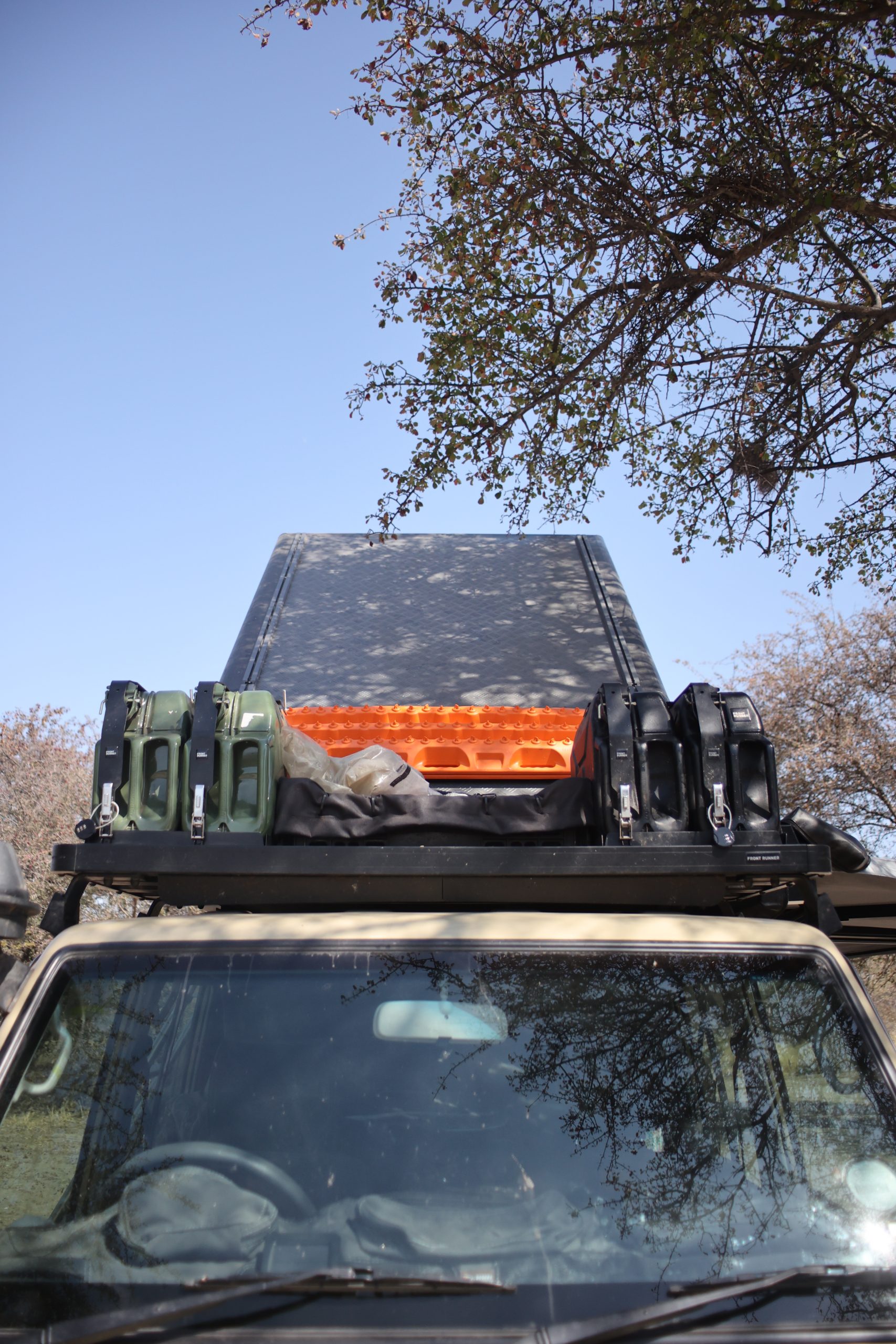
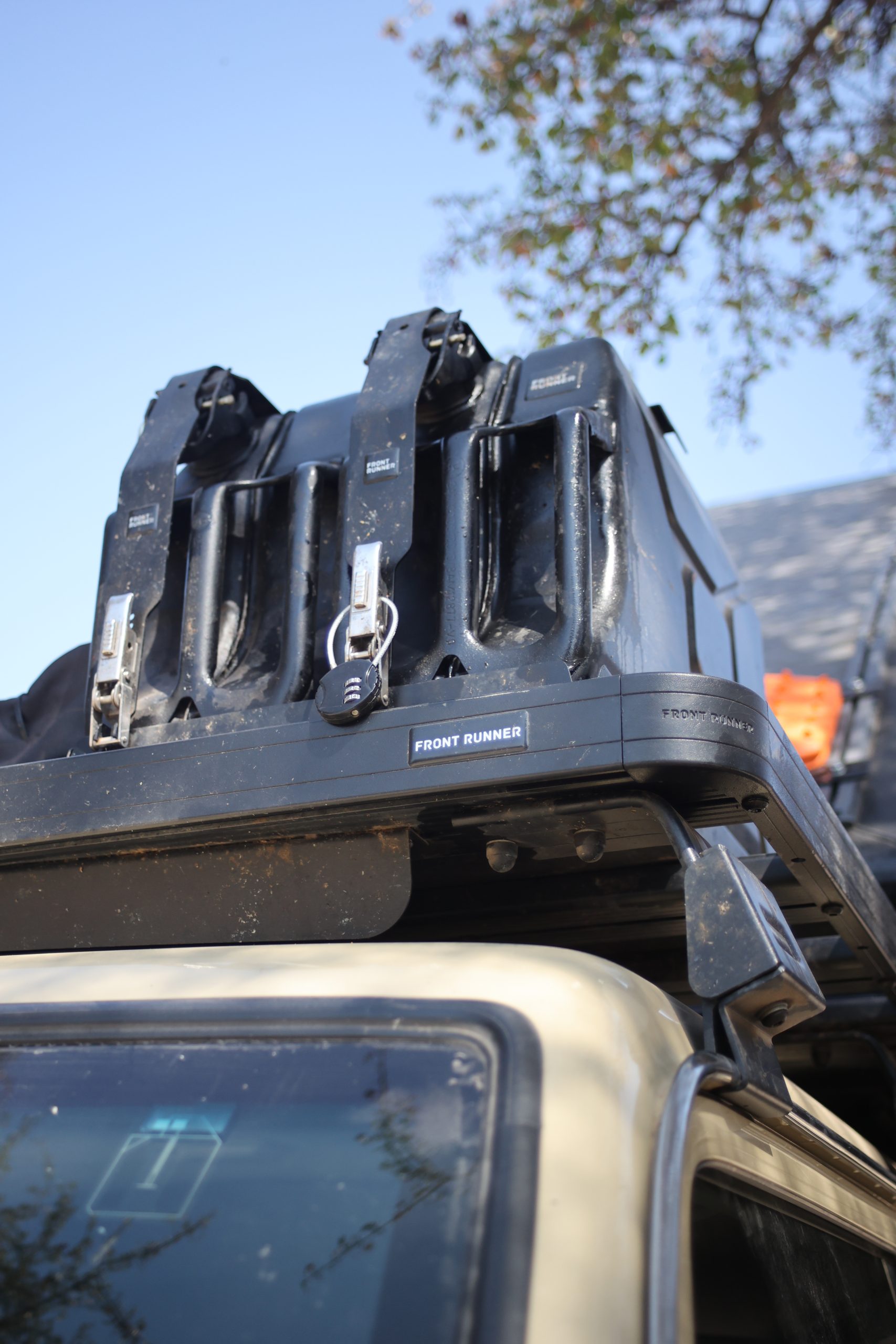
9. Party at the back
We chose to add a Camp Cover spare wheel bag onto one of the spare tyres. This is a handy heavy-duty bag that keeps dirty and dusty items outside such as rubbish or extra wood. We strapped a Front Runner braai grid to the other wheel to save interior space.
10. A swift recovery
Even Land Cruisers get bogged down in rough country. Unlike Jeeps however, they are usually recovered without using a flatbed truck afterwards. Baloo carries a few basic tools needed for most recoveries such as a set of Max Trax, a snatch strap and bridle with shackles, a normal and hi-lift jack with baseplate, and a spade. We also carry an ammo crate of basic tools, spanners, filters, wiring, tapes and suchlike to help ourselves out of the dwang when needed.
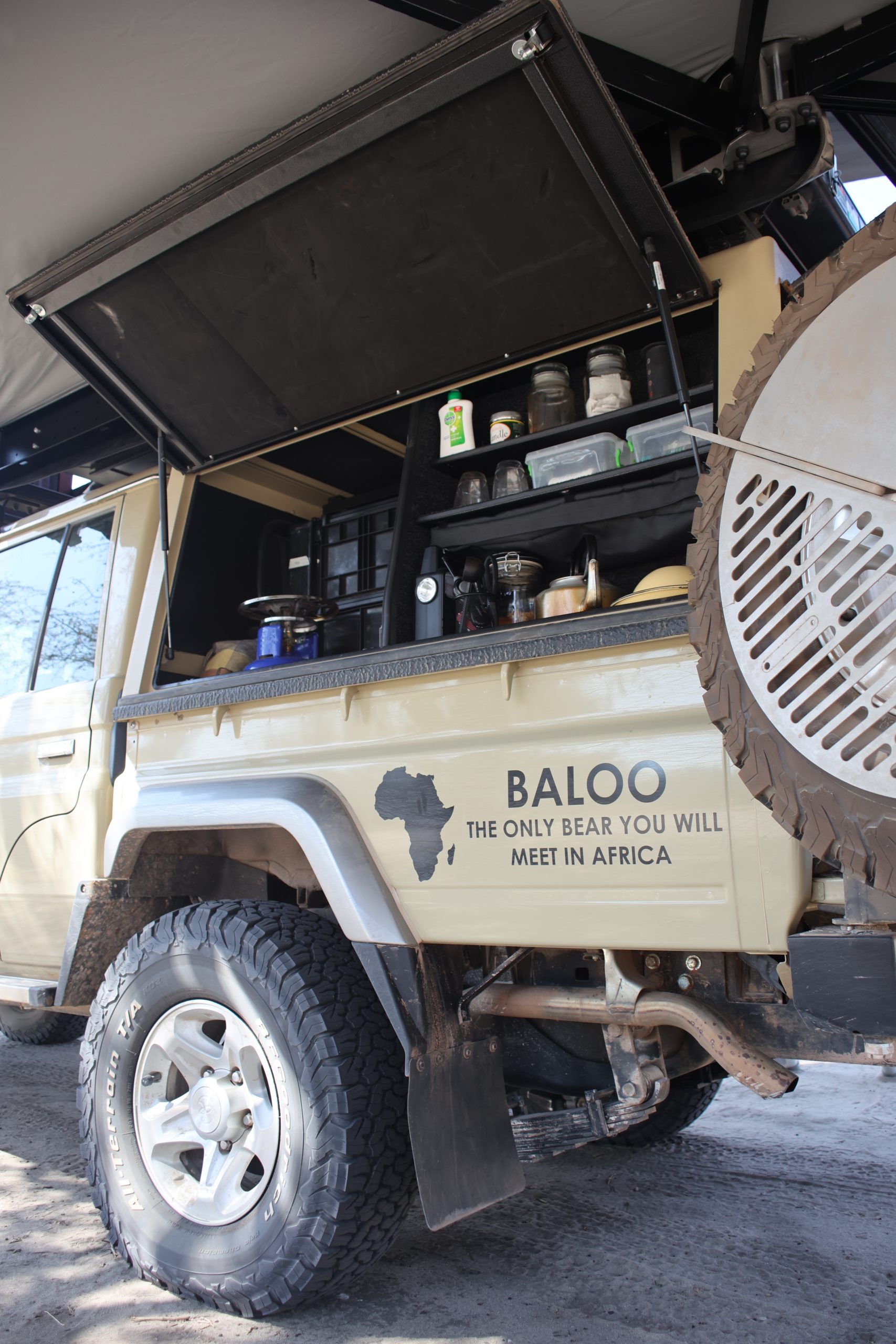
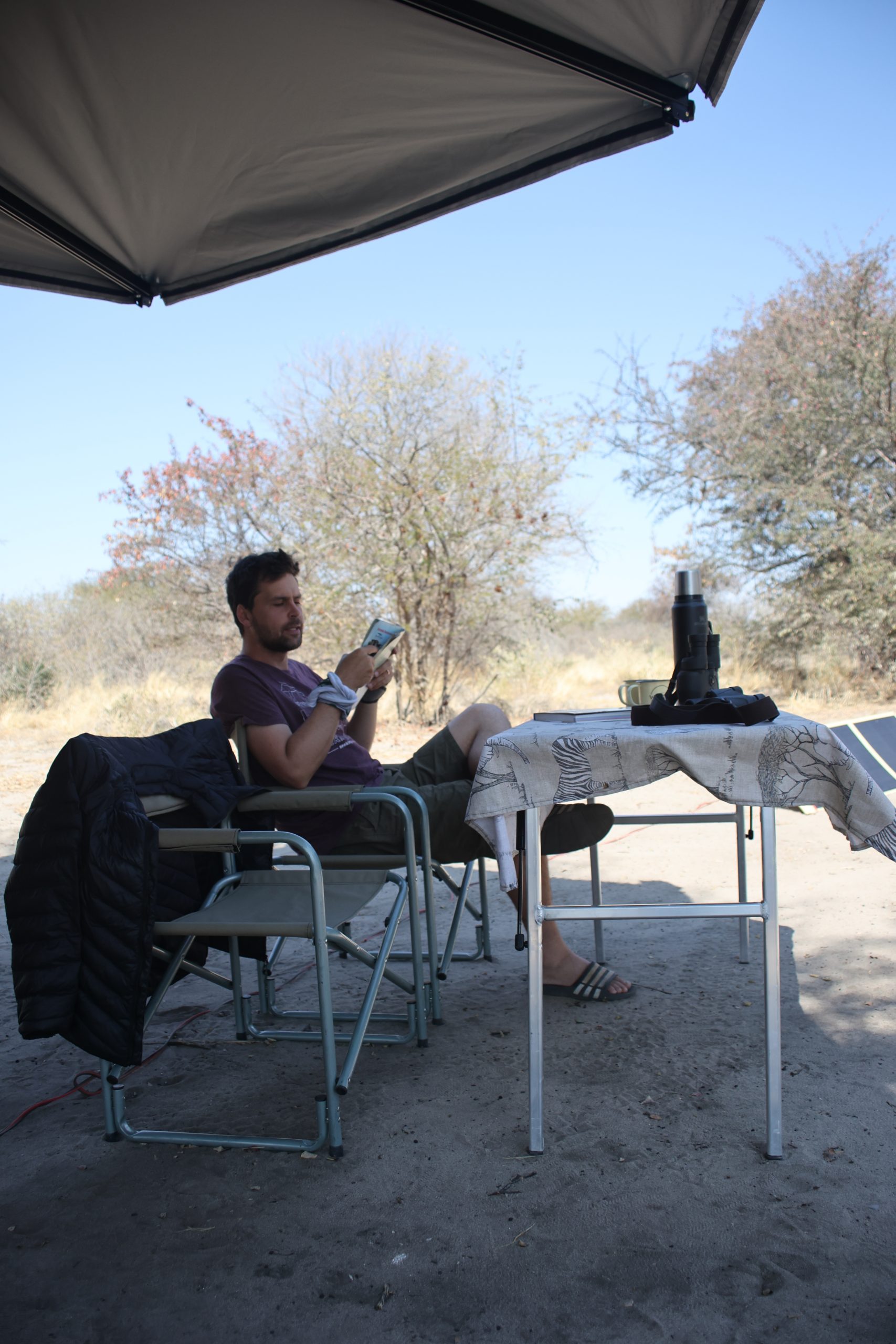
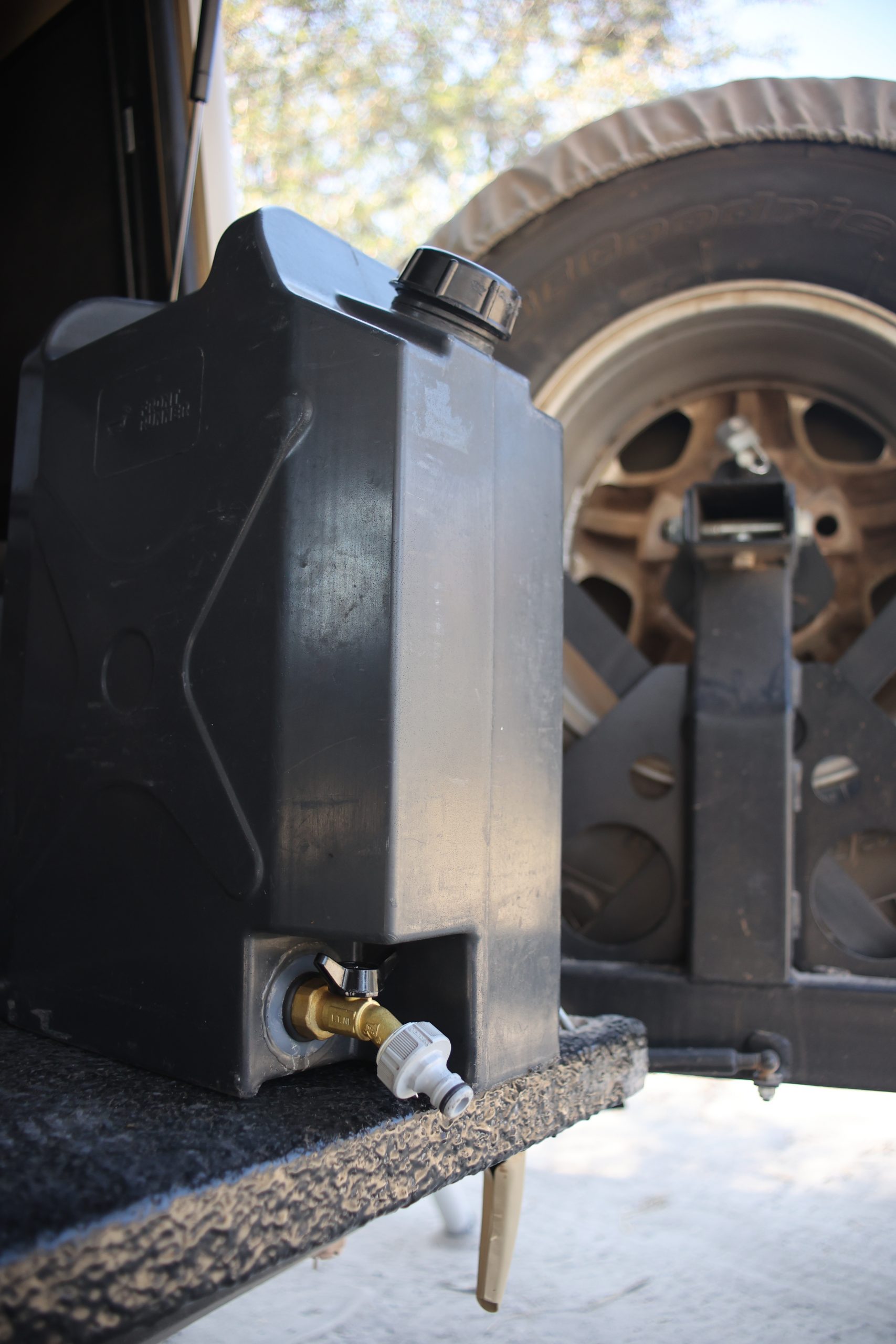
11. The kitchen is open
As a luxury item we installed Bushtech’s kitchen insert into the canopy to keep our lives organised. We made our own carpeted footprint cut-outs of our most-used items to keep everything in its place and as a bonus we get to play a fit-the-shape puzzle every day and relive our pre-school days. We also mounted a cutlery roll to the back of the kitchen to be permanently and easily accessible. Accessed from the back we have our trusted Engel 45L freezer, the Cruiser of camp fridges as far as we are concerned. This guy has shaken, rattled and literally rolled (once, onto its head) for more than 20 years and is still going strong. We keep it simple and avoid any fancy railed drawer systems that attract further weight and potential issues. Our pantry comes in the form of two state of the art Westpack plastic drawer racks that work perfectly. We carry a 50-liter Outdoor Warehouse water container between the wheel arches, fed via good old gravity and a homemade hose and tap system to the back. In addition, a 20 liter plastic jerry can with integrated tap tops this up for when we need more water carrying capacity. Two 3kg Cadac gas bottles ride within easy reach and last us about 8 weeks at a time. We carry a simple aluminium Bushtech table that slides into otherwise unused space directly under the canopy roof. Our outspanning setup is rounded off by Natural Instincts director’s chairs that fold neatly, looks neat and is amazingly comfortable next to the fire under a million stars.
12. Tetris is a thing
Nowhere is space more valued than in an overlanding Cruiser. Even after an item has passed our test of having at least three uses, it must still find a home. Baloo’s canopy space is organised efficiently by the use of Bushtech’s rifle box and rails (we dubbed it the vark troggie) that fits six ammo crates neatly on top of it whilst still providing space underneath. We decided to make our own interior living space by removing the double cab’s back seats and then designing, modelling and building our own decked DIY backseat cupboard. After roughly one thousand design iterations, we settled on the final version that effectively uses the space volume and includes sizable and lockable sub compartments for clothes, books and gear, as well as various 12V power points run from the auxiliary battery. We used laminated pine and covered it with vehicle carpeting, bolted them together with (118) angle brackets, and rounding it off with homemade zipped ripstop covers with various pockets for loose tjirtsies such as sunglasses, caps, torches and last-minute cookie jars. After adding a multi-pocketed dashboard cover, removable backseat covers for toiletries, and pocketed Caprivi seat covers we can safely say we are close to exhausting every usable cubic centimetre Baloo has on offer.
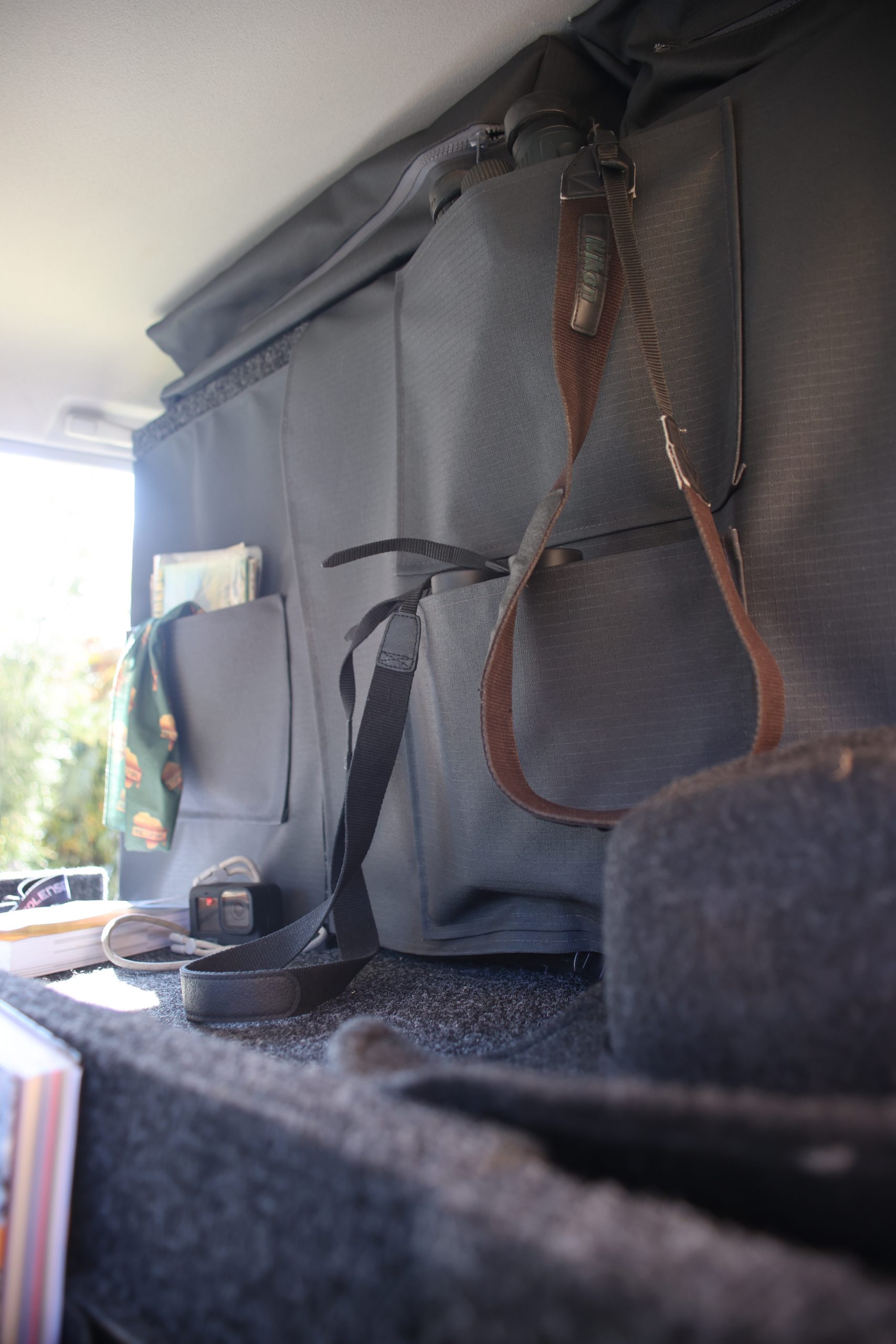
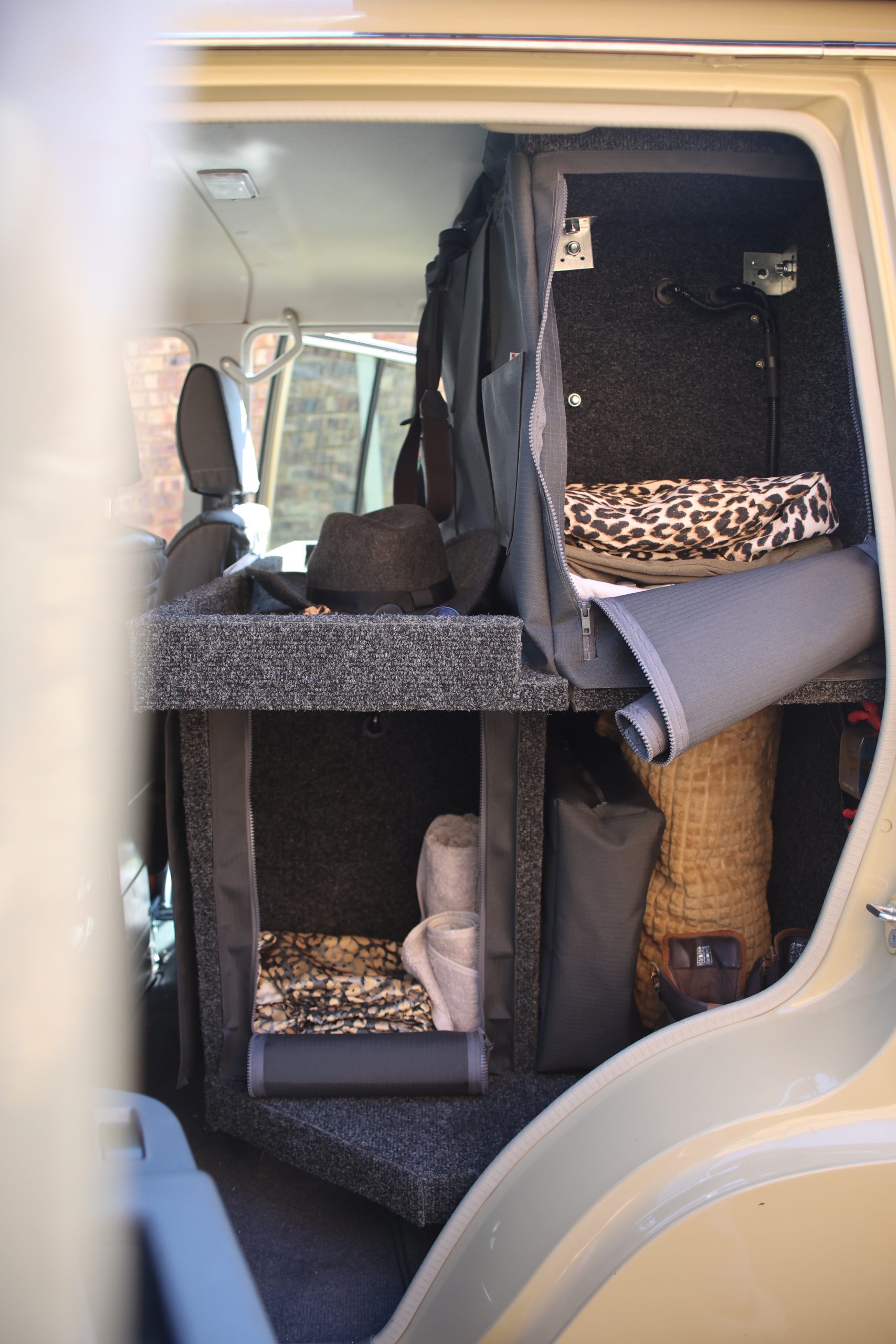
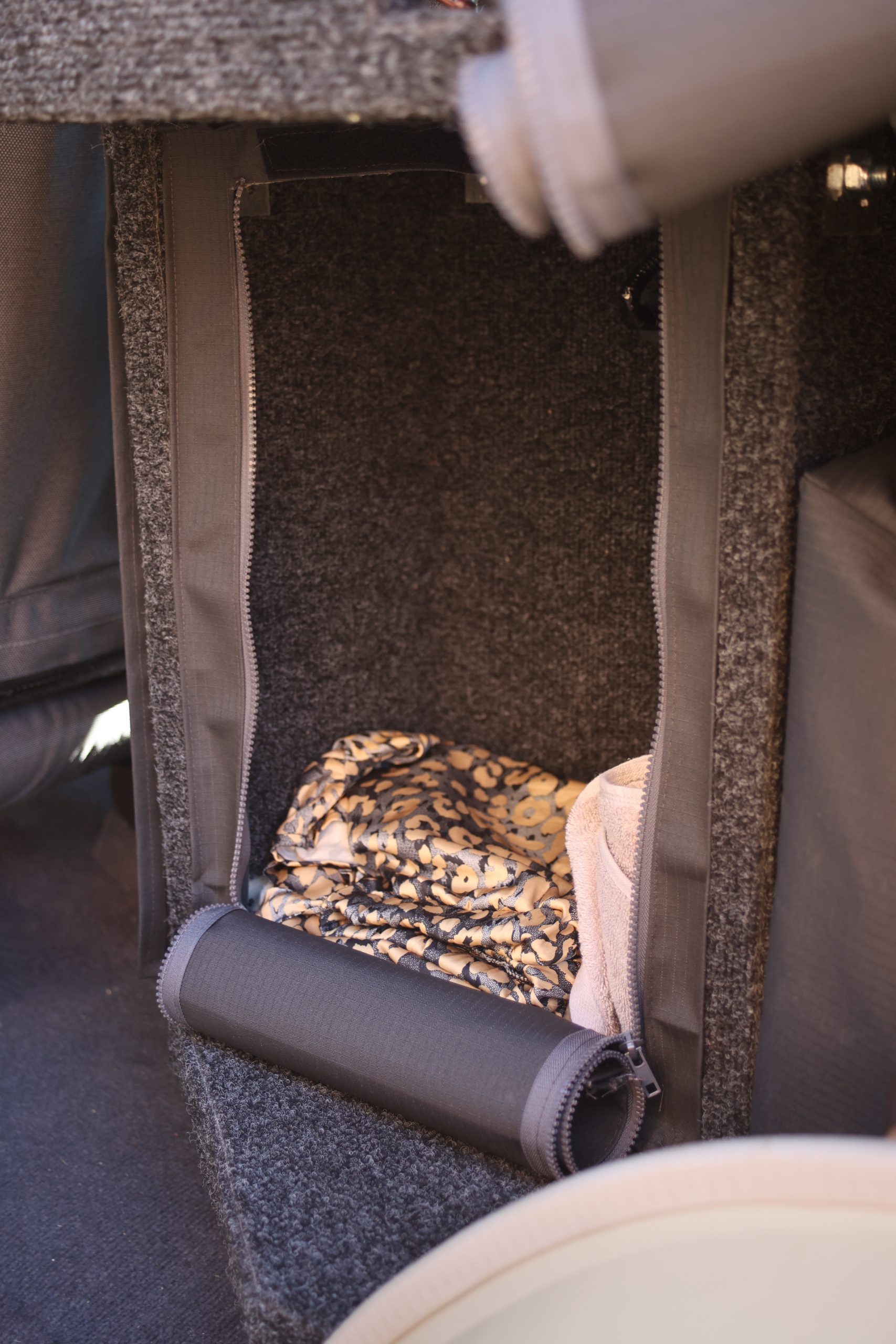
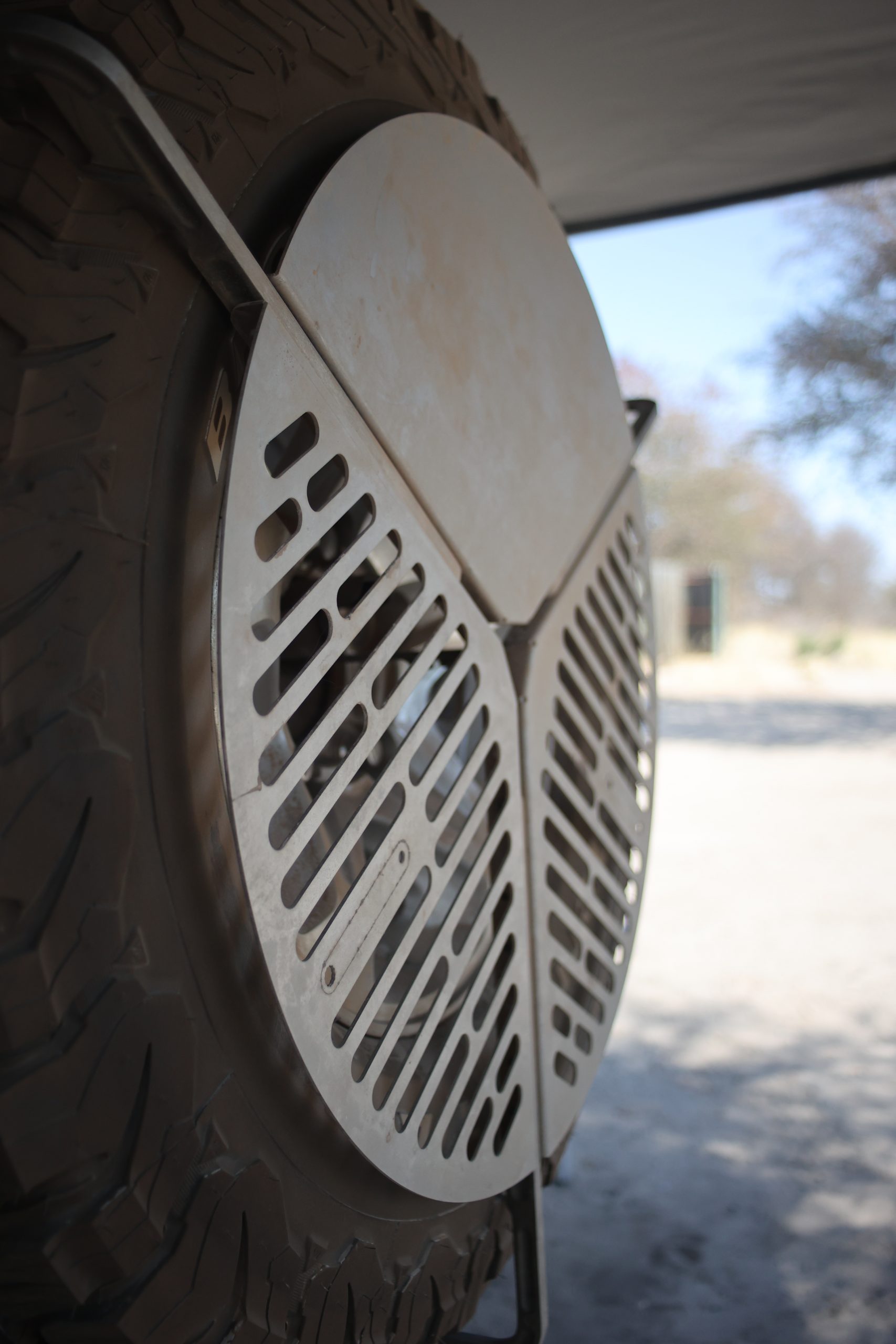
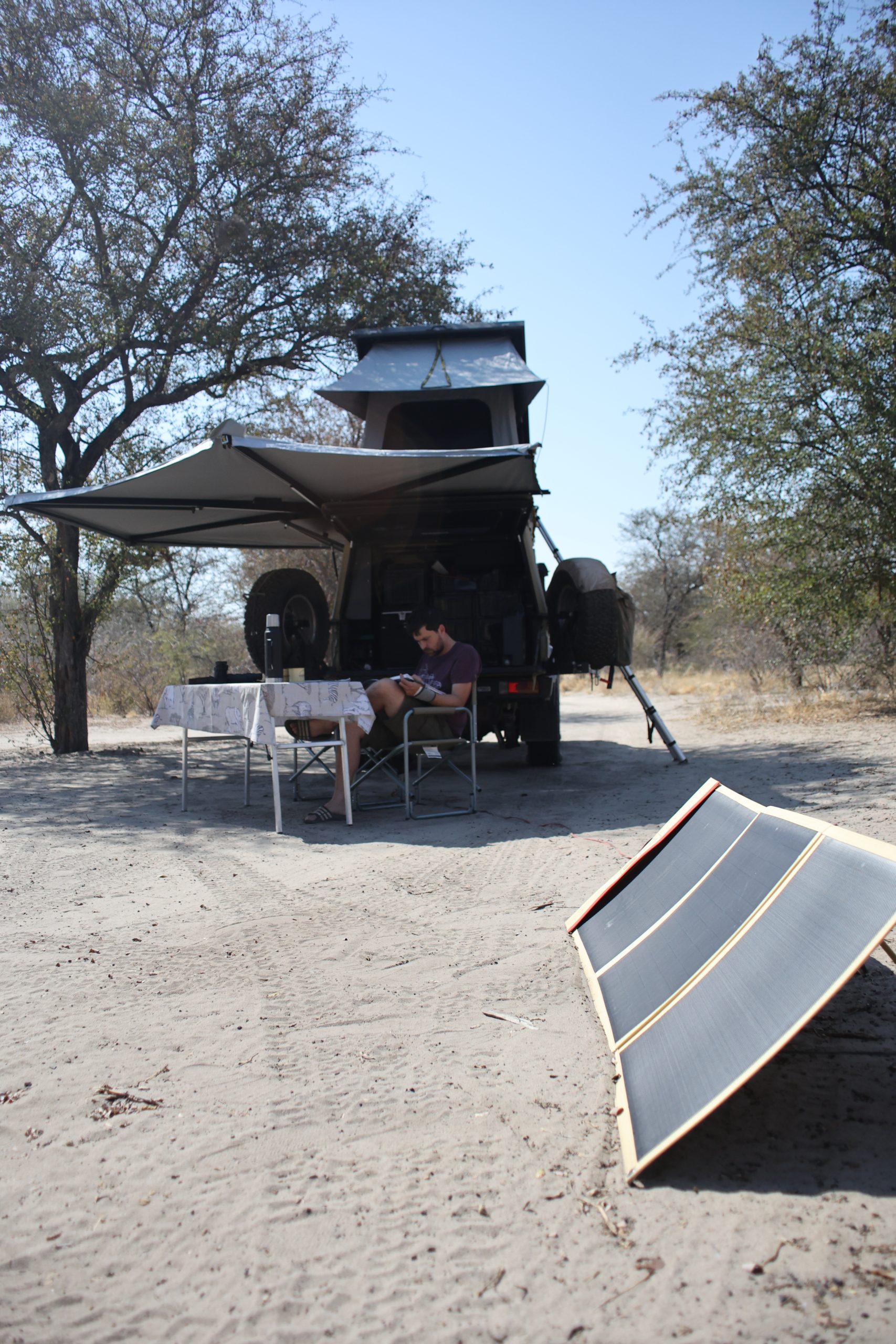
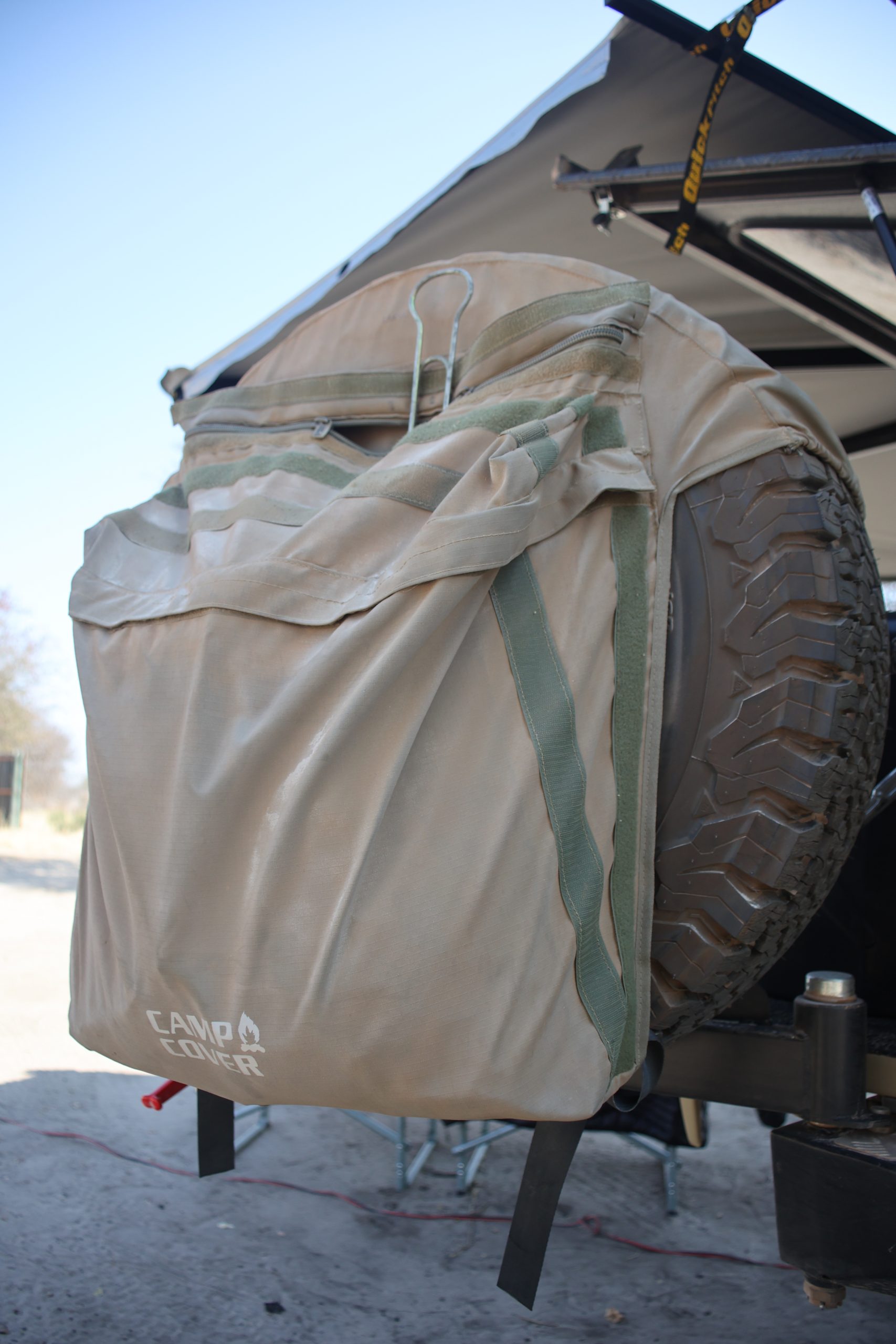
13. No Eskom no problem
After dabbling with various ways of running our fridge and occasional auxiliaries over time, we installed the National Luna 25A Green Box a few years ago. Housing a standard auxiliary deep cycle battery, it has an integrated DC-to-DC charger that keeps the battery topped up correctly from the alternator (via the main battery) when driving. It also has a built-in regulator for direct solar power input. Its simplicity of use is a pleasure. We run our fridge directly from it, as well as various fused extensions for small power use. We try to keep things 12V as far as possible, charging all electronics directly from 12V points with suitable step-up transformers. When absolutely needed, we carry a 300W portable inverter to complete the band and add some AC to the DC so to speak. To keep our battery happy when we stand for too long, we use a FlexoPower 150W Namib portable solar PV panel.
14. Gearing up and heading out
We use gear that has served us well over years on our adventures. If any of these brands read this and would like to give us free things to reward our loyalty, we will be willing to oblige under protest. We use Canon camera equipment and Sigma and Canon lenses when dabbling with photos. Our humble video skills are being expanded with the GoPro Hero 9 and DJI Mini2 drone. We discover the world of birds using Canon and Nikon binoculars as well as the Roberts Bird app. Similarly, the South African Tree app helps us identify the most beautiful plants and trees around us. Our hiking arsenal consists of well-travelled security guard boots, the Gaia GPS app, various bits and bobs and a Naturehike hammock and sleeping bags. Our fly fishing gear includes various 3-9 weight rods from TFO, Stealth and Explorer, reels by Shilton and Explorer, a range of Scientific Anglers and Rio fly lines in various sink rates and tapers, and a plethora of flies under continuous development from the vice or stolen from friends. Our coffee addiction is fuelled by AeroPress. Lastly, since our musical escapades are kept up to date on the road, Deo uses Vic Firth drumsticks and practice pads while Simoné uses a ukulele named Franklin.
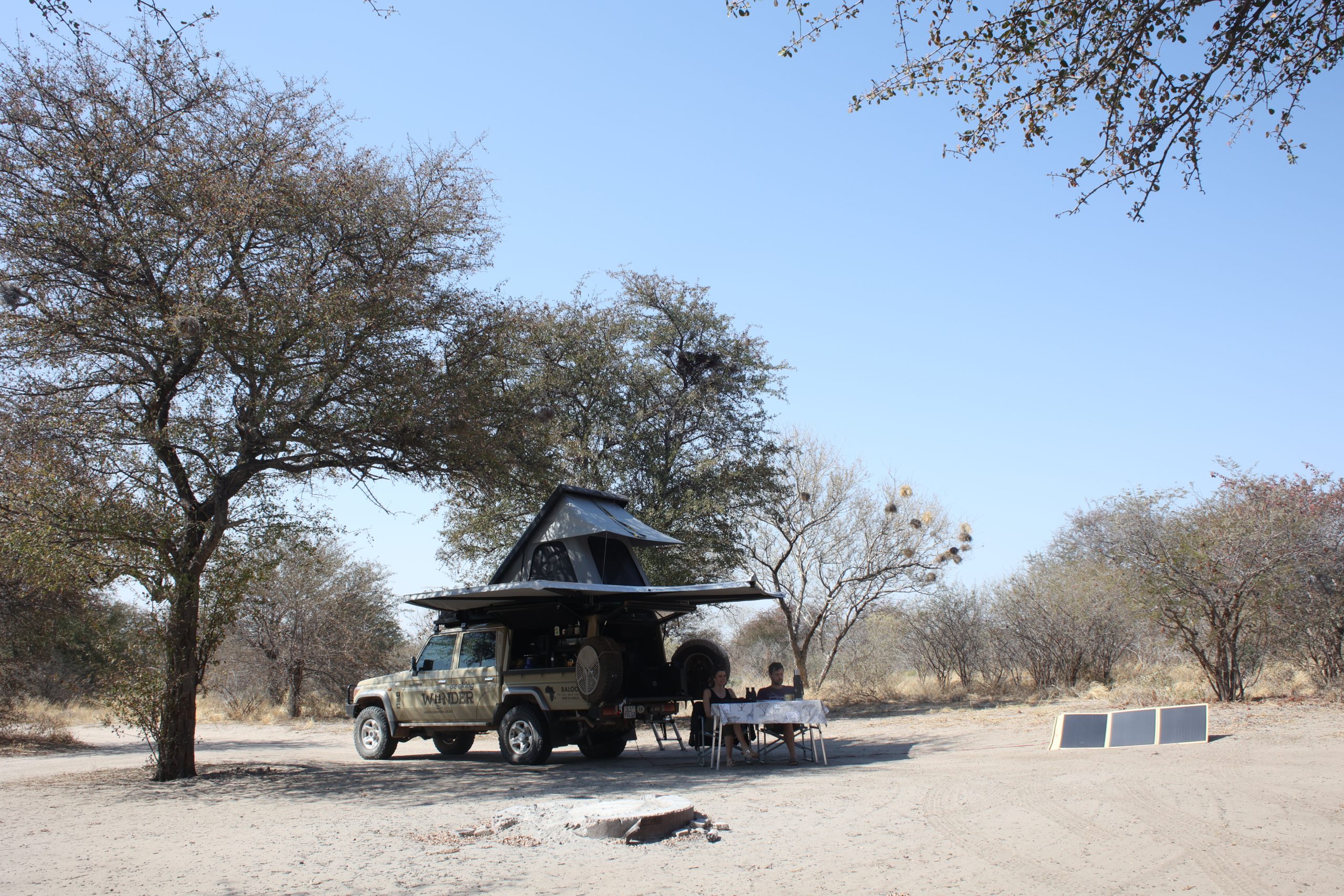
15. The experts
We cannot complete a write-up on Baloo without acknowledging the experienced folks that we consulted in the process and helped realising our dream vehicle. Our friends Retief and Desireé van der Reyden of Wild Dog Photography listened to our many questions and kindly offered their tried-and-tested advice from the field. The larger fitments were done by the experienced workshop at the Voetspore 4×4 centre. Simoné’s parents kindly sweated with us to build our bulletproof backseat cupboard system. Kourt from Tyremart Centurion sourced and fitted our tekkies efficiently. Our own branding designs were printed and beautifully applied by Silver Signs. Lastly, a huge thank you to everyone not named who offered their advice and assisted us throughout the process.
There is no such thing as the perfect setup. There is however such a thing as a setup that makes you happy doing the things you love. We hope our humble gear rundown answers some questions or offers a slimmer of inspiration to those thinking of seeking their own wonder out there.
Look for the bare necessities, the simple bare necessities, forget about your worry and your strife.
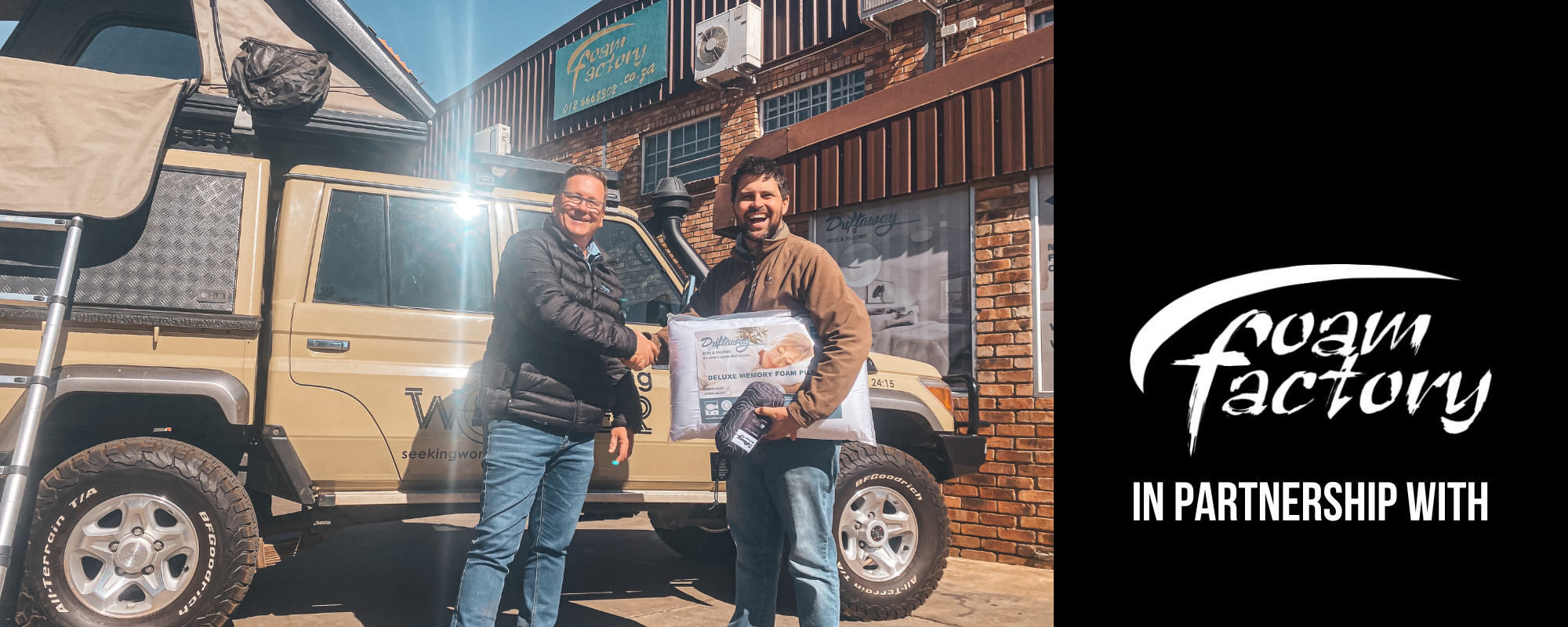
PAID PARTNERSHIPS:
We are really excited to be in partnership with Foam Factory for our custom RTT high-density mattress, memory foam pillows and adventure foam products!
To find out more about Foam Factory or Driftaway Beds and the products they offer, visit their websites here:
Or find them on social media!

